


Dedicated to the employees, partners, and customers of Boyle Investment Company and Boyle Insurance Agency in Memphis and Nashville.

published by 2023










Vision and o t her Boyle Pro P e rties




Dedicated to the employees, partners, and customers of Boyle Investment Company and Boyle Insurance Agency in Memphis and Nashville.

published by 2023










Vision and o t her Boyle Pro P e rties
These are the traits that make up vision. They are the traits that can transform a landscape, and they are the traits that deliver lasting value and sustainability. And they are the traits on which Boyle Investment Company was founded in 1933 and has built a legacy of visionary development and lasting impact.
The Boyle family and their ancestors have been building community since the early days of the founding of Memphis. Boyle family ancestor John Overton founded the city of Memphis in 1819 in partnership with Andrew Jackson and James Winchester. In 1907, Overton’s great-great-grandson, Edward Boyle, began development of the stately Belvedere Boulevard in Midtown Memphis, which remains today one of the city’s most prestigious addresses. In 1933, Edward’s three sons — J. Bayard Boyle, Sr., B. Snowden Boyle, and Charles Boyle — founded a company based on their father’s dedication to building community with long-term vision.
Bayard Boyle, Sr., president of the growing firm, had a remarkable ability to predict the paths of growth. With an eye for the future, he acquired large parcels in key corridors that would be developed decades later.
Boyle Investment Company’s commitment to building community with visionary projects and long-term ownership has not changed. In fact, the large parcels of land have now been transformed into some of the region’s premier communities — known for their high quality, strict standards, and attention to detail. Today, the company has a strong portfolio of commercial, residential, and mixed-use projects in Memphis and Nashville that have endured the test of time.
In Memphis, Boyle is known for its planning, development, management, and leasing of major projects such as Farmington, Ridgeway Center, Humphreys Center, River Oaks, The Regalia, Schilling Farms, and Spring Creek Ranch. Boyle Nashville was launched in 2001 and has grown to become one of the largest private developers in the greater Nashville market. The firm is recognized for its complex, mixed-use projects such as Meridian Cool Springs, Berry Farms, Capitol View, and McEwen Northside.
We could not have achieved this without the hard work, talent, and dedication of our employees, many of whom have been with the company for more than 50 years. Our depth of expertise is indeed a key ingredient to the high quality of our real estate projects.
Year after year, the news on the street changes and fads come and go. But generation after generation, Boyle remains dedicated to building community with the same value-oriented principles established at its founding.
On the following pages we outline the rich history of Boyle Investment Company.
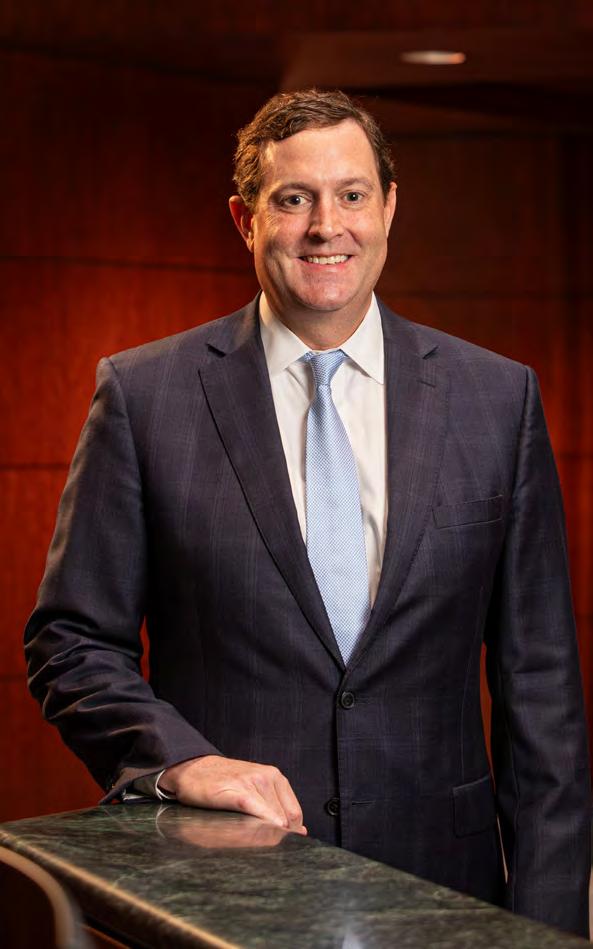
Matt Hayden President and CEO Boyle Investment Company
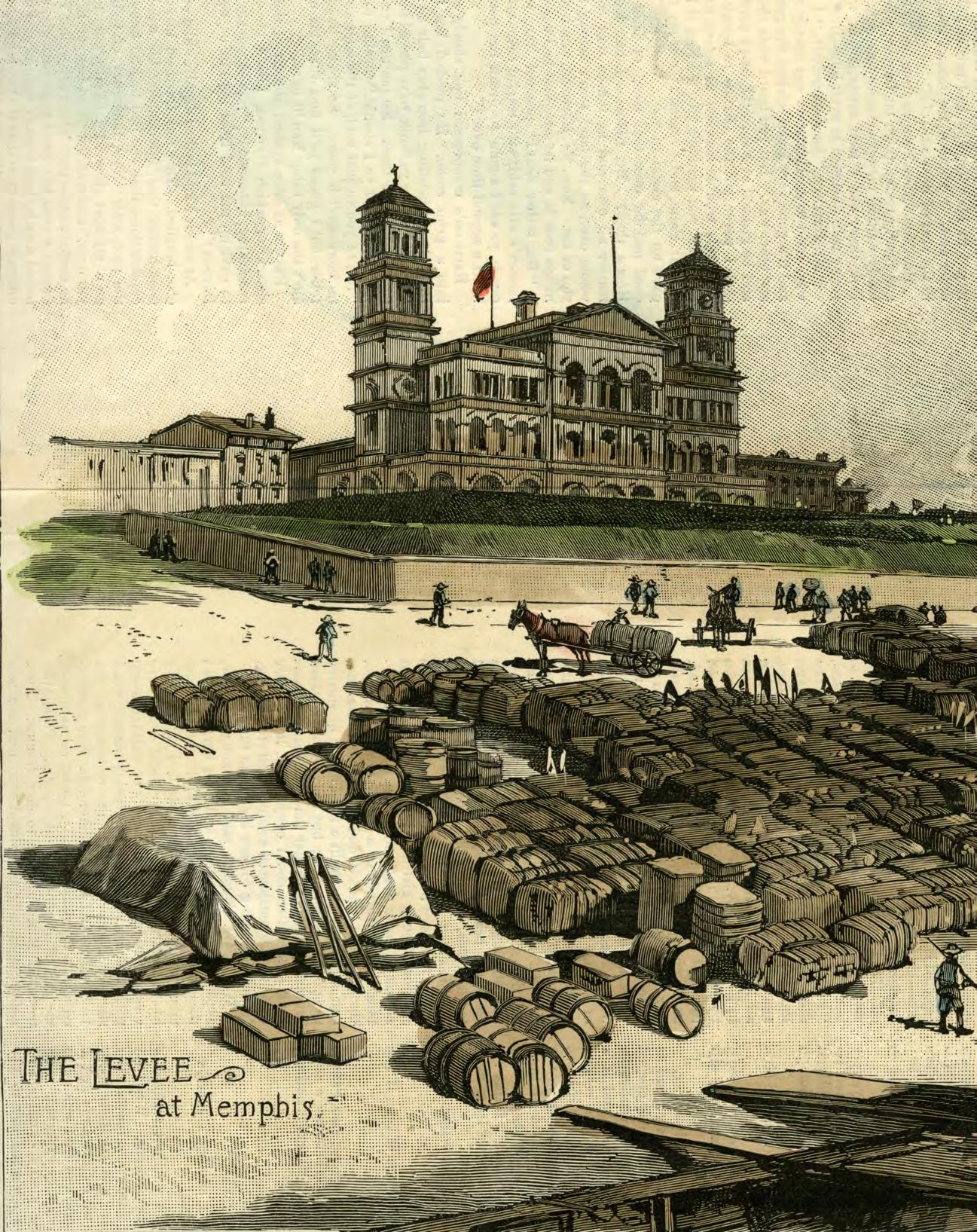
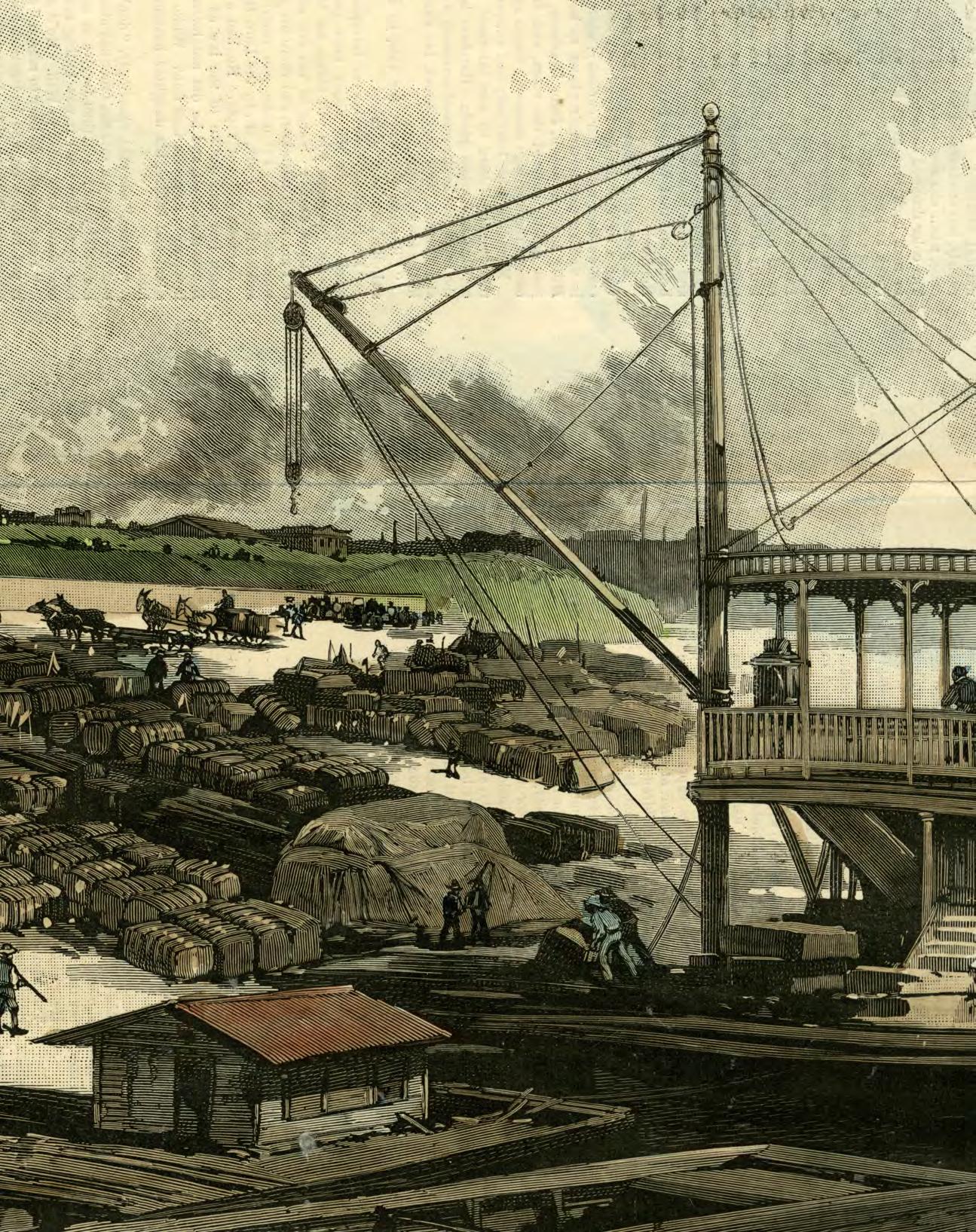
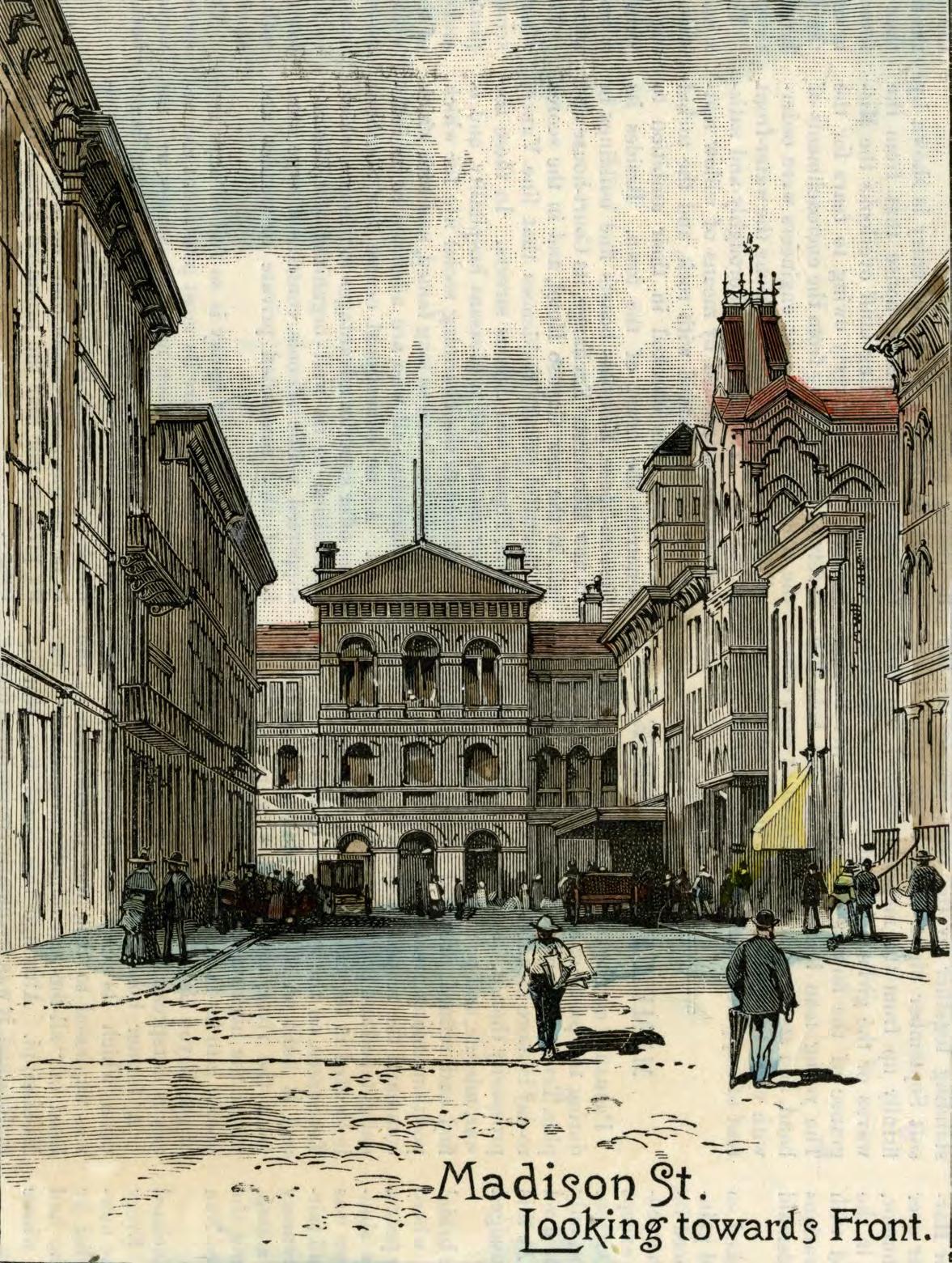
Follow the course of the mighty Mississippi River, from its broad mouth at the Gulf of Mexico, as it twists and turns past low-lying land to the west and high bluffs to the east, and eventually explorers will discover its source — a lake in Minnesota called Itasca. Now, trace the origins of the Boyle family of Memphis, and going back through five generations, historians will encounter one of the most noteworthy men in Tennessee: Judge John Overton of Nashville.
Joining with two influential friends, also from the capital of the newly established state of Tennessee — Generals James Winchester and Andrew Jackson — Overton founded the city of Memphis on the highest of those riverside embankments, the southwest bluff of the Chickasaw nation. Over the years, his descendants would eventually marry and form strong ties with some of the most industrious and farsighted families in the Bluff City — Brinkley, Snowden, Ragland, Morgan, Boyle — to this day, prominent bankers, lawyers, developers, and civic leaders.
OPPOSITE: An illustration from Harper’s Weekly shows the section of Madison Avenue that was known as “Banker’s Row” since so many banks were located there in the mid1800s. At the end of this view, the Customs House stands on Front Street. That building has survived; today it’s the University of Memphis Cecil C. Humphreys School of Law.
As a result of these connections, we come to the present day, 90 years after Boyle Investment Company opened its doors in 1933, and everything has come full circle. Those three men from Middle Tennessee purchased land to build a brand-new city to the west, calling it Memphis, after the ancient Egyptian capital along the Nile. The Boyle family, which traces its ancestry back to Judge John Overton, has helped transform this city into one the founders wouldn’t have recognized, with its major property acquisitions and exciting developments. Meanwhile, they have turned their vision back to Middle Tennessee, reshaping the urban and suburban landscape of our state’s capital.
RIGHT: Judge John Overton, one of the state’s most influential citizens, joined with two of his friends — G eneral Andrew Jackson and General James Winchester — to purchase and lay out the new city of Memphis.

Born October 26, 1869, in Hardeman County, for many years Edward Boyle, the son of Thomas Boyle, helped run the family’s operations there. He enrolled at Princeton University, and after graduation, earned a law degree from the University of Virginia.
Returning to Memphis, he began practicing law while also developing an interest in property sales and development. In 1894, he formed the real estate firm, Boyle & Boyle, with his brother, Charles. Edward married Imogene Snowden, the daughter of Colo -
nel Robert Bogardus Snowden, described by The Commercial Appeal as “a leader in Memphis affairs … and praiseworthy and admirable in all relations in life.”
The company’s offices were located on the second floor of 16 Madison Avenue. They remained
“Three hundred and sixty lots were surveyed, with wide streets running towards the cardinal points of the compass and four public squares. Provision was also made for a spacious promenade along the summit of the bluff for the entire length of the riverfront.”
— GERALD CAPERS
BELOW: The original plan for the new city of Memphis shows a grid of streets arranged along the riverbluff, with four public squares and a promenade.

in the law business for only a few years, until 1906, when they embarked on one of the most memorable real estate ventures in this city’s history — the development of Belvedere Boulevard.
Memphis had been steadily expanding eastward during the late 1800s and early 1900s, with other developers laying out grids of streets lined with handsome residences, from four-squares to low-slung bungalows, in the Annesdale-Snowden and Central Gardens neighborhoods. The two principals of Boyle & Boyle took a
look at a vacant stretch of land between Union and Central, with its distinctive ridge along the western side of the property, and had a grand idea. Selecting the best architects of the city — among them Mahan and Broadwell, Hanker and Cairns, Charles Oscar Pfeil,
BELOW: Harper’s Weekly published this illustration showing how the growing city of Memphis looked from across the river.
and others — they created what the authors of Memphis: An Architectural Guide considered “one of the most impressive residential streets in the city,” in spite of the fact that The Commercial Appeal initially had deemed the project “too visionary to ever be realized.”
Mary Keyes, author of the history/guidebook Belvedere and Other Places, described the new development as “marvelous, wonderful
Belvedere, where lives have been lived out, and history and families have been made, and all in this glorious setting.”
Due to health problems, Charles left the family business, and in 1920 Edward briefly teamed up with another real estate professional in Memphis, Oscar Polk. Their new firm of Polk and Boyle handled smaller residential transactions throughout the city, though noth-
ing on the scale of Belvedere.
As the Depression deepened, three of Edward’s sons – Bogardus Snowden Boyle, John Bayard Boyle, and Charles H. Boyle, Jr. — opened offices in a red-brick building at 148 Monroe, sharing the ground floor with the Western Union telegraph offices. On April 5, 1933, they chartered a new firm that would endure for decades, calling their new venture Boyle Investment Company.
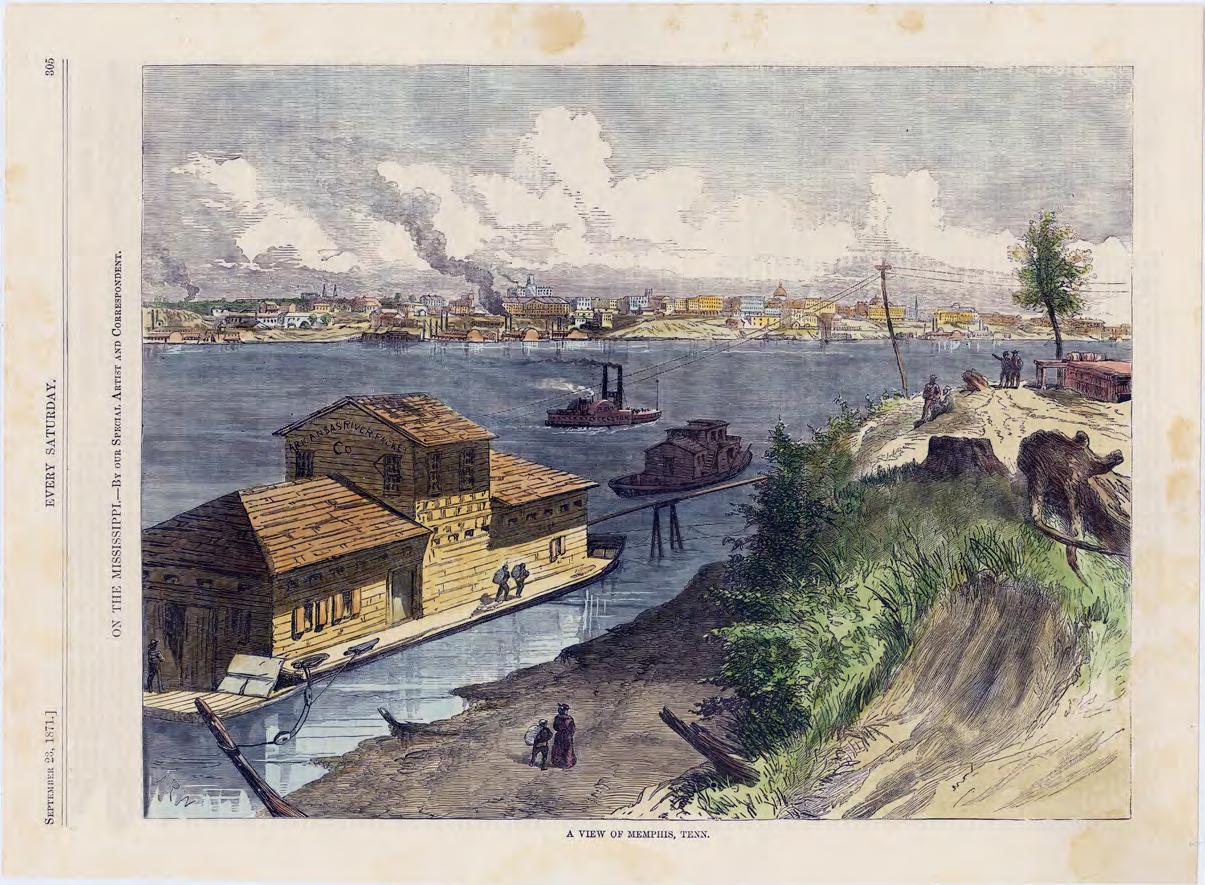
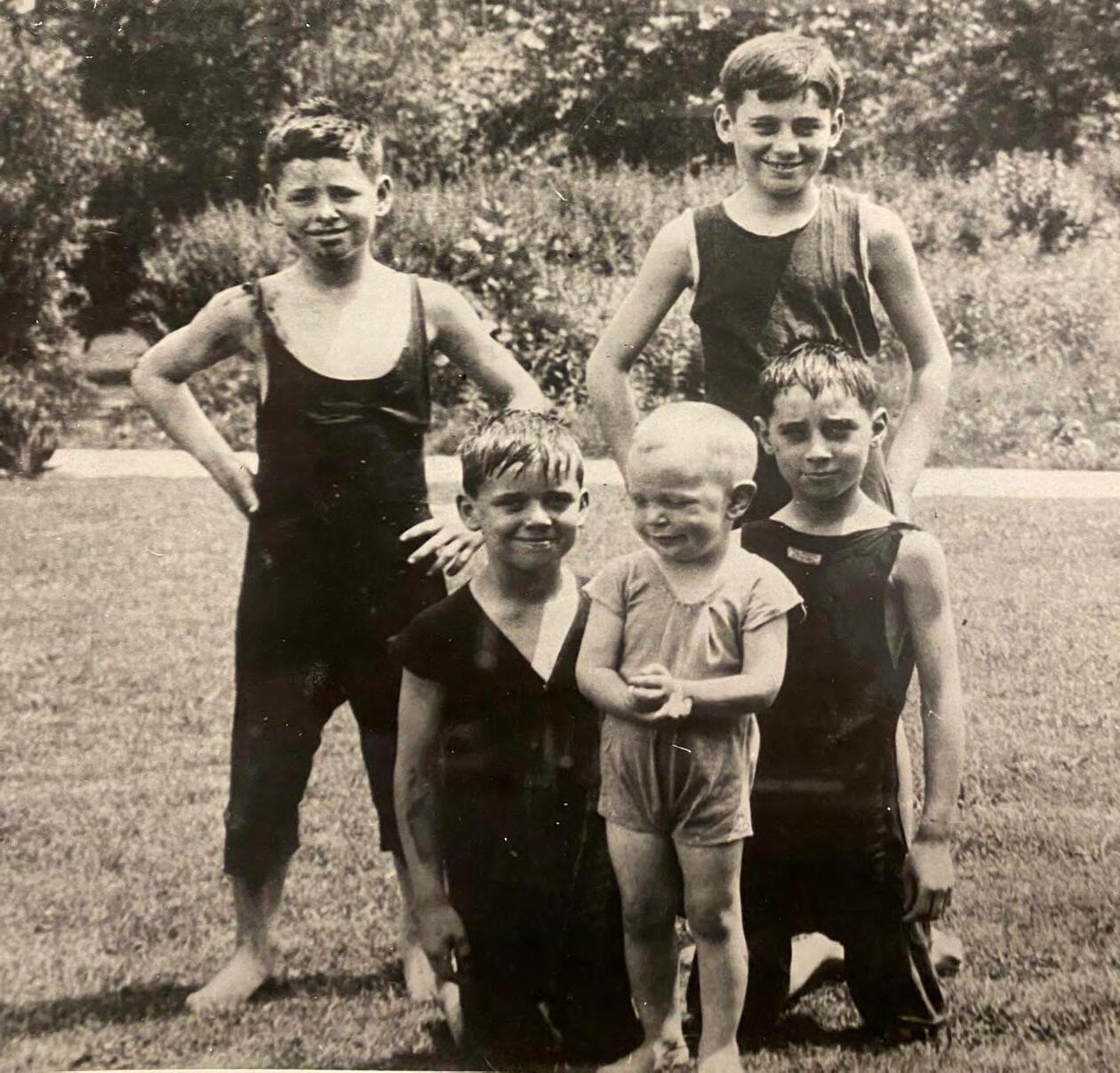
This 1913
shows the Boyle family children. in
in

ABOVE: An aerial view shows Memphis spreading eastward in the mid-1800s. Note the river traffic along the Mississippi.
Selecting the best architects of the city — among them Mahan and Broadwell, Hanker and Cairns, Charles Oscar Pfeil, and others — they created what the authors of Memphis: An Architectural Guide considered “one of the most impressive residential streets in the city.”
OPPOSITE: The Commercial Appeal included this illustration of the proposed Belvedere Boulevard development, a project they deemed “too visionary to ever be realized.”


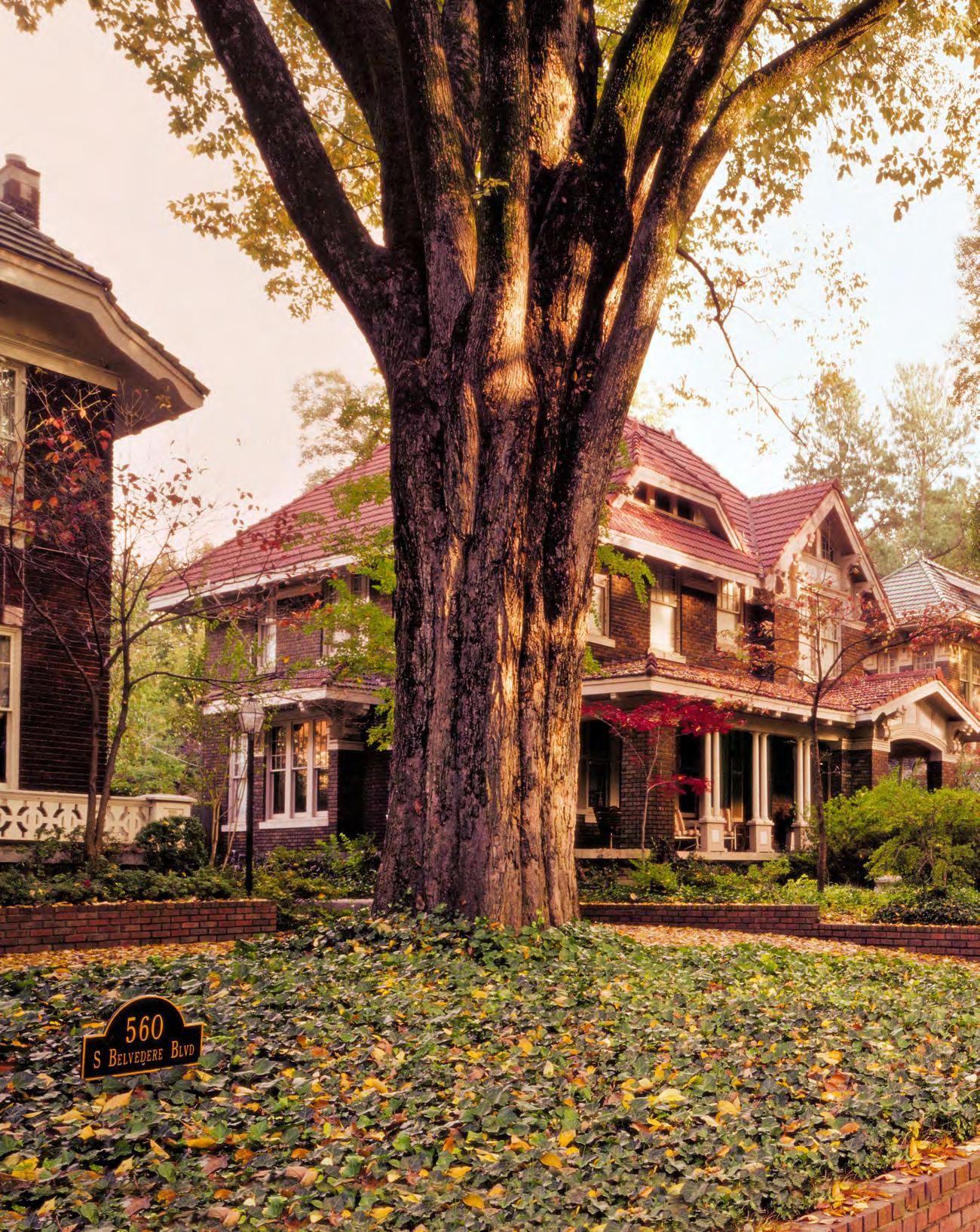

ABOVE: With its stately homes and mature trees, Belvedere Boulevard today, which stretches south from Union to Central, is considered one of the most beautiful streets in Memphis.

In April 1933, three of Edward Boyle’s sons — J. Bayard Boyle, Sr., B. Snowden Boyle, and Charles H. Boyle — followed their father’s lead and established Boyle Investment Company. It seems appropriate that the new firm was located at 148 Monroe Avenue, one of the first streets laid out by the original founders of Memphis.
The end of the Great Depression would not seem an ideal time to embark on a new business venture. The stock market had crashed, factories across America were shuttered, and farmers lost their crops when a relentless drought struck at the same time. Memphis, however, seemed to escape the full brunt of these economic forces. A history of the city’s largest bank (now known as First Horizon) noted, “Despite the unstable economic conditions prevailing after 1929, First National showed a remarkable growth record, and its deposits tripled during the 13-year period 1926 and 1939.”
Boyle Investment Company, starting out with only five employees, served as agents and mortgage loan specialists for a number of high-profile insurance companies, almost all of them based outside of Memphis. Their first client was New York Life, and that was soon followed by associations with Nashville Life & Accident Insurance Company in Nashville and the Provident Life & Accident Insurance Company in Chattanooga. These companies had foreclosed on a number of houses throughout the state, including Memphis. They asked Boyle Investment Company to manage the properties — renting them out, or financing their sales to new owners — while also managing the advertising and promotions necessary. Boyle Investment Company would later open a residential sales department to handle these smaller properties.
It seems appropriate that the new firm was located at 148 Monroe Avenue, one of the first streets laid out by the city’s founders.
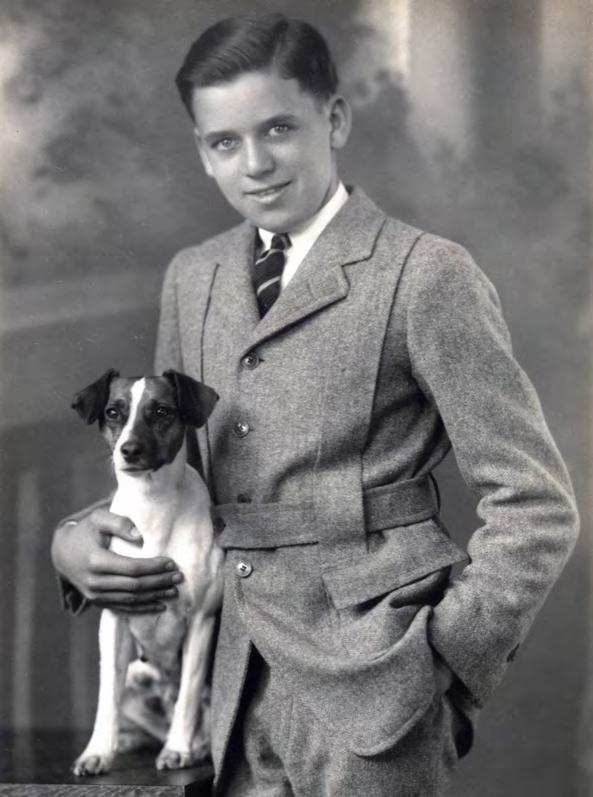
ABOVE: Portrait of young Bayard Boyle, Sr.
The company suffered a setback in 1935, when Charles Boyle, Jr. passed away. Cancer had restricted his involvement in the business for several years, and he had essentially retired at about the same time the new company was getting off the ground. In his role as secretary-treasurer, he was replaced by James B. Chism — the first person outside the immediate Boyle family to work in a leadership role.
During this early period, through their connection with New York Life, Boyle also established a strategic relationship with A&P groceries. Established in New York City in 1859, the full name was the Great Atlantic & Pacific Tea Company, but these stores sold much more than tea; in the early 1900s, they became the largest grocery chain in America. The company erected stores throughout Memphis and also constructed warehouses in other cities, such as New Orleans, for their merchandise.
“My father worked out a deal where New York Life would finance the A&P warehouses in New Orleans and different places,” said Bayard Boyle, Jr., who would later become president and chairman of the firm. “There weren’t that many of them, but it was a lot of money for those days. The financing arrangement required no equity, but New York Life got all the income for the first 20 years, after which we owned the property free and clear. Basically it was a 100 percent loan, fully amortized over a 20-year period.”
In 1933, Bayard Boyle, Sr. achieved what he always said was his greatest accomplishment — marrying Margaret Elizabeth Ragland, the daughter of Samuel and Cary Ragland. Memphians knew her father well, the longtime president of Central State National Bank, and when that firm was acquired by First National Bank in 1926, he was named president of First National (later called First Tennessee, and now First

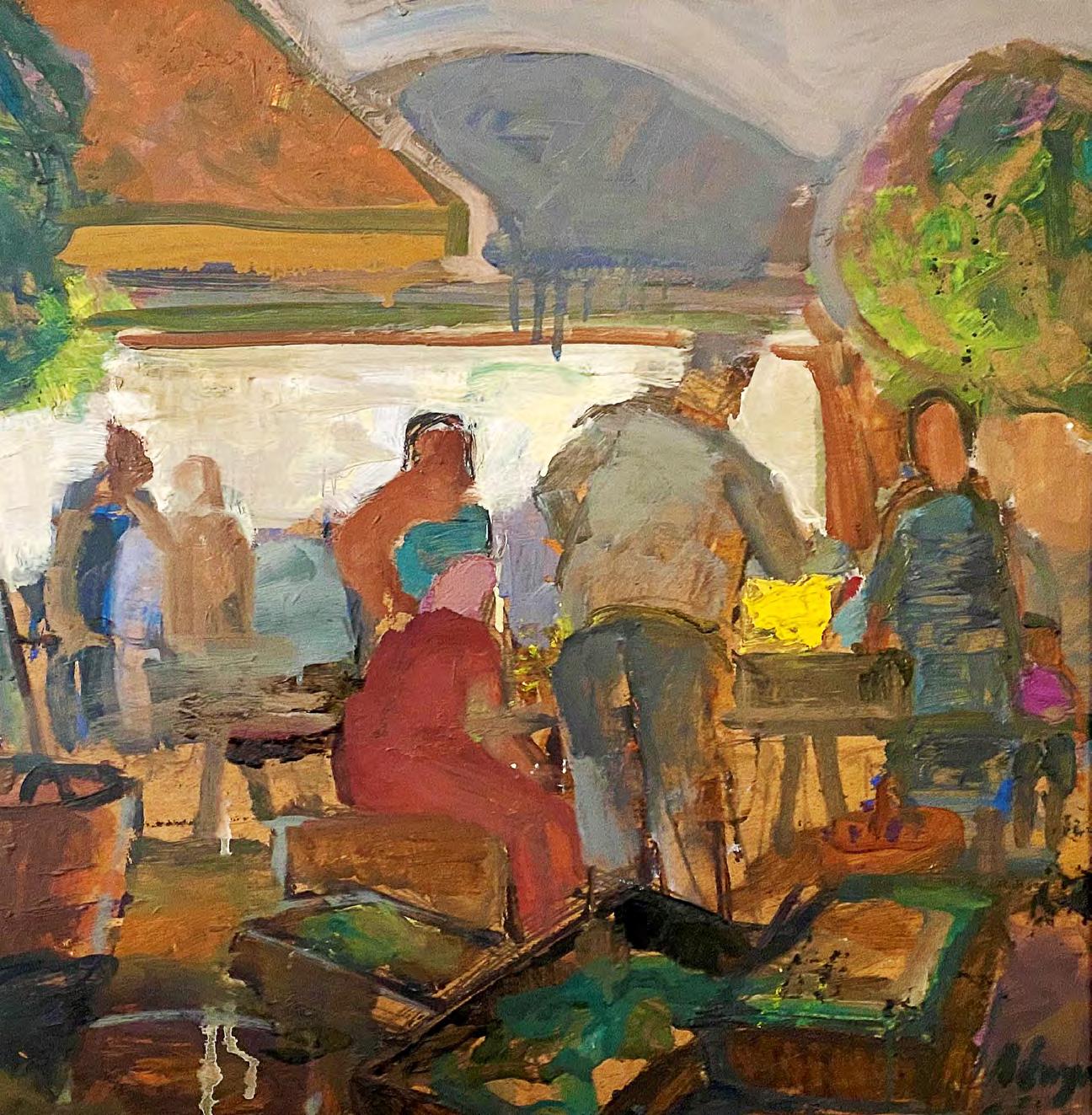
When the war began, Bayard Boyle, Sr., at age 33, joined the Army, rising through the ranks to the position of Lieutenant Colonel by war’s end.

ABOVE: The attack on Pearl Harbor. On Battleship Row, dense smoke rises from the forward and midships portion of the USS Arizona BB-39. Just ahead of her (L-R) is the sinking USS West Virginia BB-48 outboard with the slightly damaged USS Tennessee BB-43 inboard.
OPPOSITE: For bravery in action, Lieutenant Colonel Bayard Boyle, Sr. was awarded the French Croix de Guerre, among other military honors.
BELOW: Portrait of Elizabeth Boyle.
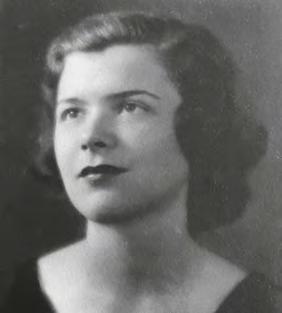
Horizon), a position he would hold until his retirement in 1943.
The wedding also forged ties with another prominent Memphis banker, Norfleet Turner, who had married Elizabeth’s sister, Eleanor. Turner would follow Ragland as the next president of First National, a position he held from 1943 to 1960, with The Commercial Appeal describing him as “one of the most widely known bankers in the South.”
The 1941 attack on Pearl Harbor and this country’s entry into World War II affected everyone in America. In Memphis, as in other communities, companies immediately adapted their products and workforce to support the war effort. Construction firms and other companies involved in the home-building industry found themselves pivoting to produce equipment for the armed forces, with supplies — especially essentials such as gasoline, rubber, steel, tin, copper, and lead —
strictly rationed.
In Shelby County, the U.S. Army took over a chemical plant operated by DuPont and transformed it into one of the country’s largest manufacturers of gunpowder. Buildings at the Fairgrounds were converted into offices and barracks for the Second Army, and the massive Defense Depot opened on Airways.
On a personal level, hundreds of men and women enlisted in the Armed Forces, including employees of Boyle, among them the company’s co-founder. When the war began, Bayard Boyle, Sr., at age 33, joined the Army, rising through the ranks to Lieutenant Colonel before the end of the war. He served as the personal aidede-camp to General Benjamin Lear, who was in charge of training for the Second Army. In fact, that connection came about when Lear approached Boyle Investment Company about acquiring and developing office properties for the Army around Memphis.
“I don’t know how he did it, but Dad got it done in an amazingly short time,” said Bayard Boyle, Jr. “General Lear was so impressed that he asked him to be his personal aide-de-camp.”
Bayard Boyle, Sr. saw considerable action in Europe, where he served in battle. He was at the Battle of the Bulge and witnessed the famous capture of the Remagen Bridge over the Rhine. During the last few months of 1944, as Allied forces were approaching the German border, he reported battle situations to headquarters. Boyle witnessed the first use of massed searchlights illuminating the battlefield by bouncing light off a low fixed cloud cover. Allied intelligence was predicting a massive German night counterattack across a valley, so they were able to position searchlights ahead of the attack. When the German forces were fully committed, the searchlights were turned on, and American artillery and machine gun fire decimated the attacking forces.
During another German counterattack a battalion commander was killed or otherwise incapacitated and Boyle was made acting battalion commander for several days until a replacement could be found. For his action in this engagement he received the French Croix de Guerre with Bronze Star. Because he worked so closely with General Lear, Lieutenant Colonel Boyle also interacted with many of the war’s military leaders, including Generals Marshall, Eisenhower, Patton, Bradley, Simpson, Hodges, and others.
After the war ended, the Boyles embarked on a major residential development — something the company, in its earlier incarnation as Boyle & Boyle, had not attempted since the Belvedere Boulevard project some 40 years
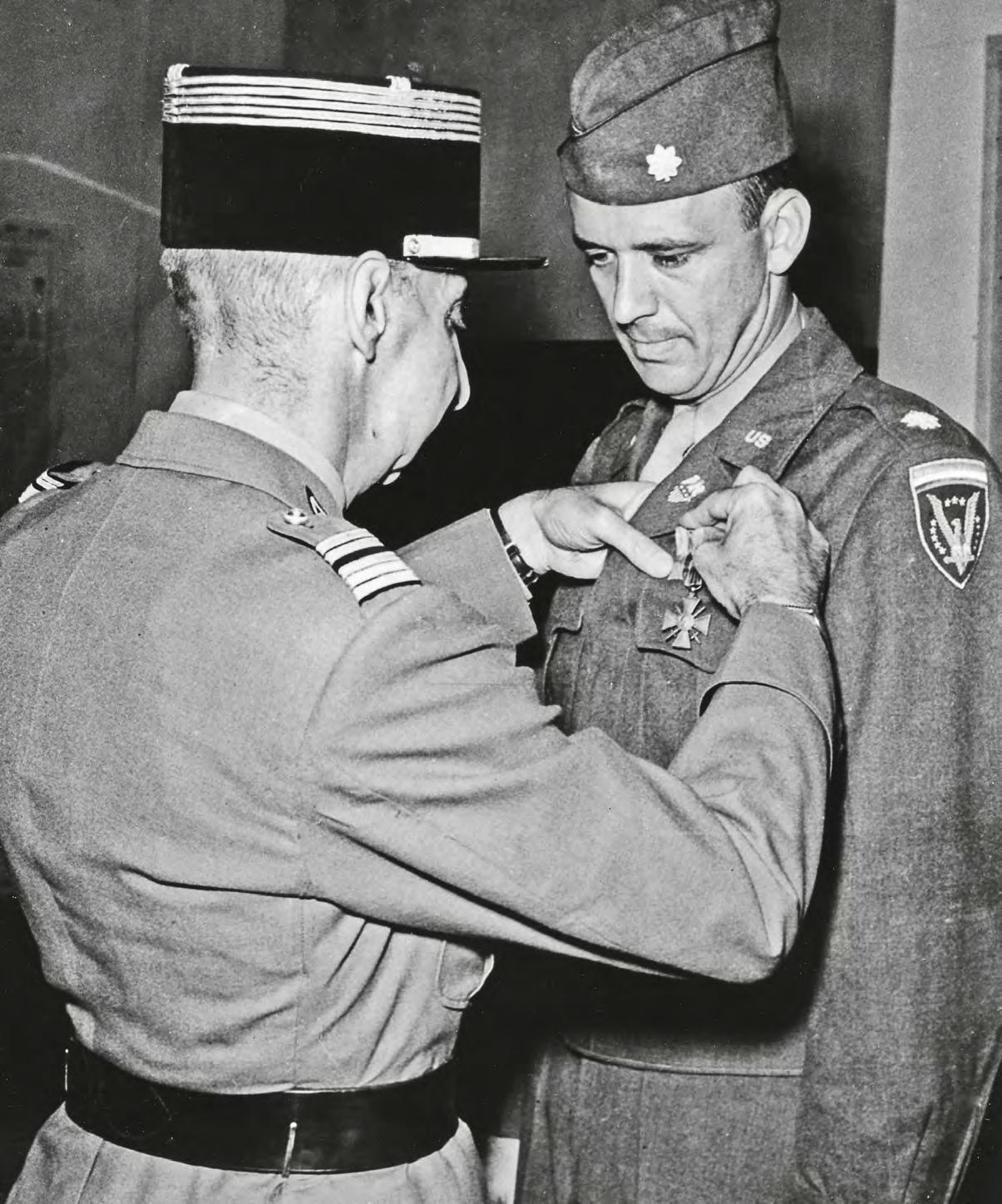
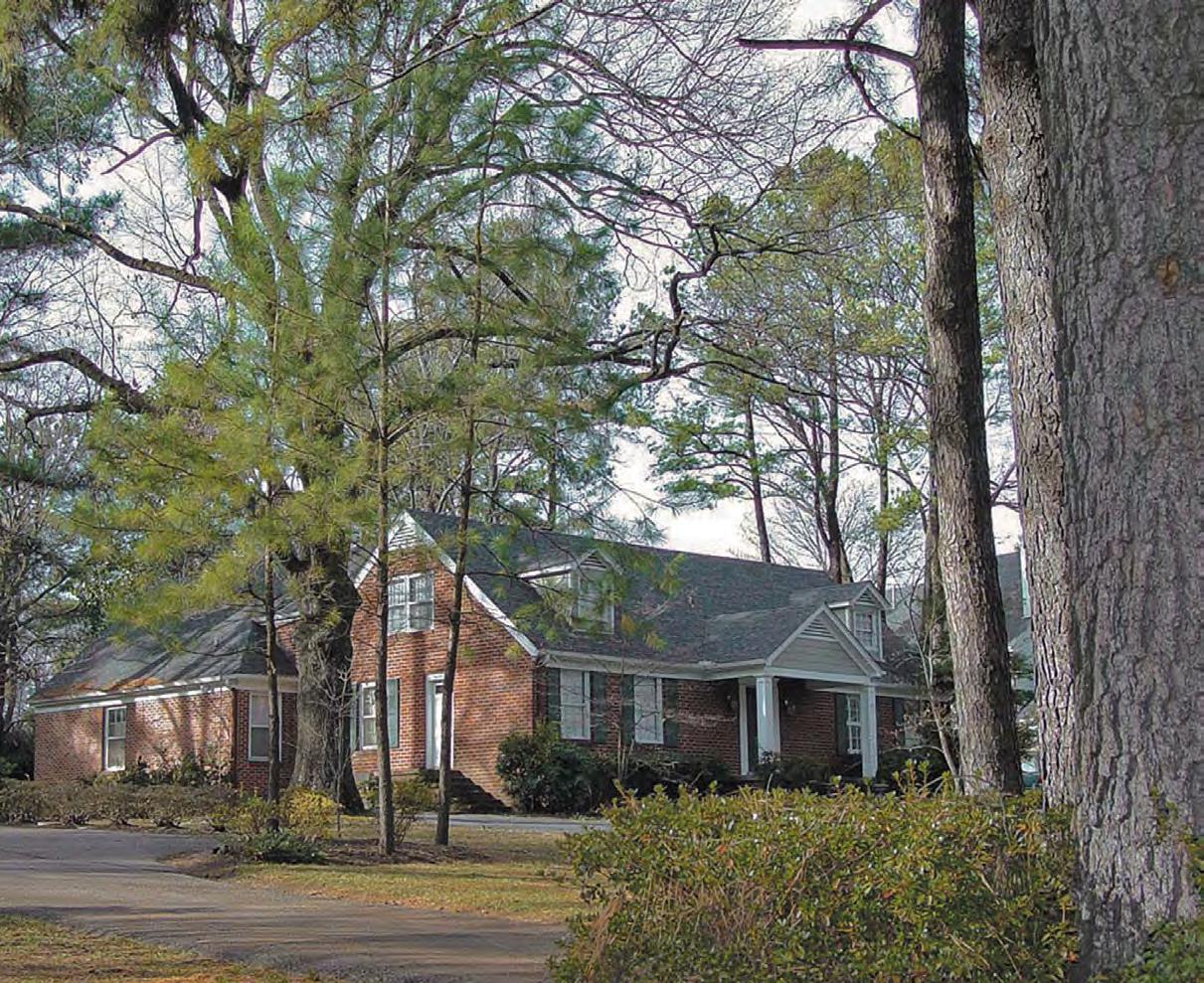
ABOVE: One of the homes in Pleasant Acres, developed by Boyle Investment Company in the 1950s.
OPPOSITE : The original plan for the neighborhood in East Memphis.
earlier. They would call their new subdivision Pleasant Acres, noted for its winding roads and half-acre (and larger) lots.
Located just northeast of present-day Poplar Avenue and White Station Road, when this project began, in 1947, the area was considered out in the country. There was, in fact, no White Station
Road. The Bartlett Road, as it was then called, stretched south from Macon Road and came to a deadend at Poplar Avenue. Developers in the 1940s saw no need to extend it farther; Eastgate Shopping Center was still an empty field, and the present-day subdivision of Colonial Acres, with hundreds of homes built by Jacobson-Lovitt
and other developers, was still a pipe dream. On Poplar itself, about the only commercial enterprise in that area was a popular restaurant called Davis White Spot, just east of present-day Estate Drive.
So Boyle Investment Company, after acquiring acres of fields and farmland, shielded by clumps of oaks, pines, and hickory, basically
worked with a blank slate. What they produced was a scenic neighborhood, accurately named. These were indeed pleasant acres for the new residents who would call the area home. Curving roads — Clover, Suggs, Pelham Circle, Lexington — ex tended north from Poplar, and the lack of sidewalks allowed builders to work around the existing trees to erect handsome ranchstyle residences on more than 100 lots. It was never meant to be a high-end development, but a quiet, secluded place to live and raise a family.
Beginning in the late 1940s, Boyle got involved with another venture across town, in a similar — but considerably larger — development called Sherwood Forest, located southwest of Park and Getwell. This neighborhood also incorporated winding roads, sheltered by large oaks and tall pines, this time naming them after characters from the legend of Robin Hood. Different local contractors, all of them following several basic plans, constructed two- and three-bedroom houses along Friar Tuck, Maid Marian, Nottingham, and other roadways. Boyle handled promotions, sales, and financing.
Elementary schools that would serve more than 600 families in the development (which included additions until 1962) followed the Robin Hood theme; their mascot
financing and management of these retail centers. “Since they were a grocery wholesaler, they worked with stores like Big Star and other chains,” said Bayard
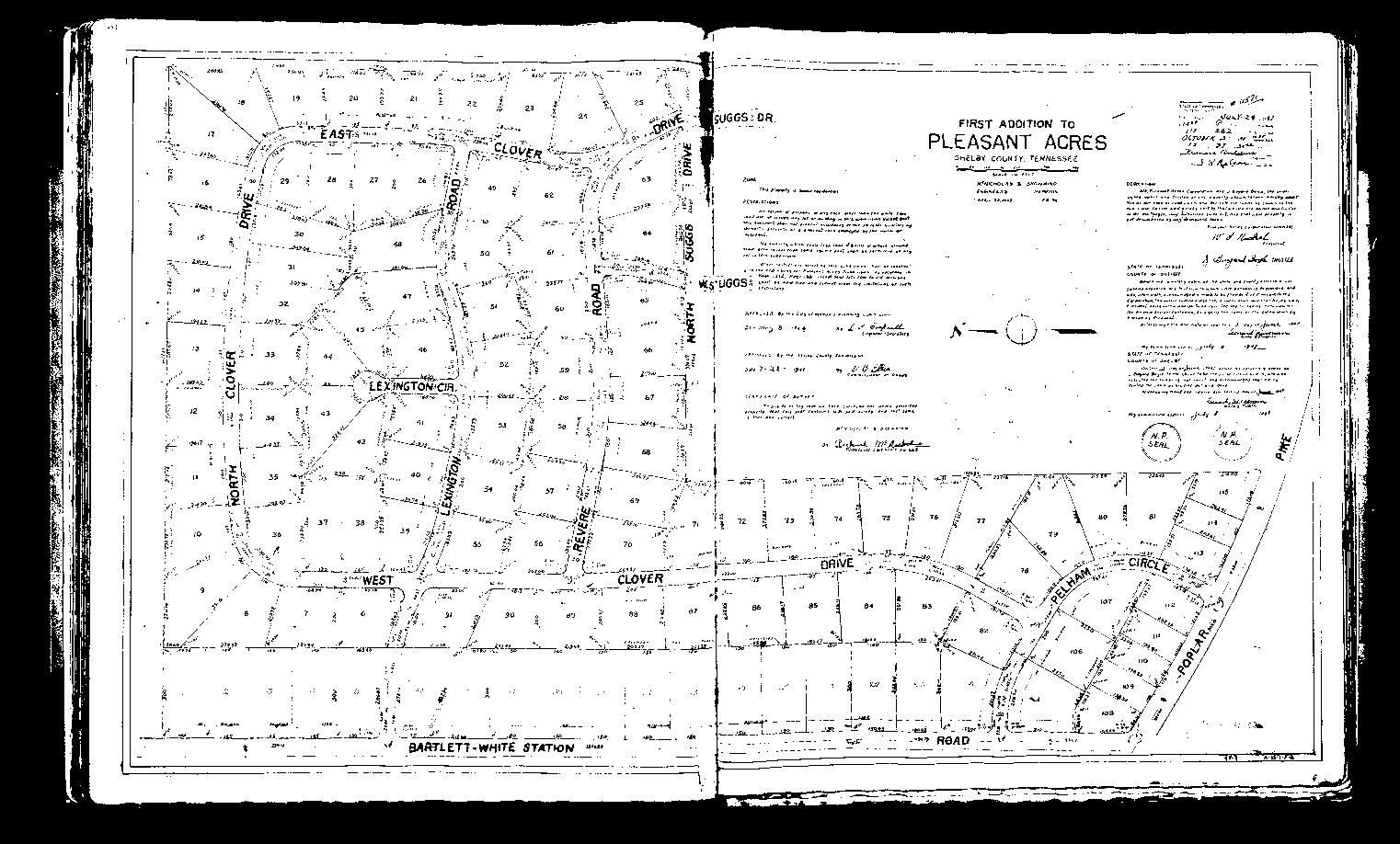
These were indeed pleasant acres for the new residents who would call the area home. Curving roads extended north from Poplar, and the lack of sidewalks allowed builders
to work around the existing trees to erect handsome ranchstyle residences on
more than 100 lots.
Bayard, Jr. recalled one time when Boyle Investment Company had developed lots along the south side of Poplar Avenue, and sold a few of them to Wilson. After two months, Wilson called Bayard, Sr. and said there had been a terrible mistake. It seems Wilson had built a new home on one of the Boyle lots — but not one that he had purchased.
“Dad said, ‘Oh, that’s all right. I’ll just swap lots with you.”
For commercial loans, Bayard, Jr. remembered that Belz was probably their biggest client for many years. “They were tough on the deals, so we didn’t make a lot of money from them,” he remembered, “but we did an awful lot of business with them.”
As with Pleasant Acres, the homes weren’t spacious — approximately 700 to 940 square feet — but they were situated on unusually large lots. Prices were affordable, ranging from $7,600 to $10,500, with discounts for veterans, and the absence of sidewalks gave the older parts of the area a pleasing, “village” feel. The new Sherwood Junior High and
was (and still is) the Archer. By this time, Boyle Investment Company also had become involved with the Memphis-based grocery wholesaler Malone & Hyde, which operated its own stores and provided inventory for other chains. The Malone & Hyde stores often served as anchors for smaller shopping centers in the area, and Boyle Investment Company took over the
Boyle, Jr., “and with their lease in hand, we were able to borrow to construct the small retail centers in this region.”
These were busy times for the growing company. They also worked with other investment firms and developers, such as Kemmons Wilson, founder of the worldwide Holiday Inns, and Belz Enterprises, perhaps best-known for reviving the Peabody Hotel.
Snowden and Bayard — two men who had established a reputation for their honesty, integrity, and high-quality projects — carried on, and the firm prospered. One reason for their enduring success was the strong partnerships they formed with other companies. They established mortgage-loan associations with the New England Life Insurance Company of Boston and The Bowery Savings Bank of New York. One of the most important and long-lasting of these was with Northwestern Mutual, based in Milwaukee.
“Over the years, Northwestern Mutual has been wonderful; we mainly worked with them on mortgage loans,” said Bayard, Jr. “We’ve been with them for decades. They are great partners — people with good judgment who know what they are doing.”
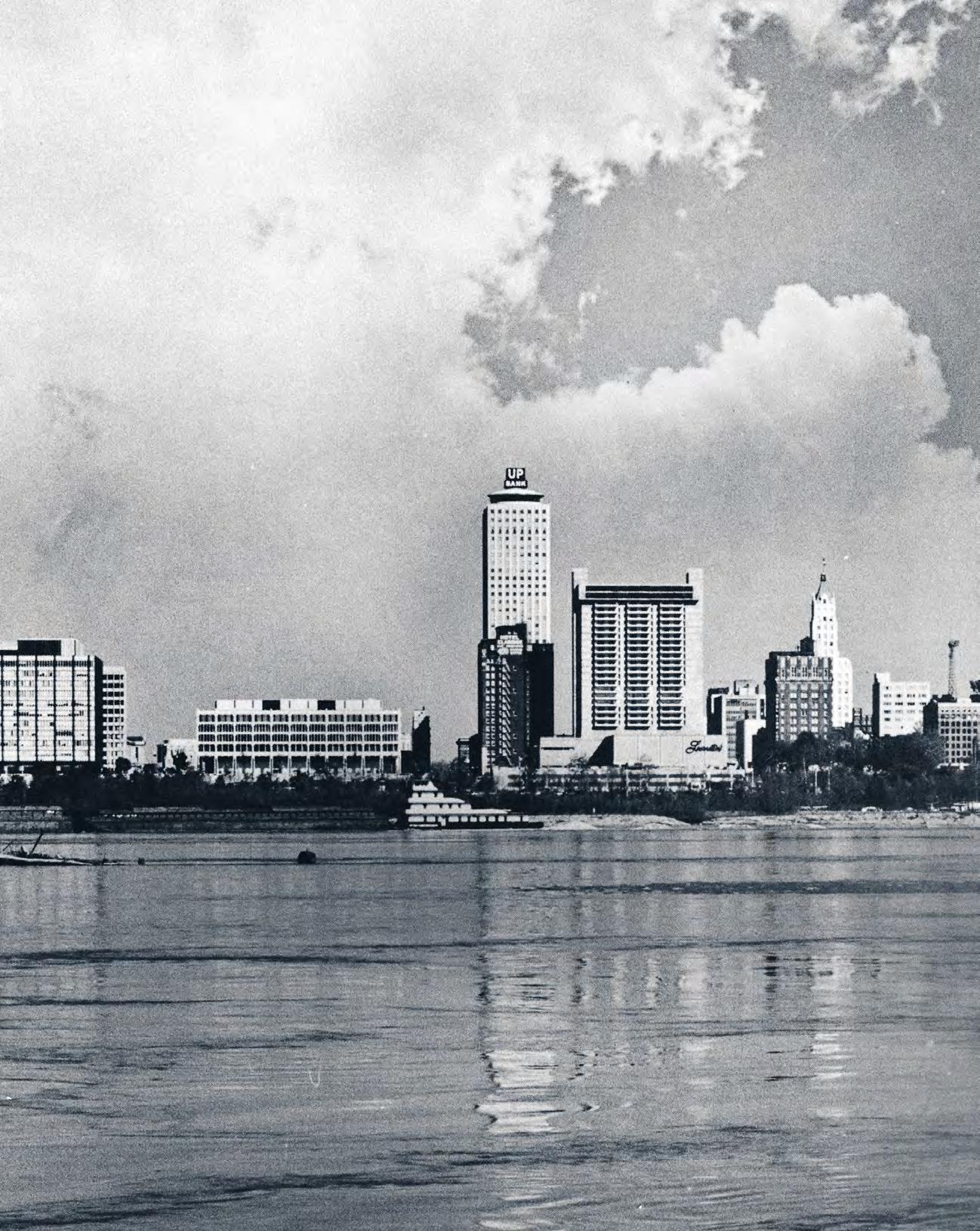

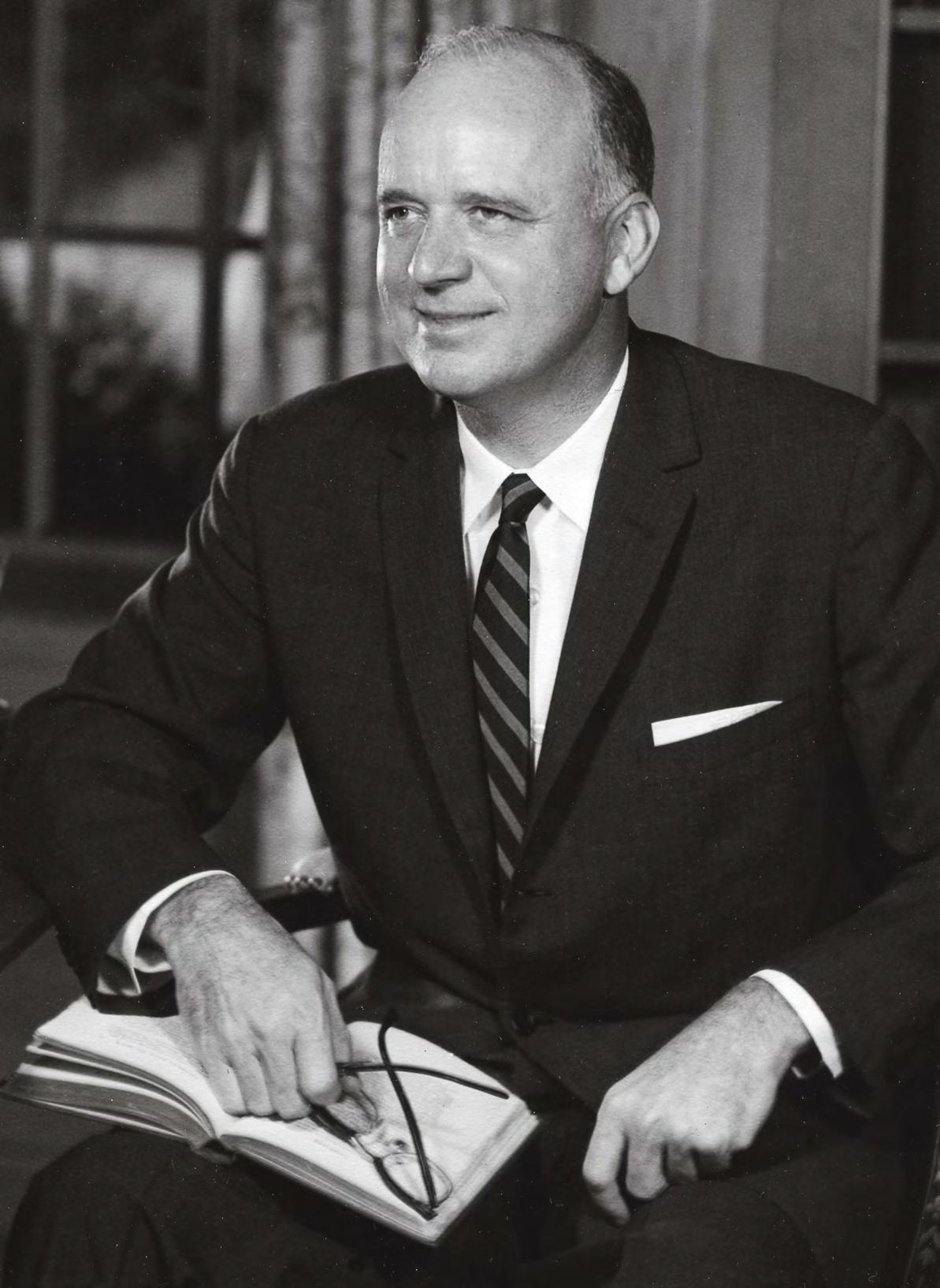
OPPOSITE: Bayard Boyle, Sr.
The success of Pleasant Acres and Sherwood Forest played a role in the next phase of Boyle Investment Company. When the firm opened in 1933, it had a staff of five; by the early 1950s, Boyle had grown to more than 40 employees. The owners realized that their growing company had simply run out of office space. Western Union, which shared the building at 148 Monroe, also needed more room. There was only one option — to move to another location. As it turned out, the solution was right across the street.
In the 1920s, Marx & Bensdorf, a mortgage loan company founded in 1848, erected an impressive classical-style stone façade building at the southeast corner of Second and Monroe. In the late 1940s they relocated several blocks away to Court Square. In September 1955, Boyle leased the former Marx & Bensdorf building.
Bayard Boyle, Sr., now president of the company (Snowden had been named chairman), told reporters, “With confidence in the future of Memphis, and in the growth of our business, we have taken a long-term lease for a new location.” They hired the architectural firm of Windrom, Hagland and Venable to change the interior to their own needs, and the move began in May of 1955. At first, the company occupied only the ground floor of 42 South Second, but it quickly expanded to fill the entire building, including the basement. For the first time, the company would have a place all its own: The Boyle Building.

ABOVE: The impressive new Boyle Building opened in 1955 at 42 South Second Street.
OPPOSITE: John Stone was in charge of the company’s residential loan department for years.
More than two decades old now, the company was thriving. The Commercial Appeal reported, “Boyle is now the mortgage loan correspondent for four life insurance companies which have a combined insurance-in-force of more than twenty-three billion dollars. In addition, Boyle serves as contractor for The Bowery Savings Bank of New York City, the largest mutual savings bank in the world.” Representatives from these agencies came all the way from New York, Chicago, Chattanooga, Nashville, Louisville,
and other cities to enjoy the Boyle Building open house.
Speakers throughout the day praised the company, along with the city it called home. Edwin Craig, chairman of the board of the National Life and Accident Company, based in Nashville, declared, “We take pride in connection with this fine company, through whom we have loaned vast sums for investments. We know of no other city in which we would prefer to invest company funds than Memphis.”
New departments handled
commercial and industrial properties, and The Commercial Appeal assured Boyle’s customers that the commercial loan department, especially, “can furnish loan commitments promptly on all types of income property.”
Meanwhile, the newspaper noted that, managed by W.S. Strehl, “a recently organized residential sales force has an expansion underway, and has acquired additional salesmen for this department.”
Mentioning the “well-trained staff” of the loan department un-
“With confidence in the future of Memphis, and in the growth of our business, we have taken a long-term lease for a new location.”
— BAYARD BOYLE, SR.


der the direction of Arnold Prather, the newspaper reported, “The company’s facilities enable him to approve and close loans in 48 hours. He specializes in furnishing builders with commitments for new subdivisions.” The company also expanded its general insurance department, as well as its land department, which handled both sales and loans on properties of all sizes.
got on a ship!” Stationed first at the Great Lakes Training Center, and later at a base outside New York City, he was preparing for overseas duty when the war came to an end in 1945.
“His forte was also acquiring the best people and not micromanaging them.”
In short, as The Commercial Appeal told readers, “Every phase of the real estate business is covered by this organization.” Snowden Boyle responded, “This company, during its entire history, has not made a loan that has been foreclosed, which is a record all members of the Boyle firm are proud of.”
Moving to the new building allowed Boyle Investment Company to hire new staff and expand many departments. Among those was the residential mortgage loan division, for years under the direction of John Stone.
Born in Tupelo, Stone attended the University of Mississippi, but entered the Navy when World War II started. “I always had a fascination with ships,” he said, “so I joined the Navy — and never
— JOHN STONE
Stone returned to Ole Miss, where he earned a degree in finance and banking. After a few years working as a clerk at a Firestone retail store in Memphis, Stone entered the mortgage business.
In 1955, Bayard Boyle, Sr., gave him a call. “It seems they had a small residential mortgage business in place, and they wanted to expand it,” said Stone, “so Bayard hired me. They had been doing it for a while, of course, but it was like starting a whole new deal.”
Soon Stone took charge and was promoted to vice president of the residential loan department.
Stone and his department serviced home mortgages, but Boyle wasn’t a typical mortgage company. “We were mortgage
bankers,” he explained. “We made the loans and we sold them, but we also serviced them here in Memphis. Everybody knew everybody, and it was just a great business to be in, because we were so close to our customers. They’d make a loan with Boyle, they’d make payments to Boyle, and if there were any problems, they’d come to Boyle and we’d handle it.”
That level of customer loyalty was partly because of his boss, Bayard, Sr. “He was just one of the finest gentlemen I have ever known,” he said. “I mean a truly fine person — big-time.”
He recalled that Bayard, Sr., an avid golfer, was one of the few Memphians to be a member of the prestigious Augusta National, home of the Masters. “Do you know, he took me to the Masters with him a couple of years? To me, that was worth a year’s salary, to go there and play golf.”
In the 1980s, the residential mortgage department was “spun off” to Union Planters. Stone recalled, “They took all the mortgage employees except Al Austin, who was in charge of commercial mortgages, and me. We were supposed to act as consultants while the bank got its mortgage
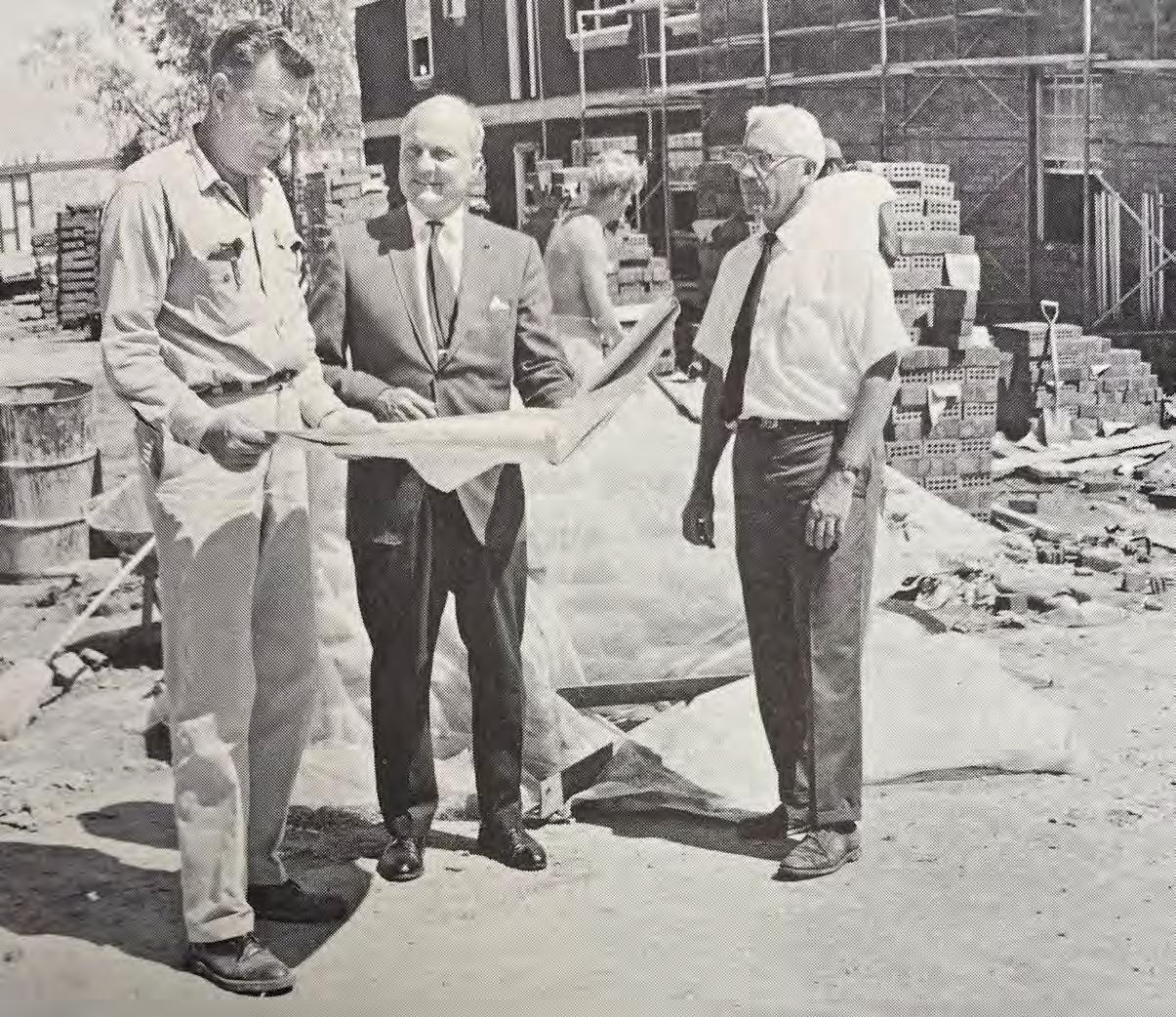
department running, but they didn’t need us very much.”
Stone stayed on, but in a different role, helping to develop lots for some of Boyle’s new residential projects — Blue Heron, Hunter’s Hollow, River Edge, and others. It was highly enjoyable work. “The greatest thing about working with people in the building business is that you know all of them,”
he said, “and they know you. So they are your friends as well as your customers.”
After more than 50 years, he “quietly retired,” and he and his wife, Tootsie, who had lived in Midtown for many of his years at Boyle, moved into one of the company’s new subdivisions in East Memphis. Looking back at a lifetime of work with Boyle In-
vestment Company, he gave a lot of credit for the company’s enduring success to Bayard, Sr.
“Bayard had a knack for finding the best land,” Stone said, “but his forte was also acquiring the best people and not micromanaging them. In my case, I felt like I was running my own business. He just let you do what you needed to do, and never interfered.”

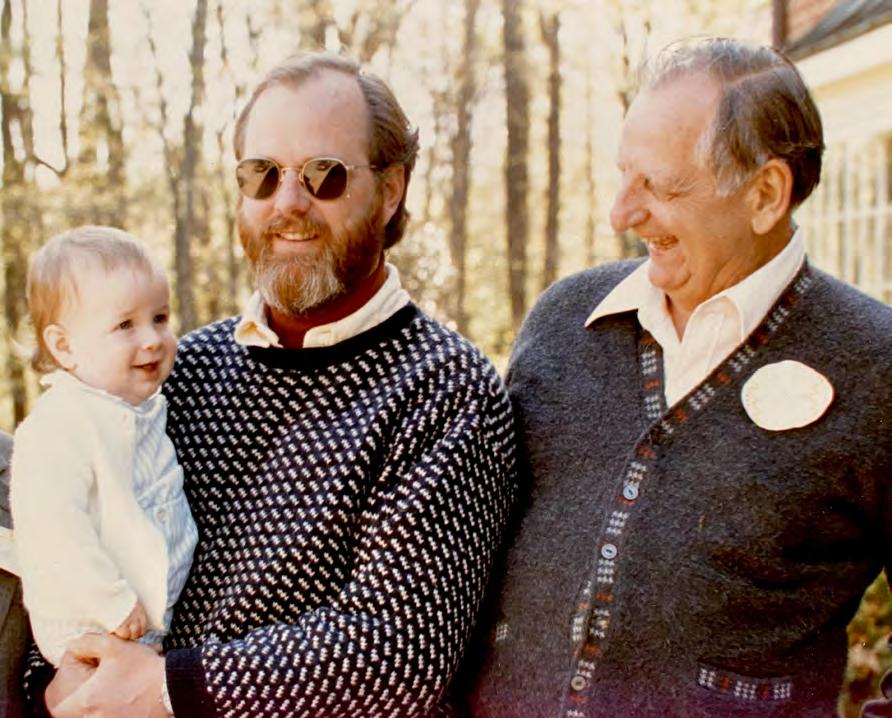
Throughout the 1950s, Boyle Investment Company embarked on a wide range of other commercial, industrial, and retail projects throughout Shelby County. They oversaw the construction and management of a warehouse for Sears and a commercial building for Vann’s Baking Corporation, both on South Third. During this period Boyle also built, owned, and/or managed shopping centers around the city: Kimbrough Shopping Center at Poplar and Perkins; the Harbin Center on U.S. Highway 51 South in Whitehaven; Barron Shopping Center on Barron Avenue; Winchester Square Shopping Center; and the Point Shopping Center on U.S. Highway 51 North.
Albert Fulmer deserves a good deal of credit for Boyle’s growing land department. Born in Houston, Mississippi, he moved to Memphis at an early age, where he attended Miss Lee’s School and Central High School, and later Columbia Military Academy. His stud-
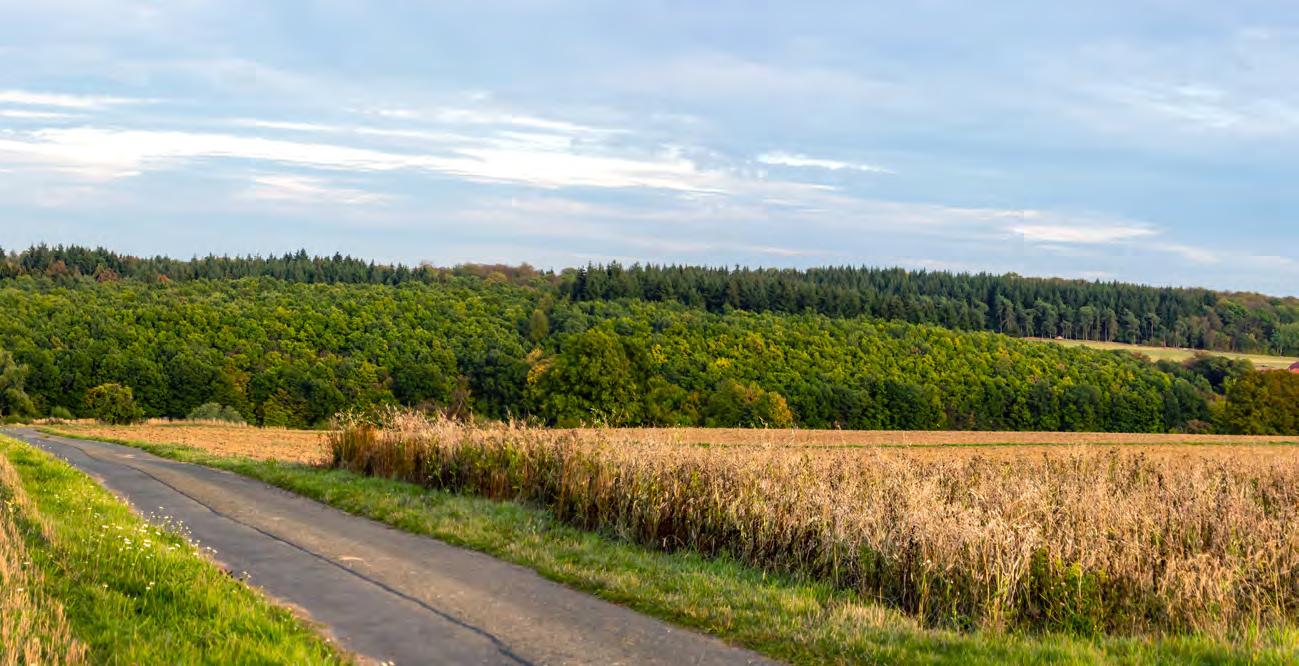
“When Albert Fulmer joined us, he already knew all the farmers, and he had a vision for profitable opportunities and a gift for negotiations, so he was able to get a lot of valuable land for us.”
ies at West Tennessee State Normal School (now the University of Memphis) were interrupted by the United States’ entry into World War II. He enlisted and saw action in Europe as a B-24 squadron leader and navigator for the U.S. Army Air Corps.
By 1944, Fulmer had flown his final mission, but when another bomber needed a last-minute replacement, he volunteered for one last bombing run over Romania. Enemy fire crippled his plane. He and the rest of the crew were able to bail out, but then were captured. Second Lieutenant Fulmer spent 11 months as a prisoner-of-war at various stalags in southern Europe before his camp
was liberated by General George Patton’s troops. For gallantry in action, his entire B-24 crew was awarded the Silver Star.
After the war, Fulmer returned to Memphis, where he opened stores selling feed to local farmers. Bayard Boyle, Jr. remembered, “One of his products was Curly Tail Hog Feed. He sold it all over the country, and that’s how he knew all the farmers.”
When Fulmer joined Boyle Investment Company in 1961, he was a perfect fit to take charge of the newly formed Land Development and Acquisition Department. “When Albert joined us, he already knew all the farmers,” said Bayard, Jr., “and he had a vision for
profitable opportunities and a gift for negotiations, so he was able to get a lot of valuable land for us.”
Fulmer remained with the company for more than 40 years, retiring in December 2000 as senior vice president of commercial sales and leasing. He passed away in 2006.
Some of the pastures, fields, and farmland Fulmer and his team acquired during those early years later became the site of Hickory Ridge Mall (which included more than 100 stores, with national retailers Sears and Goldsmith’s serving as anchors), South Perkins Industrial Park, Farmington (later Germantown) Country Club, and major subdivisions such as Hickory Hills and Kensington Gardens.


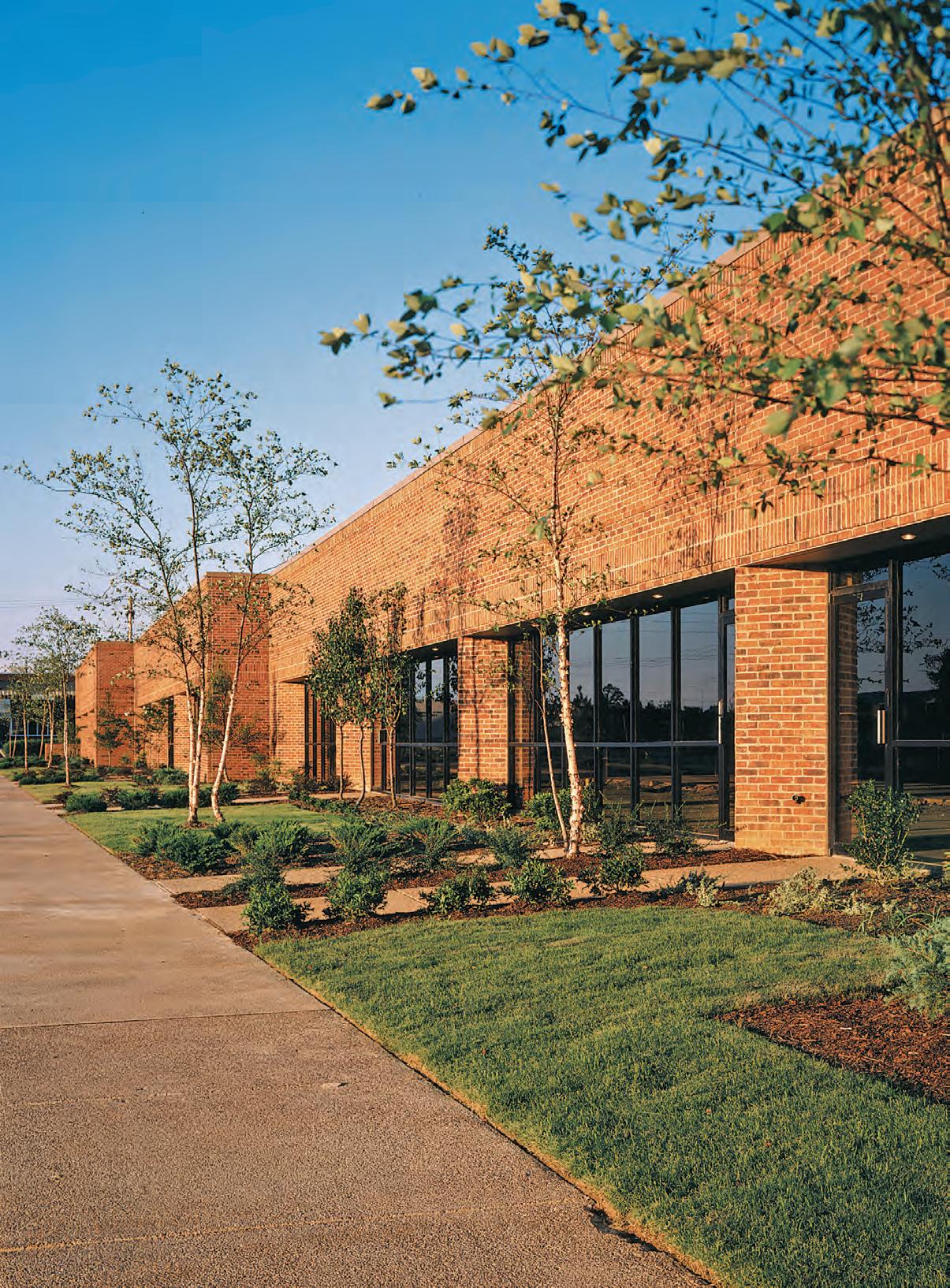
By the 1960s, Boyle Investment Company had evolved into a major full-service real estate operation, involved with residential, commercial, and industrial properties throughout Shelby County. Working out of the Boyle Building downtown at Second and Monroe, Boyle and its sister companies offered a complete range of services: sales, leasing, management, development, construction, mortgages, loans, and insurance. Major clients by this time included such well-known corporations as Shell, General Motors, Sears, Malone & Hyde, Exxon, General Mills, and countless others.
As their operations expanded, so did the Boyle team, as a new generation came aboard. Bayard Boyle, Jr. graduated from Washington and Lee University, went to the University of Virginia for one year of law school, and served as an ROTC graduate at the Ft. Sill Artillery School in Oklahoma. He returned to Memphis and joined the company in 1960, rising through the ranks to be named the company’s president in 1971, CEO in 1978, and chairman in 1986. Today he is chairman emeritus.
“To what can we attribute our success? It is the contributions of our employees that have made the company what it is today,” he said. “To echo the words of my father, we make a practice of hiring good people, and we provide them with the resources and freedom to do their jobs. Our employees all adhere to the same standards of integrity for which Boyle has become known.”
His father’s sister, Margaret, introduced him to his future wife, Ann Hudson Jones, known as “Huddy.” Aunt Margaret, he said, was so impressed with Huddy after meeting her at a May Day festival at the Hutchison School in Memphis, that she urged Bayard, Jr. to ask her out on a date.
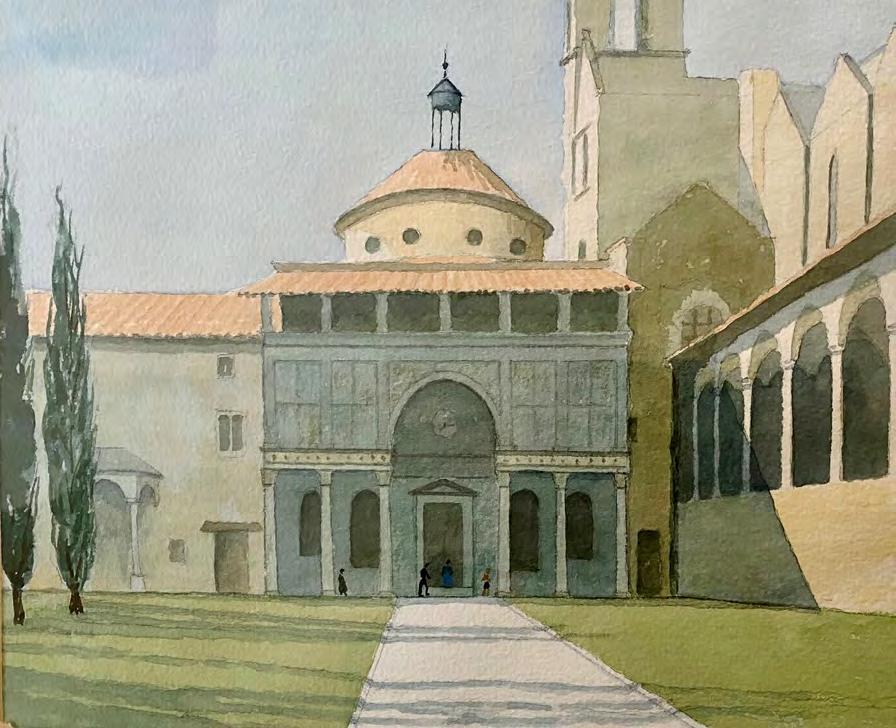
Huddy and Bayard, Jr. married in 1963. Her father, Dr. Paul Tudor Jones, was the beloved, longtime rector of Idlewild Presbyterian Church on Union Avenue in the heart of Memphis. His 21-year ministry at Idlewild extended far beyond the walls of the gothic “flagship” congregation. An active presbyter, he soon became a part of the progressive vanguard of leaders that helped move the “Southern Presbyterian Church” away from its theological and ecclesiastical isolationism toward a greater sense of social responsibility and ecumenical involvement.
Dr. Jones was a gracious, courtly “son of the South” who combined in a remarkable way a pastor’s heart with a prophet’s voice. His passion for improved relations between the races led him not only to address these issues in preaching, but to assume a position of leadership in chairing the Memphis Committee on Community Relations during the racial tensions of
the 1960s. During the Sanitation Workers Strike, Dr. Jones and other faith leaders had been crafting a resolution to deliver to Mayor Henry Loeb. In the wake of the 1968 assassination of Dr. Martin Luther King, Jr., their resolution took on new importance, becoming a timely and essential “tribute to the peaceful ideals of Dr. King, a statement of support for the black clergy, [and] a plea for justice.”
The morning after the assassination, Dr. Jones went with other faith leaders, both black and white, to deliver their statement to Mayor Loeb. He also was a lifetime member of the boards of both Rhodes College and Louisville Seminary and a PCUS representative to the National Council of Churches. Dr. Jones was an accomplished artist, and many of his watercolors enhance the Boyle corporate offices.
When he first started at Boyle, Bayard, Jr. said, “Things were slow going at first. I had taken an ac-
counting correspondence course, and they put me in the mortgage loan department. Meanwhile, I tried to figure out what everybody else was doing in the various other departments.”
The workload increased when the company brought in aggressive new sales people. “We got Eddie Sappinsley and Albert Fulmer, and they were really good at working together — finding and buying property and getting it rezoned,” said Bayard, Jr. “The mortgage banking business picked up, so it got really interesting. And then when we got the Ridgeway Country Club property, we really had a lot to do.”
At Boyle Investment Company, the focus is always on quality and designing communities for the long term. The high standards that were established by Edward and Charles Boyle in creating Belvedere Boulevard are still prevalent today in every Boyle community.
Henry Morgan came from two of this area’s most prominent families. On his mother’s side, the Wetters had owned the Wetter Manufacturing Company, whose products included cast-iron stoves — a common feature in almost every home in America. The Wetters also owned large tracts of land between Poplar Avenue and the Wolf River, most of it sparsely populated farmland and fields, bisected by Shady Grove Road, as late as the mid-1900s a narrow gravel lane.
Henry’s father was Allen Morgan, Sr. Hailed by The Commercial Appeal as “the father of the municipal bond business in Memphis,” he had joined the bond department of First National Bank in 1929, became an executive vice president in 1946, and was named president in 1960. During his 44-year career, First National grew from a single institution in Memphis to a holding company with some 150 branches across the state. Under his leadership, the bank moved
into its gleaming new building, still a landmark on the city skyline today, and changed its name to First Tennessee to reflect its prominence in the state.
Henry’s older brother, Allen Morgan, Jr., also began his career in the investment business. He would eventually form Morgan-Keegan, one of this area’s largest brokerage firms and one of the few companies in Memphis to hold a seat on the New York Stock Exchange.
Henry attended Memphis University School and then enrolled at the University of North Carolina, majoring in economics. Friends assumed he would take a job with First National, but he had other ideas. “I never wanted to work for the bank,” he said, “because it would have been too hard to follow in the shadow of my dad.”
downtown. “I spent the whole time in the old vault downstairs, just throwing out old files,” he remembered. “This was certainly not an exciting time, but I was lucky to have a summer job.”
It also gave him a chance to meet other members of the company, so he made plans to return after college. After college, he took a job at Boyle in the commercial mortgage loan department.
“Hoshall Davis ran that division, which was a great place to learn about the real estate business, especially the financing aspect,”
The high standards that were established by Edward and Charles Boyle in creating Belvedere Boulevard are still prevalent today in every Boyle community.
said Morgan. “We had good connections with major life insurance companies, and we did a lot of work for the Belz family. It was a good experience. I learned a lot about development and what was going on in the world, and I really enjoyed it.”
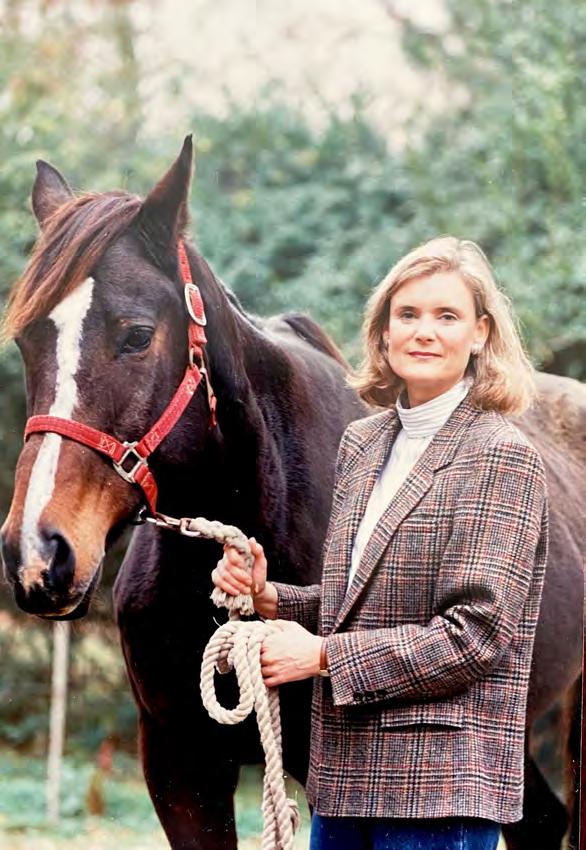
One summer, before he graduated from college, he came home and took a job at Boyle Investment Company at 42 S. Second Street
Soon after joining Boyle, he married Imogene Snowden Boyle, the daughter of Bayard and Elizabeth Boyle. Known to everyone as
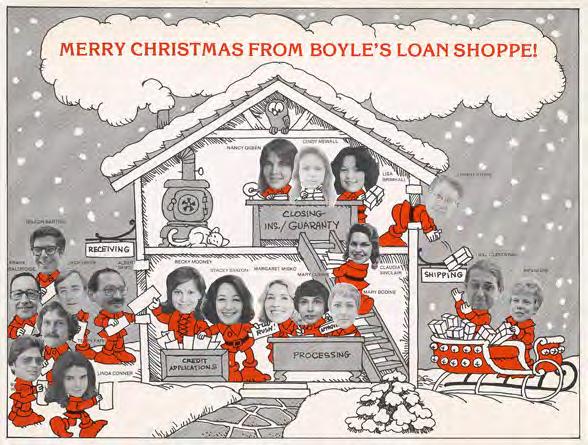
“Snow,” she and Henry met when they were 12 years old, since their families owned adjacent properties, and she would see the young boy when she was out riding her horses. Snow attended the Hutchison School, went away to Bennett College in Millbrook, New York (the same school her mother attended), then returned to Memphis to attend Southwestern at Memphis (now Rhodes College). Snow remembered how she first learned about Henry. “One day, my father wanted me to ride with him to see an old log house on the Wetter property,” she said. “When we got there, he said, ‘You know, Mrs. Wetter has two grandsons, and they’re about your age. If you marry one of them, you might get to live in this old house.’”
As it turned out, that’s exactly what happened. “That’s where we lived the first two years after we married in 1968,” Henry said. “It was an ancient house, from the 1840s, built entirely of cypress logs.”
Henry was impressed with his new father-in-law. “Bayard Boyle, Sr. had remarkable vision about outlying property and raw land,” he said, “He was very wise in un-
and he helped Boyle acquire the Ridgeway Country Club property [see next chapter]. And then Bob Horrell was handling lots of our Malone & Hyde shopping centers.”
Very soon, however, he assumed even more important duties. He formed the Office Development Team, along with Russell “Rusty” Bloodworth, Mark Halperin, Dick Nichol, John Doherty, and Bill

derstanding how the city would grow, and he was very patient. He bought land way ahead of its time.”
Snow also thought Henry and Bayard, Jr. made a good team.
“My brother and Henry did really well together,” she said. “They complemented each other. With any project, Henry did one part and my brother did another, and that’s been a great blessing.”
Henry also thought the Boyle company had assembled a fine group of people. “Albert Fulmer was involved with commercial land sales, and he was very wise and capable, helping us acquire big properties that became very important.” Another of his colleagues was Eddie Sappinsley, one of the company’s sales agents. “Eddie was an aggressive, smart guy,
Werhum. He also established the Mid-America Construction Company, which enabled Boyle to have more control over their growing number of projects, instead of relying on outside contractors.
In short, “It’s been a great place to work,” Henry said, “and I’ve been lucky to be here.”
Russell Bloodworth — better known as Rusty — earned a degree in architecture from the University of Virginia, studied environmental design at Yale, was an American Scandinavian Fellow in Sweden, and followed that up with a Knight Fellowship at the University of Miami. After graduating from Virginia, he decided he didn’t really want to be an architect.
In a Commercial Appeal story, he
explained how he came to make that decision. At a young age, he was fascinated with architecture, he told the reporter, but “during college I realized there were other people involved in the building process [who] hired the architect, and that inspired me to think a little more about being more in control.”
The story continued, “A trip to Reston, Virginia, one of the nation’s most well-known planned communities that focused on mixed-use areas, fanned Bloodworth’s creative flame. ‘I was just stunned with the thought of building complete communities,’” he said.
On a return home in 1968, he noticed all the Boyle signs on various developments around town, so one day, without making an appointment with anybody in particular, he dropped by the company’s downtown offices, seeking a job.
Bayard Boyle, Jr. was in the office that day. “Bayard, Jr. glanced over my resume,” Bloodworth recalled, “and noticed that I had won the outstanding boxing award at Virginia. His father [Bayard Boyle, Sr.] was a famous boxer at Yale, so he introduced us, accentuating my boxing exploits. Bayard’s father was a tall, handsome man, then 60 years old. He exuded strength and energy. Mr. Boyle grinned, asked about my college activities, and said he was glad to have me on board. I thought I had died and gone to heaven!”
Bloodworth’s first duties had nothing to do with architectural design. Instead, he was given the task of running projections of population data, which would help Boyle decide where to build future projects. One day, during lunch downtown at the Bon-Ton Café, Boyle, Sr. asked Bloodworth to estimate the cost of a particular piece of property. “I knew absolutely nothing about land values,” he remembered, “but I came up with a figure that, as it turned out, was extremely low. Mr. Boyle
never chided or corrected me, but I had given him good reason to be cautious with my opinions!
“Mr. Boyle had a special quality for treating people as important,” he continued. “He remembered what had been occurring in their lives, and what they had been accomplishing. In all the years I knew him, he never focused on mistakes. He was always congrat-
of River Oaks, an elm shades the entrance gate, and is marked with a plaque noting that it stands as the only tree in Tennessee on the National Register of Elms.
As late as the 1960s, few families called the Shady Grove / Sweetbrier area home. Dr. John Shea, one of the world’s leading authorities on hearing disorders,
purchased significant acreage for their future homeplace in the heart of what is now River Oaks. At the time, the area was rolling countryside and covered with mature hardwoods. Their home was designed by Everett Woods. One of this city’s noted architects, Woods had designed fine homes in Central Gardens, Chickasaw Gardens, and East Memphis, and
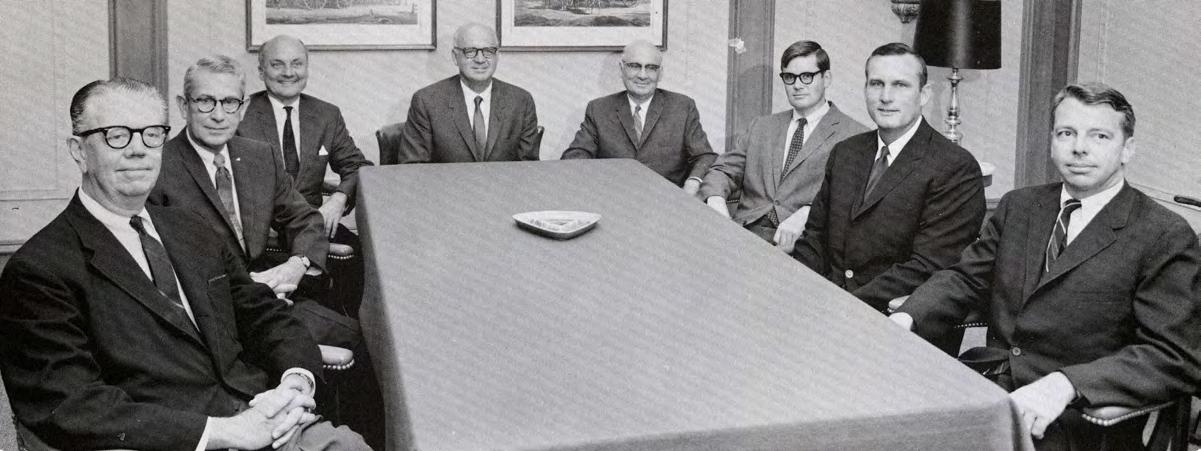
ulating people on the good they were doing — building them up and praising them.”
Bloodworth had a special interest in preserving the natural environment. In 1974, Southern Living featured him in a story called “A Tree Fanatic in Memphis.” The article noted that “he spends a great deal of time planning ways to save the trees at the company’s new development sites — at one point even standing in front of a bulldozer.”
“It was getting all set for a run at this beautiful old oak,” said Bloodworth, “so I put myself between the machine and the tree.” When a site was selected, the company would order a map with each major tree identified by species and size. Bloodworth was known to change plans to save particularly fine trees, and in The Gardens
erected a striking Japanese-style home just north of Poplar. Not far away, the Briar Patch estate, home to Robert and Eugenia Whitnel, complete with a separate studio for Eugenia, a nationally acclaimed photographer, stood on a hill (the site today of Briarcrest School). A half mile up Shady Grove Road stood Bayard and
had also designed the imposing East High School campus.
Shady Grove Road East at that point stopped its easternmost extension and turned abruptly south toward Poplar. The emerging Boyle homeplace made a wonderful spot for their three young children to grow and mature. Bayard Boyle, Sr. sold a large tract to the north to his elementary school classmate, Herbert Humphreys. Altogether, the potentially developable acreage exceeded 300 acres.
“[Bayard, Sr.] was very wise about how the city would grow. He bought land way ahead of its time.”
— HENRY MORGAN, SR.
Elizabeth Boyle’s home. Much of the area was undeveloped.
Boyle Investment Company had a broader vision. During the mid1930s, Bayard Boyle, Sr. with his wife, Elizabeth Ragland Boyle,
In the 1950s, three strategic events occurred that would forever change the rural character of this area, while creating a residential haven for some of the most noteworthy business leaders in Memphis. First, the Federal Aid Highway Act of 1956 provided for a national network of high-
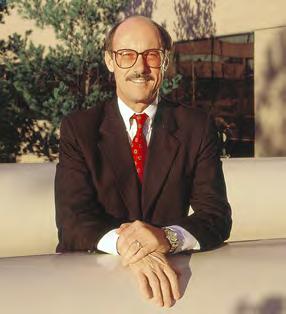
ABOVE: Longtime Boyle employee Bob Lofton served from 1963 to 2011 and eventually became Chief Administrative Officer.

speed expressways criss-crossing the country, which included the construction of the Memphis I-240 loop immediately west of the assembled acreage.
Second, three respected private schools moved to within a mile of the Boyle homestead: Memphis University School, Lausanne School, and the Hutchison School. Within a few years, two others, Briarcrest School and Christian Brothers High School, would join them.
Third, the Memphis Hunt and Polo Club, located in the 1950s on Cherry Road, south of what is now The Dixon Gallery and Gardens, burned to the ground. Bayard Boyle, Sr. acquired land for its reincarnation on Shady Grove Road immediately south of his homeplace. Noted architect Walk C. Jones, Jr. did the classic design for the club, while Sam Stevenson
served as contractor. In addition to the beautiful setting and significant acreage, these occurrences made the area ripe for a very high-end residential community the likes of which Memphis had never seen.
A “River Oaks” development already existed on the edge of Houston, Texas, and was well
River Oaks became known as Boyle Investment Company’s signature development.
known nationally as a haven for executives of large corporations. Those facts, combined with the existence of real “river” oaks along the adjoining Wolf River, made the name a natural. Like its Texas namesake, architectural control restrictions assured an initial level of quality.
The first section began in the mid-sixties, and immediately became the neighborhood of choice for those who could afford it. Narrow, meandering streets were laid out with particular care for the natural terrain and vegetation. Memphis Light, Gas, and Water approved a plan for all utilities to be placed underground, making River Oaks the city’s first subdivision to do so. Boyle Investment Company received permission to use special “pea-gravel” curbs without sidewalks. Homes rose and the initial neighborhood of only 48 lots grew over the decades to encompass eight additions. Over the years, new forms of architectural control were introduced in the newer sections as well as different housing types.
In 2011, the original Boyle homeplace that lay in the last section developed was sold to

Bill and Carole West, whose niece would marry Guy Pelham of England. The wedding ceremonies took place next door at the Memphis Hunt and Polo Club. Remarkably, Pelham’s close friends, Prince William and Prince Harry, attended — one staying in the original Boyle homeplace and one across the street.
River Oaks became known as Boyle Investment Company’s signature residential development, serving as the basic pattern for other upscale communities in the decades to follow.
Throughout the 1960s, Boyle remained involved with different lines of business — servicing residential and commercial mortgages, buying land, and planning new subdivisions or expanding the ones they had already developed. Starting out relatively small, some of these grew into large single-family subdivisions. These included Woodland Hills
(36 lots) north of James Road, Golden Acres (54 lots) off Stage Road, Winchester Park (100 lots) and Cromwell Park (149 lots) both off Winchester, Kirby Woods (341 lots) south of Park Avenue, and Blue Ridge (363 lots) south of Raleigh-LaGrange Road.
Multi-family complexes developed during the 1960s included the 100-unit Sherwood Apartments on Rhodes, and the 96u nit Hickory Hills Apartments on Graceland Drive.
The company had already developed some small shopping centers, and expanded that operation. New retail centers included the Mid-Town Shopping Center on Poplar, Millbranch Shopping Center in Whitehaven, and City Center Shopping Center in Collierville.
The Cloverleaf Shopping Center, at Summer Avenue and White Station Road, was a particular favorite with Memphians since it was home
to a Sears outlet store, and also Café St. Clair, one of the city’s most popular finedining establishments. On South Mendenhall Road, just south of Poplar, Williamsburg Village was an attractive row of small shops, all designed in a Colonial Revival style.
Boyle Investment Company also reached beyond the city — and state — limits for several commercial projects: Five Points Shopping Center in Birmingham, Alabama; Gateway Shopping Center in Osceola, Arkansas; and Westgate Shopping Center in Effingham, Illinois. For all of these, Boyle either built, owned, or managed them — sometimes a combination of all three. “It just depended on the client,” explained Henry Morgan. “Every project had different needs.”
All these smaller developments, however, would pale in comparison to what Boyle had in mind for East Memphis in the 1970s.
LEFT: River Oaks was designed with particular care for the neighborhood’s vegetation and natural terrain.
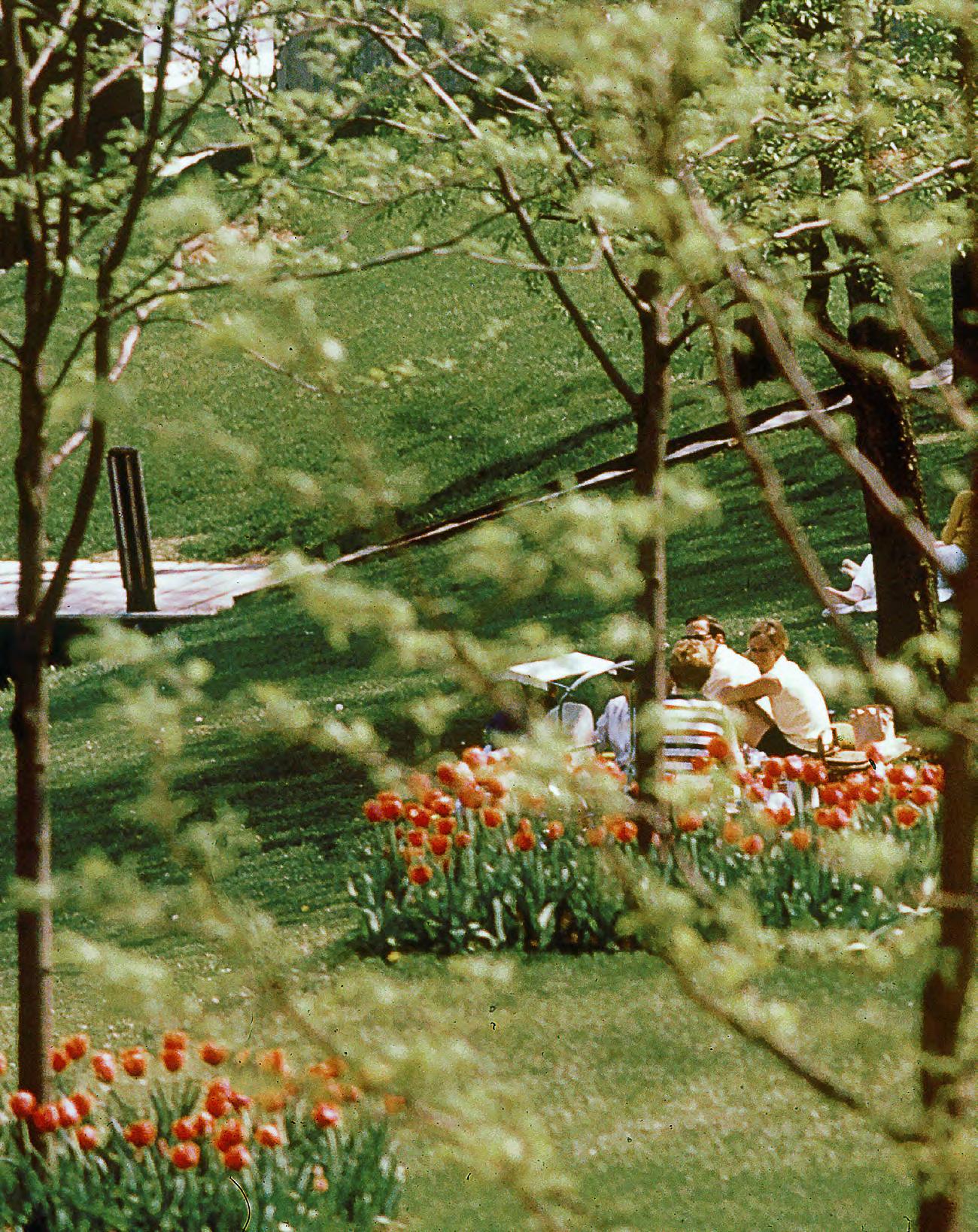

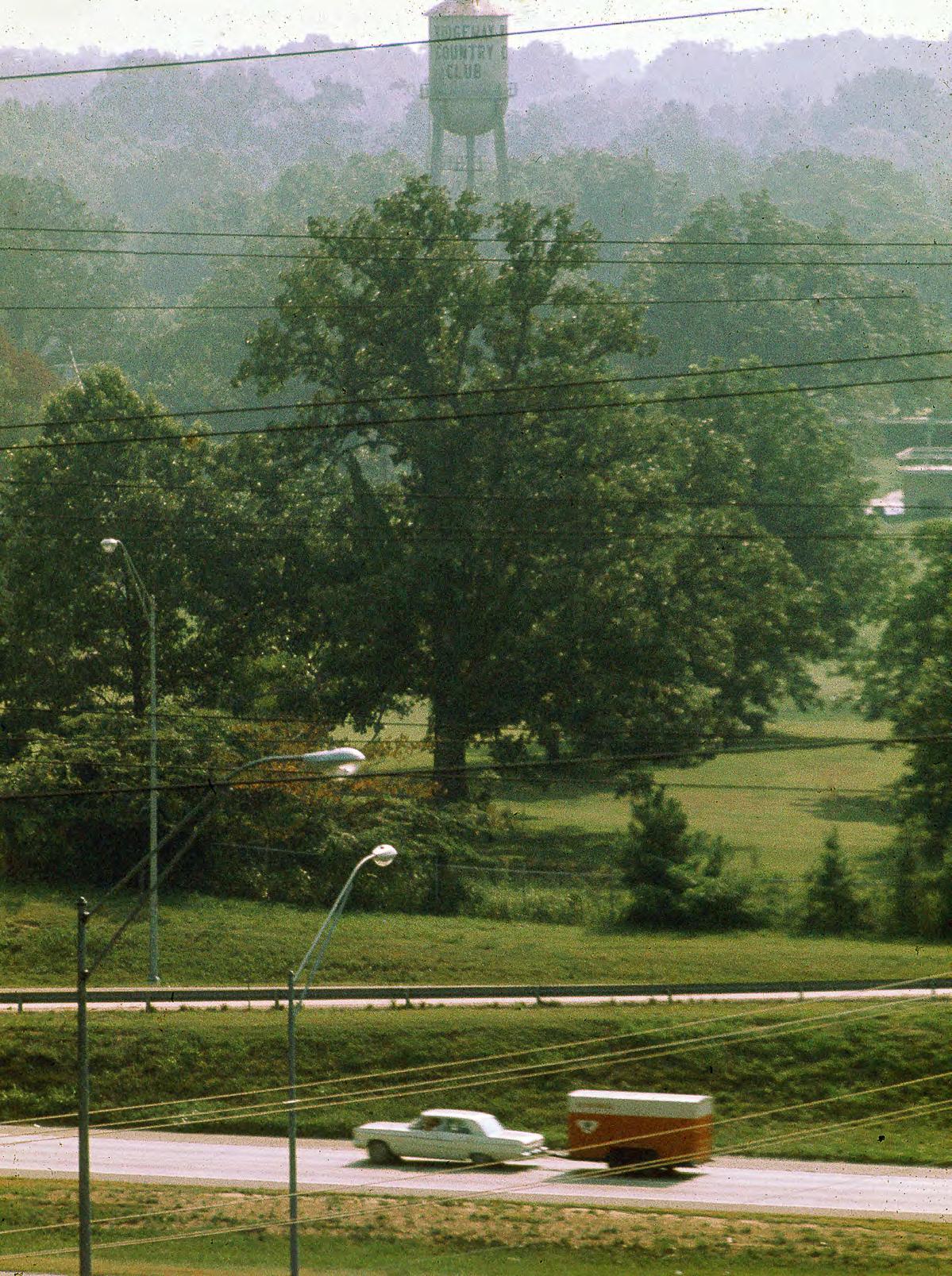
OPPOSITE: Boyle would transform the grounds of the former Ridgeway Country Club into one of the most important mixed-use developments in Memphis.
The Boyle family liked to tell the story about Bayard, Sr. piling his wife and kids in their car and going on Sunday drives. While these outings beyond the city limits may have been pleasant, they were actually work days for the father, who was scouting the landscape for new properties his company could acquire and develop.
The family didn’t have far to drive, however, to notice Ridgeway Country Club, which was only a mile south of their home on Shady Grove Road. Bayard Boyle, Sr. was an avid golfer, after all, but he had more ambitious plans in mind than a sunny day on the links. In fact, he and his team would create what might arguably be the most important commercial development in this area’s recent history — a project that would be called “a city on the edge of the city” and the first mixed-use development (commercial, retail, residential) in the Mid-South.
In 1966, some of the Ridgeway Country Club members began to consider a move eastward, while Bayard Boyle, Jr. and Eddie Sappinsley started negotiations for the possible purchase of the 154-acre golf course property. After a challenging rezoning process, Boyle Investment Company acquired the property.
As head of the newly formed Office Development Team, Henry Morgan recalled, “Ridgeway Center was really the beginning of my career. I enjoyed getting into that, and it was a fun, exciting time. It was an opportunity to get in a lot of development, and we had the best suburban office site in East Memphis, with a nice blank canvas to work with.” Developing the new project would involve almost every member of the Boyle company, and some new faces, as well.
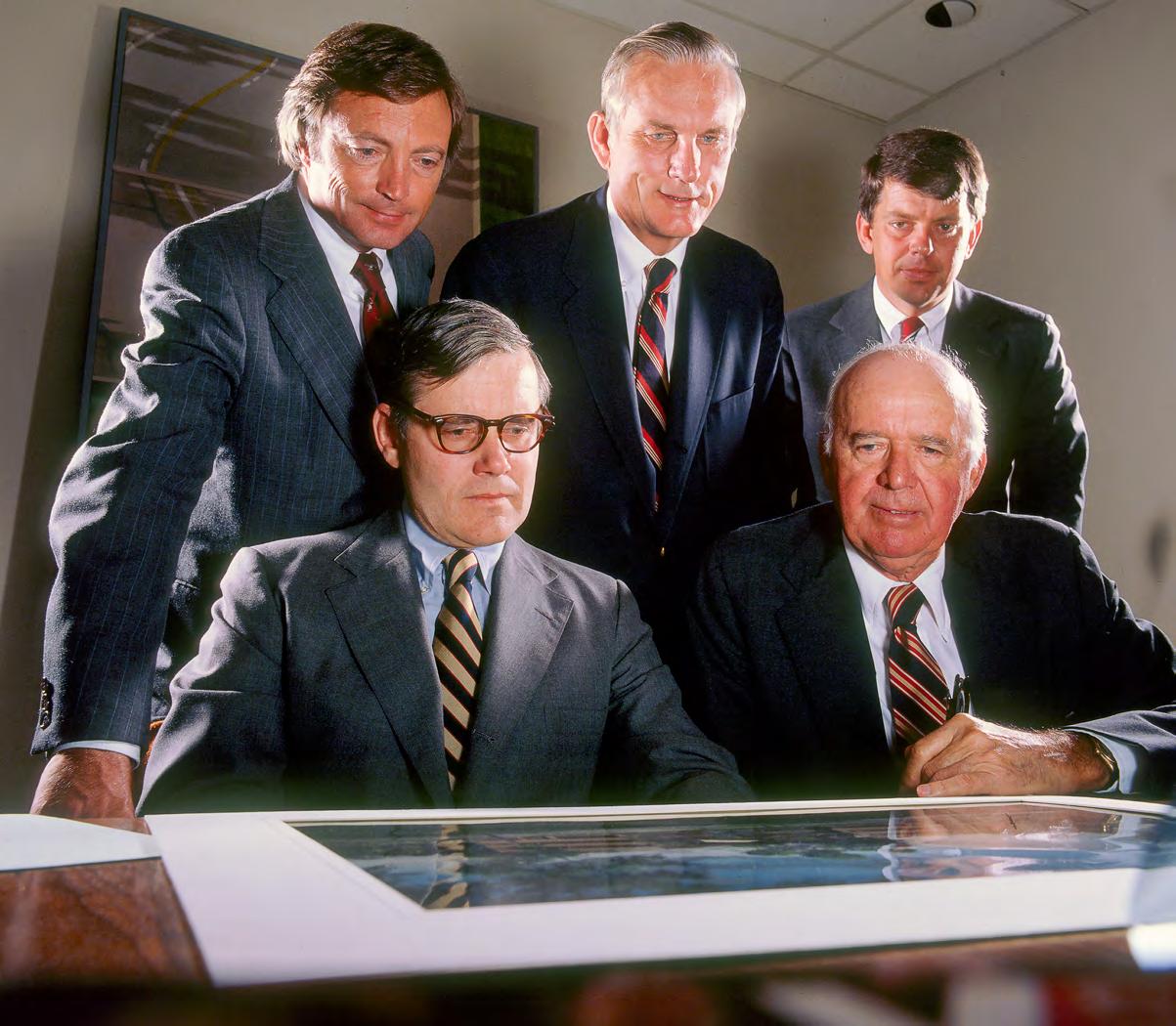
Born in Chicago, a young Mark Halperin and his family moved to Memphis in 1959. He attended Memphis University School and graduated from the University of Tennessee in Knoxville, with a degree in accounting. He met Henry Morgan when Morgan helped Halperin with a college real estate course project.
“After that, Mark wanted some advice about what he was going to do,” said Morgan, “and I persuaded him to come work for us.” Morgan introduced Halperin to
Bayard Boyle, Sr., and they offered him a job in 1973. Halperin soon became part of the newly formed Office Development Team, and was mentored by Bob Lofton, the company’s longtime chief administrative officer, as well as Morgan. He joined the firm just as Ridgeway Center was being developed, and took primary responsibility for leasing almost all of the initial buildings — some 130,000 square feet of office space — which grew to more than 2,000,000 square feet, not including other
Boyle developments.
A key part of that job had always been keeping the tenants happy. “We really motivate ourselves to think like owners,” Halperin said, “and I think our customers really respond to that and appreciate that.” Apparently, they do. “In all these years, we have never lost a transaction over lease language,” he said. “We’re just not going to let that happen.”
Halperin shared the opinion of so many others about the genius of Bayard Boyle, Sr. “He could just see way down the road,” he
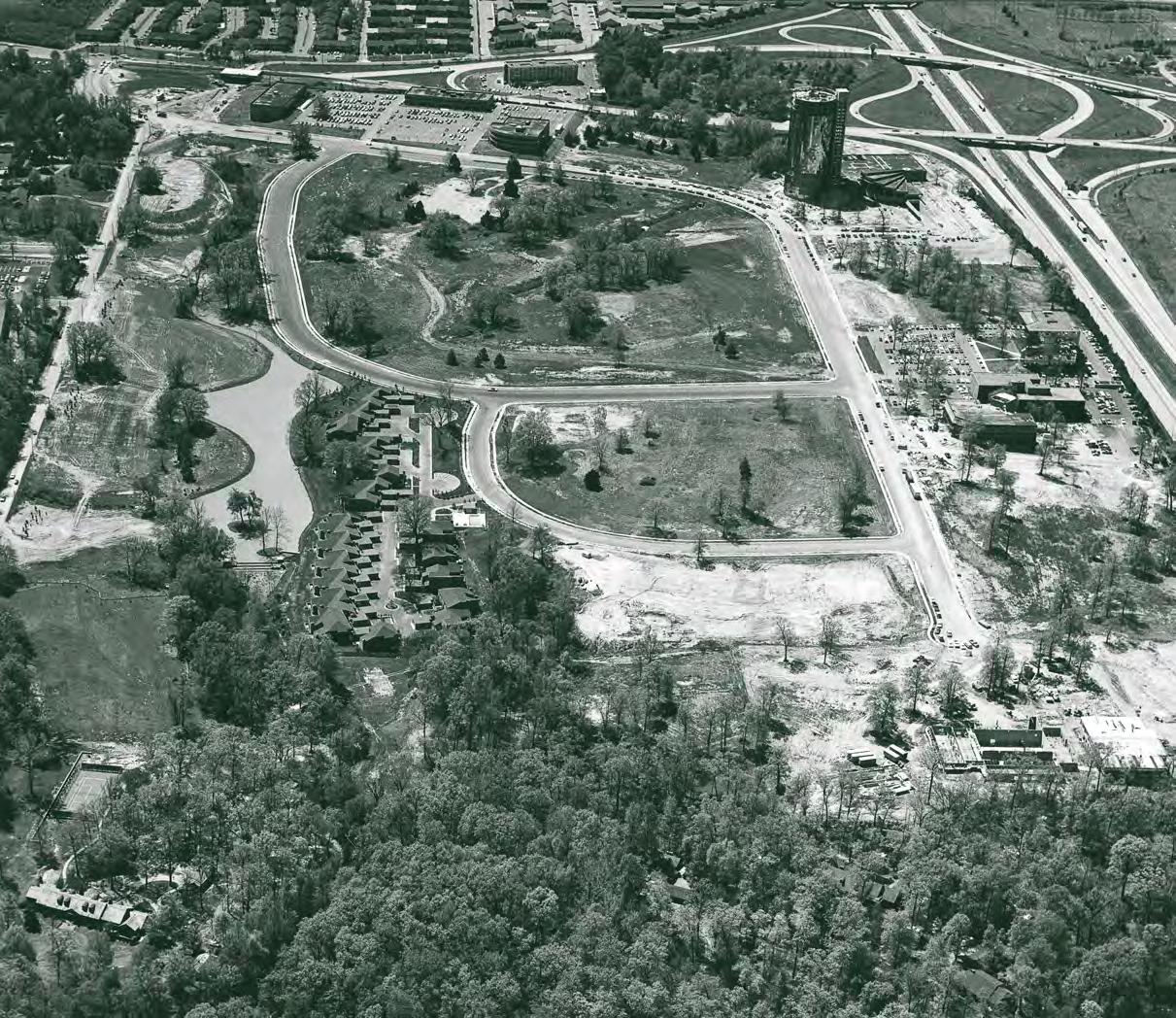
said. “A lot of investments that the company is benefitting from today, he made maybe 40, 50, or 60 years ago.”
After earning a degree in political science from Washington and Lee University, Joel Fulmer also joined Boyle in 1972. He was the son of Albert Fulmer, who had played a major role in acquiring much of the farmland that later became Boyle’s most high-profile developments.
Joel Fulmer eventually became involved in the company’s industrial properties, developing
factories and warehouses for international clients such as Cargill and Hunter Fan, and taking charge of leasing and managing Century Center and the South Perkins Business Center, among others.
Speaking about Bayard Boyle, Sr., he shared the same respect of his colleagues who joined the company in the early 1970s. “His business acumen was remarkable,” he said, “and his ability to relate to people, encourage them, and inspire their loyalty was unmatched.”
Russell Bloodworth was tasked with developing an overall scheme for the Ridgeway land. Not satisfied after climbing the club’s water tower, he took a helicopter flight for a bird’s-eye view of the entire property. “My sense,” Bloodworth shared, “was that the existing terrain and vegetation, carved originally for a golf course, offered us a rare opportunity to preserve ancient oaks while enhancing environmental processes. We worked around the trees and introduced a series of lakes to en-
“Bayard Boyle, Sr.’s business acumen was remarkable, and his ability to relate to people, encourage them, and inspire their loyalty was unmatched.”
hance both water quality and slow downstream flows.”
The first task was to design a traffic plan for the development, and Boyle planners came up with three main streets to circle the development, with only a few cross streets. Despite the eventual large number of tenants, the general effect was an uncongested, and quite beautiful, office park.
The first phase began in 1973, with the construction of a three-story building close to the Poplar Avenue entrance to Ridgeway Center. Boyle Investment Company moved their entire op -
— JOEL FULMER
eration into this building, leaving behind their downtown office.
Other buildings quickly followed, many of the early ones designed by noted Memphis architect Francis Mah. For the most part, they were two- or three-story structures, featuring buff brick exteriors and tinted glass windows. Wherever possible, the oldest and largest trees on the property were preserved, creating an office park with plenty of mature greenery.
Mark Halperin worked with clients to move their offices into Ridgeway Center. Among the ear-
liest tenants were UMIC, Buick Motor Division, National Bank of Commerce, New England Life, and Rhea & Ivy. Established in Midtown in 1939, First Evangelical Church erected a new sanctuary, hard to miss with its soaring white steeple, at the northern terminus of Ridge Lake Blvd. in the early 1970s. The Malco chain, operating movie theaters in Memphis for decades, opened its Ridgeway Four cinema in 1976, with a distinctive hand-painted lobby mural depicting movie stars, past and present. An essential component of the new development was the re -

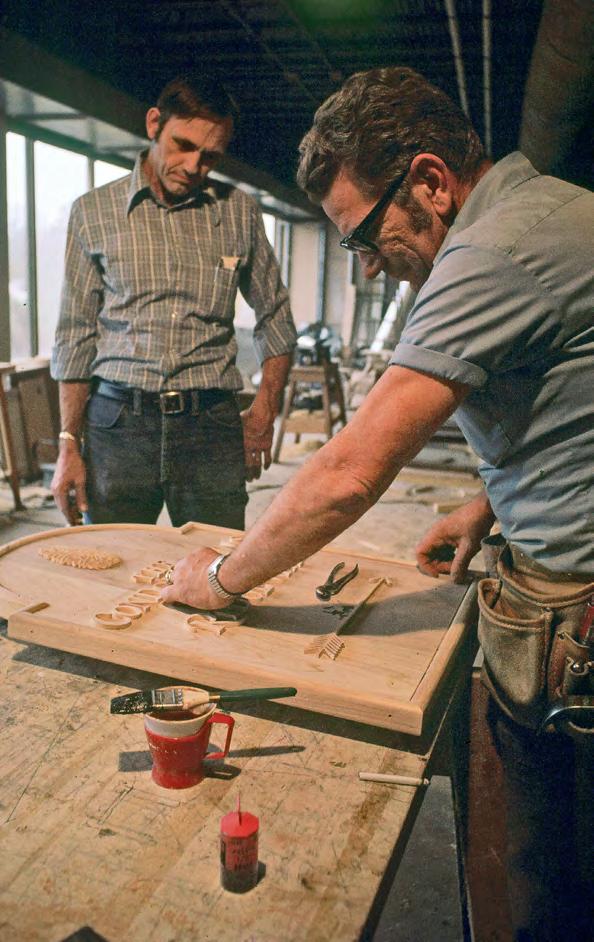
vamped intersection at Poplar Avenue. Boyle estimated that some 4,000 cars would enter and leave Ridgeway Center on a daily basis, so traffic planners, civil engineers, and the Boyle team conceived the Poplar Avenue overpass, to allow easy entrance and exit, and quick access to the adjacent interstate.
“From a driver’s point of view,” said Halperin, “it remains the only unencumbered left turn the entire length of Poplar.” It was a remarkable feat considering that Poplar is this city’s longest and one of its busiest streets, stretching from the riverfront all the way (as Highway 57) to Collierville and beyond.
The most eye-catching element of Ridgeway Center, of course, was the Hyatt Regency
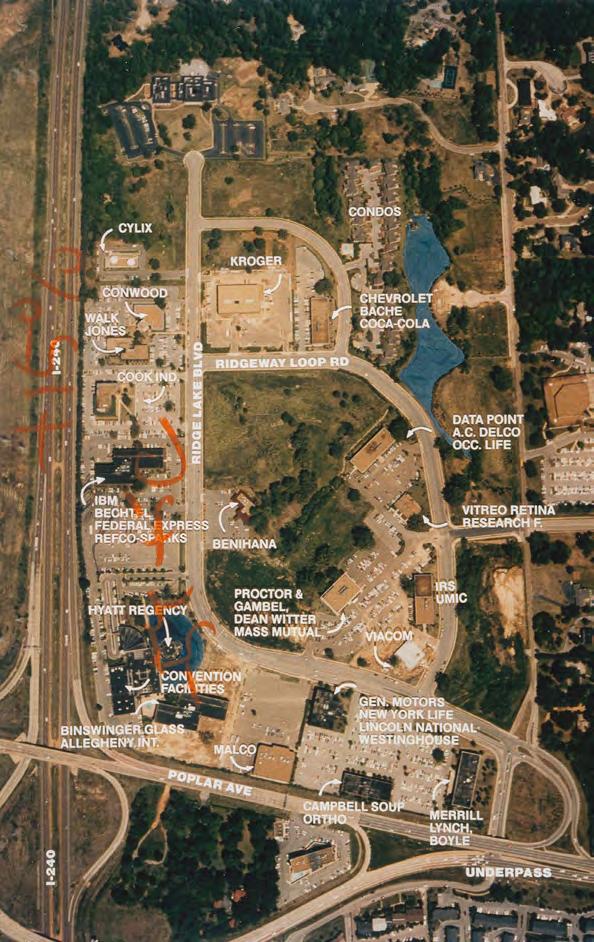
Hotel, developed in a joint venture with Boyle. The Commercial Appeal colorfully but correctly described the 26-story mirror-glass tower as “the maypole around which East Memphis will revolve.” Designed by Walk Jones and Francis Mah, the distinctive hotel opened in 1975. More than 400 guest rooms occupied the round tower, all of them reached by a feature that was, at the time, unique to Memphis: glass-walled elevators mounted outside of the tower. These would whisk guests and visitors to their rooms or to the top-floor restaurant, Hugo’s.
The hotel interior was a complex design. After praising the “pure mirror-glass cylinder that rises from a reflecting pool,” the authors of Memphis: An Architectural Guide described
it in this way: “Inside, the space is shaped like a fan, each blade raised above the other to allow daylight to pour into the interior.” They noted the spacious lobby, the formal Regency Court cocktail lounge, a more casual entertainment area called the Joint Venture, mirrored escalators to lower levels, and even a bridge that carried guests and visitors to the elevator tower. Those elevators “open your view to the surrounding landscape as you go up to your room, thus providing the final panorama in this clever promenade of changing space and perceptions.”
On the lower levels, The Commercial Appeal praised the “large, convex windows in the Garden Café, [which] give a picturesque view of the man-made lake which nearly surrounds the hotel tower.” The
ABOVE LEFT: A handcrafted sign graced the entrance.
ABOVE RIGHT: A “Who’s Who” of American businesses would call Ridgeway Center home, shown here in the mid-1980s.
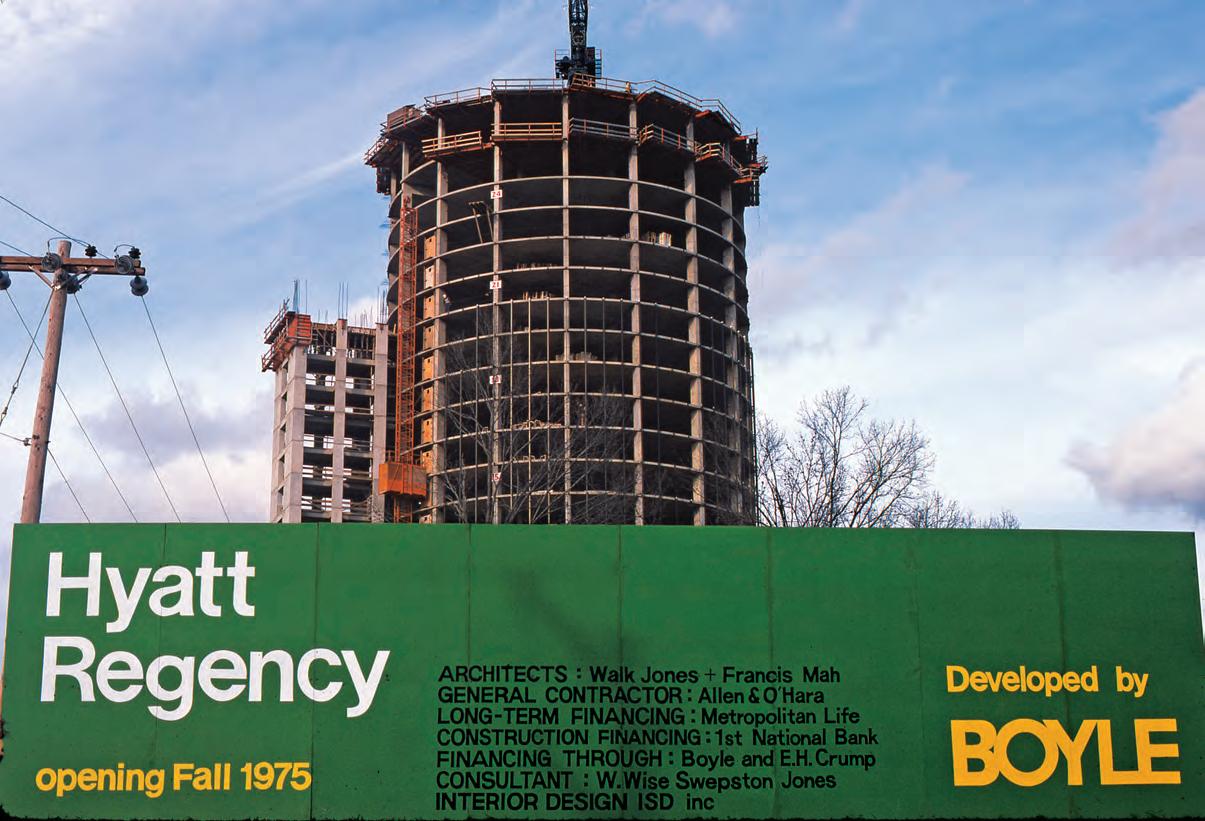
ABOVE: The Commercial Appeal described the circular Hyatt Regency, shown here under construction in 1974, as “the maypole around which East Memphis will revolve.“
reporter concluded his appraisal of the new building: “Overall, the new Hyatt Regency reflects an eye for detail. When the lake was finished, the management knew exactly what was needed — some graceful swans. But locating them proved to be difficult. For the hotel’s grand opening, two white swans had to be flown in from Boston.”
The grand opening took place on September 15, 1975. Over the years, Boyle sold the hotel to other owners, first becoming the Omni Memphis (1989), then Adam’s Mark (1992). Since 2004, it’s been part of the Hilton chain. “The hotel business is complicated,” reflected Morgan.
Even as Ridgeway Center filled with tenants, and Boyle Investment Company seemed to be working on impressive projects
all over town, behind the scenes, “The 1970s were extraordinarily tough times for the real estate industry,” said Bloodworth. “It was a difficult time. We’d had a great burst of investment activity through the 1960s and into the early 1970s, but in the years of Jimmy Carter’s presidency, just when we were getting started with the Ridgeway project, interest rates soared to 18, 19 percent.”
On top of that, inflation was climbing, and the Arab oil embargo pushed gas prices higher than Americans had ever seen. So while Boyle was reshaping the face of Memphis, discretionary spending hit an all-time low. “It was certainly one of the worst times we’ve ever experienced in our industry,” said Bloodworth. “I thought the world was coming to an end, but tough times are when character and deep pockets mat-
ter the most.”
When Ronald Reagan took office in 1981, Bloodworth said, “The interest rates went down, and things really brightened.”
Even before that happened, though, Boyle was able to expand River Oaks and other developments around town. The company was also at work on major subdivisions such as Raleigh Heights and River Birch Farms. Ron Hickman joined the firm to head up the residential development division, both building subdivisions as well as homes. O.T. Whitehead was his righthand man in the field. When Ron left to join the Kemmons Wilson firm, Trey Hayden took over.
Akey project in Germantown during the 1970s was the beginning of Farmington. Embracing more than 1,000 acres, this
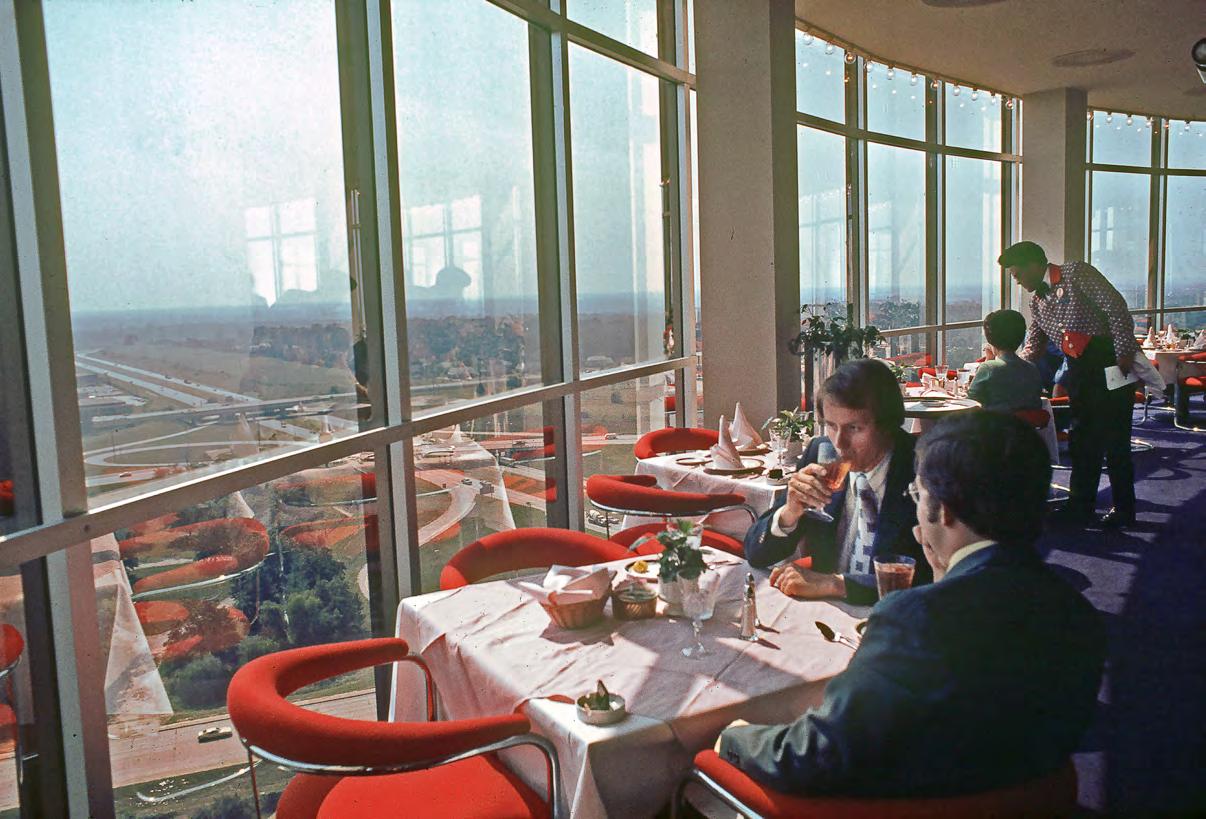
development — a joint venture with Lloyd Lovitt and the Willey family — would contain 800 single-family homes, 322 multi-family apartment units, 88 condominiums, retail shopping, and even a country club (with golf course and tennis courts) for 400 members. Al Austin and Lewis Weeks played an important part in this project.
After the debacle of the 1973 Arab Oil Embargo, the economy was faced with roaring inflation and high interest rates. Many real estate developments suffered, including a golf course development by others east of Memphis on I-40 called Stonebridge. Connecticut Mutual was the lender. Reminiscent of the 1930s, after the original developer defaulted, it turned to Boyle for assistance. The project was situated on 700 acres and included more than 500 single-family lots, condos, an 18-hole golf
course, eight tennis courts, and a clubhouse for 400 members.
In spite of the national economy, the 1970s also saw more than a dozen apartment communities built, owned, or managed
Within just a few years, Ridgeway Center had become “the city on the edge of the city.”
by Boyle. These smaller projects ranged from the 41-unit Eventide Condominiums in East Memphis, the 90-unit Lexington Apartments in Raleigh, the 105-unit Birches in Whitehaven, to much
larger communities such as the Raleigh Forest Apartments (200 units) in Raleigh, the Continental Village Apartments (260 units) in Southeast Memphis, and the Hickory Ridge Apartments (378 units) off Winchester Road.
Shopping center developments remained a large segment of the company’s portfolio. During the 1970s, Boyle was directly involved in such retail developments as the Park Center Shopping Center at Park and Getwell, Balmoral Shopping Center at Quince and Ridgeway, and Glen Haven Shopping Center at Perkins and Knight-Arnold.
As Ridgeway Center began to gain significant traction, Boyle Investment Company acquired more land to the east, for the decades to follow. Ridgeway Center was becoming “the city on the edge of the city.”
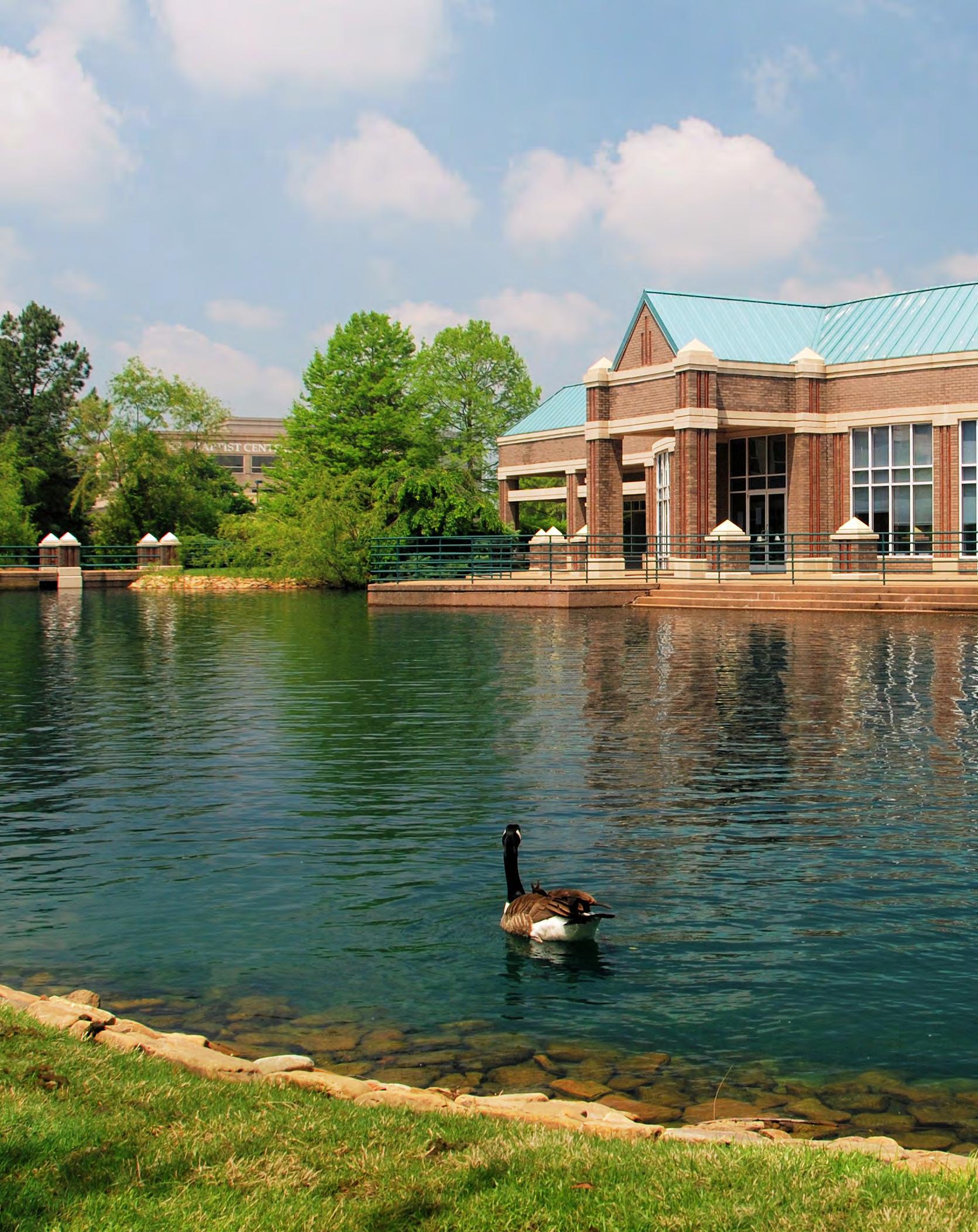
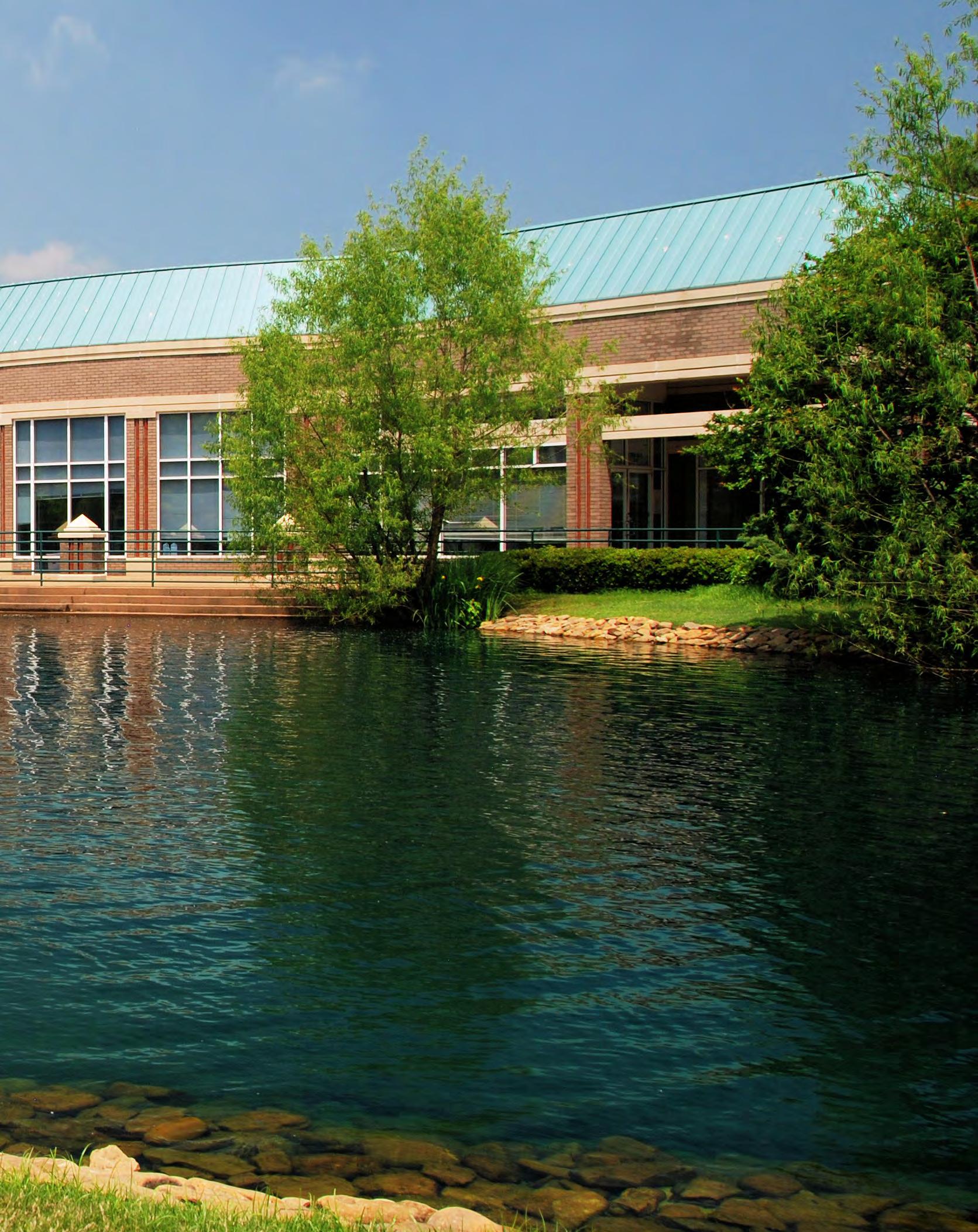
would later be purchased by Baptist Hospital and converted to medical uses.
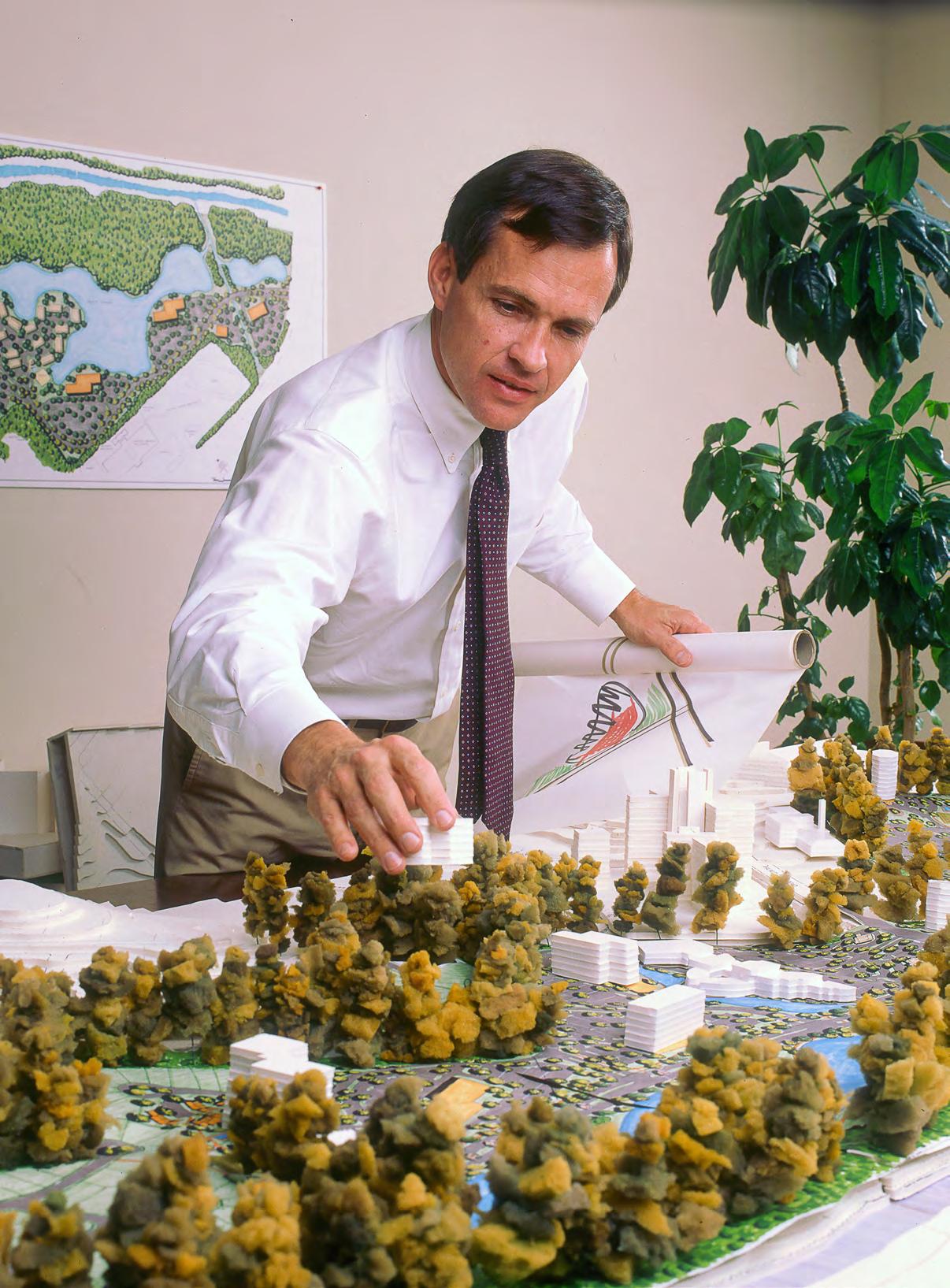
OPPOSITE: Russell Bloodworth considering alternative massing options north of Walnut Grove Road in the Humphreys Center development.
In the early 1980s, Boyle Investment Company’s Office Development Team had grown significantly and continued to bring a variety of new tenants to Ridgeway Center. The 16 buildings in the complex became home to the corporate offices or headquarters for IBM, Provident Life Insurance, Allegheny Airlines, Memorex, the Bogatin Law Firm, FedEx, AT&T, Tru-Temper Sports, Sparks Commodities, Promus Hotels, Kroger, and others.
Bechtel, Inc., at the time the world’s largest engineering and construction firm, with international headquarters in San Francisco, decided to open a new office in Memphis that would focus solely on the construction of nuclear power plants. After evaluating other office parks in the city, they chose Ridgeway Center, moving engineers, planners, and other professionals to the ground floor of 889 Ridge Lake Blvd.
“The tenants we’ve brought to Ridgeway Center have been a who’s who of American business,” said Mark Halperin, then Boyle vice president, and later chief operating officer. “And I don’t think people truly understood at the time what a huge project this was for Memphis.” He gives well-deserved credit to the team at Boyle for making the project a reality — transforming a former golf course into this city’s first true mixed-use development, with a special nod to Bayard Boyle, Sr. and Jr. for seeing the potential of the land, and to his colleague Russell Bloodworth, executive vice president, for his keen attention to detail.
“Rusty is another of our company’s true visionaries,” said Halperin. “He sees things that other people simply cannot see — color and scale and mass. He can take a blueprint that’s just a one-dimensional drawing, and has a gift for seeing it as a fully formed three-dimensional building, or in this case, an entire office complex.”

Even as Ridgeway Center filled with businesses, two hotels (the Hyatt Regency and a smaller hotel originally called Hawthorne Suites), a church, and the 41-unit Eventide Condominiums, Boyle was looking to expand to the east. The company purchased a 22-acre parcel north of Poplar Road, between Shady Grove and Sweetbrier Roads, which would allow for the construction of several major office buildings between Ridgeway Center and Shady Grove Road by 2020.
As the population increased in Germantown and Collierville, traffic congestion became a problem, as more and more commuters headed to Memphis on a road network that had remained relatively unchanged since the 1930s. The main east-west arter-
between Memphis and Ger-
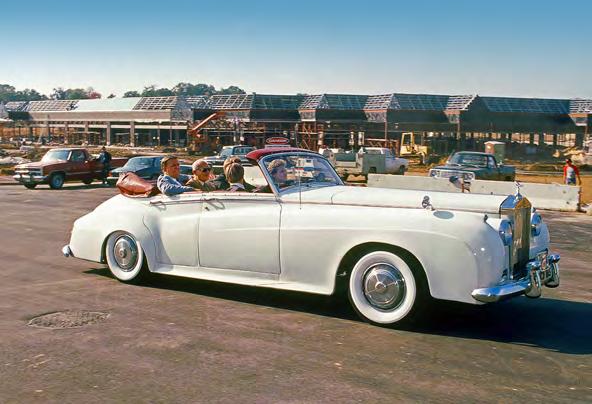
mantown were Walnut Grove Road and Poplar Avenue. By the 1970s, during rush hour it was not uncommon to see both lanes of Walnut Grove Road backed up with traffic, so city officials, planners, and sometimes regular citizens offered solutions to im-
prove traffic flow.
None of these proposals seemed suitable, because many of them involved running another road through Shelby Farms, the 4,500acre public park just east of the Memphis city limits. After years of debate, in 1986 the Poplar Corridor
Task Force came up with a solution — a brand-new boulevard linking Memphis and Germantown that would run parallel to the Wolf River. Along its one-and-a-half-mile length, other major streets in the area, such as Shady Grove, Kirby Parkway, and Ridgeway would tie into the new road, funneling traffic away from Poplar Avenue.
The Memphis portion of this six-lane divided road would be named Humphreys Boulevard, after the family of Herbert Humphreys, the former president of
the Humko Products Company. His widow, Wilda Humphreys, in partnership with Boyle, donated most of the land, with the rest of the property donated by Boyle Investment Company (64 acres) and other families, including those of Jack Erb, John B. Thompson, and Billy Clark to facilitate timing of the boulevard’s development.
Humphreys Boulevard wouldn’t just be a six-lane superhighway. Under a special agreement with the city, the roadway would be transformed into one of the most
Humphreys Boulevard
beautiful in the county, lined on both sides with Red Sunset Maples, and the wide median filled with other plantings. Along the north side, between the right-ofway and the Wolf River, Boyle created an easement encompassing 90 acres for the Wolf River Conservancy, to allow for the construction of walking and hiking trails, along with a series of ponds to make the drive as scenic as possible while preserving the natural beauty of the area. Bloodworth told reporters that “the plan was
wouldn’t just be a six-lane superhighway.
Under a special agreement with the city, the roadway would be transformed into one of the most beautiful in the county, lined on both sides with Red Sunset Maples, and the wide median filled with other plantings.

“The
tenants we’ve brought to Ridgeway Center have been a who’s who of American business. And I don’t think people truly understood at the time what a huge project this was for Memphis.”
— MARK HALPERIN


Humphreys Boulevard stopped just past Kirby Parkway. The city of Germantown soon approved an extension of the road, to be called Wolf River Parkway, that would link it with Germantown Road, and eventually stretch to Collierville.
Amajor component of this new development would take advantage of the future interchange of Humphreys Boulevard and Walnut Grove Road. In 1986, as work continued on the roadway itself, which would be completed by 1988, the Memphis City Council approved Boyle’s $150
million commercial and residential development just east of the Baptist Memorial Hospital complex. Humphreys Center would be similar to Ridgeway Center, a multi-use site that would include office buildings, a hotel, townhouses and other multi-family residences, retail spaces, a gas station, a fast-food franchise, and even a climbing wall.
Boyle began construction in 1989 on a retail complex of 62,000 square feet, which would occupy a single-story building, with easy access to the new boulevard.
The Shops of Humphreys Center quickly filled with upscale tenants, eager to join the new development. Original tenants included the Sekisui restaurant, Elite Travel, T. Joseph Clifton Art Gallery, Guy’s Tuxedos, Eston Styling Salon, and River Oaks Wine and
Spirits. Advertisements for Humphreys Center touted its unique features: “Everything you need is right here, including some things you don’t expect. Like outside benches and a beautiful lake and fountain. Classical music in the air. Striking architecture and a feeling of elegance.”
ABOVE: Ridgeway Center, 2022. patterned after a development along the Potomac River. Only the south side of the [Wolf] River will be development, leaving extraordinary river vistas that can never be disturbed.”
A three-story, 110,000-squarefoot medical office building was next, along with other buildings carefully situated around the site — eventually totaling 550,000 square feet of office space.
Humphreys Boulevard extended north of Walnut Grove Road. On this short section, just east of the Christian Brothers High School campus, Boyle Investment Company developed several major projects, including the headquarters building for

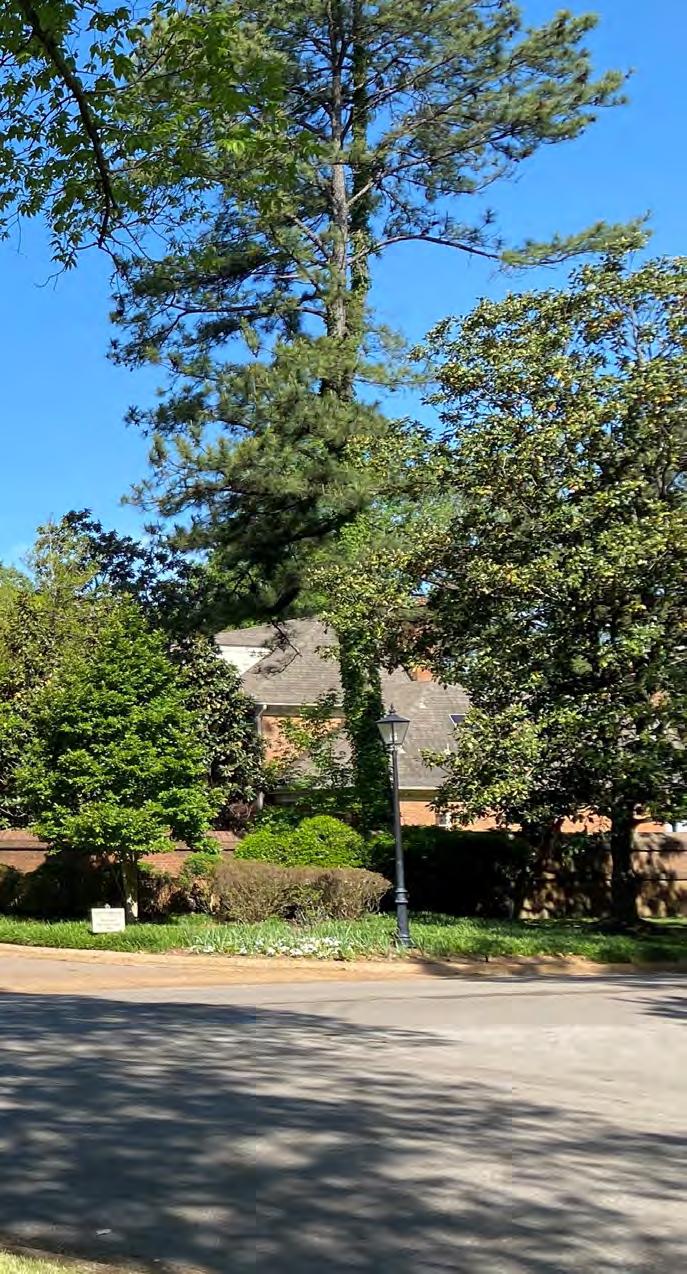
Baptist Memorial Health Care, the West Clinic (now Le Bonheur Outpatient Center), and the Southeastern Regional Headquarters for the U.S. Postal Service.
In 1983, Boyle Investment Company began an addition to River Oaks, which now had some 200 homes completed and others under construction along Shady Grove and the adjacent streets. River Oaks would eventually comprise more than 500 single-family homes. The new 73-lot project would be called The Gardens of River Oaks, and it would follow the same general design of upscale, beautifully designed homes sheltered by many old-growth trees, but with a secure entry off Sweetbrier Road.
“The concept is to leave the land heavily wooded with rolling hills,” reported The Commercial Appeal, “and enhance the natural terrain as much as can be when it is disturbed by building roads, sewers, utilities, and houses.”
Despite the increasing development along the Poplar Corridor, the northeast corner of Poplar Avenue and Shady Grove Road remained little more than an open field. That land had been owned by the Erb family of Memphis for decades, who had personal connections with the Boyle family: Mrs. Imogene Erb was Bayard Boyle, Sr.’s niece.
In 1987, Boyle Investment Company reached a joint agreement with the Erb family to purchase 15 acres of the 20-acre site and began to transform this property into a specialty retail center.
“No detail was left to chance. Gates and walls were closely studied.”
“What we have done is to lace a ribbon of asphalt through the terrain in the valleys. What we have is narrow streets, no sidewalks, washed pea-gravel curbs, large lot sizes, and an entry with electronic access,” added David Gribble.
No detail was left to chance. Gates and walls were closely studied from European estates and Virginia, so the brick walls and entrances emulate the best. Even such a seemingly minor element as the brick caps atop the walls at the entry precisely match those at the Governor’s Palace in Williamsburg, Virginia.
“We thought the time was right for this area to have an upscale shopping center,” said Steve Bowie, who managed the development, “so we began planning The Regalia Center.” The design by Cooper Carry Architects was eye-catching: a long brick and granite crescent of some 20 retail shops, with a decorative stucco façade topped with a copper roof. A smaller building closer to the street would hold two or three larger retailers. Adjacent to The Regalia, just to the north, construction also began on the Embassy Suites Hotel, with 212 rooms. To the west would be what was then the headquarters of Union Planters Bank (now Regions).
The new 90,000-square-foot center filled quickly. Among the first tenants were Johnston & Murphy shoes, Graham & Gunn clothiers, an importer and retailer of Asian antiques called Design International, and The Cooker Bar and Grille.
“If we wanted to, we could have


filled up the whole center with restaurants,” said Robert Lofton, senior vice president of Boyle. He noted that the company still preferred to offer customers a variety of shopping and dining options, but as far as places for them to eat, “it’s been great for us because we’ve had the luxury of picking the right one.”
The “right one” turned out to be Owen Brennan’s, an upscale New Orleans-style restaurant, patterned after the original Brennan’s in that city. A group of American and European investors backed this new venture, which included nationally syndicated food writer Burt Wolf. When the
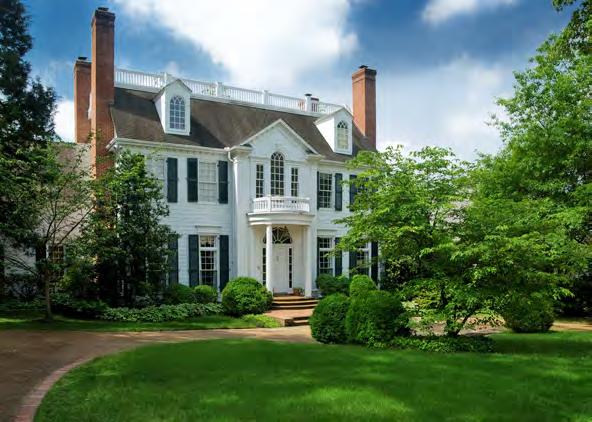
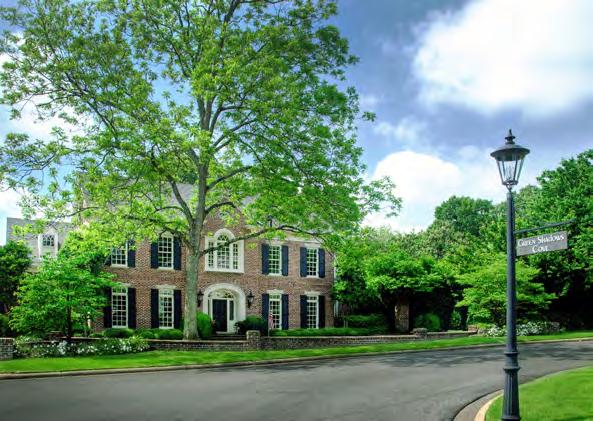
restaurant opened in March 1990, The Commercial Appeal ’s food critic wrote that it “offers the flavor and atmosphere of a Crescent City restaurant.” She praised the food and concluded, “For an outstanding meal from the start, it’s hard to beat Owen Brennan’s.”
Boyle now had a pair of upscale retail centers north and south of their new River Oaks developments — The Regalia and The Shops of Humphreys Center. “We will be flanking the highest income area of the city with these two developments of upscale specialty retailing,” Mark Halperin told reporters. “We think they will complement each other nicely.”
From inception, Boyle Investment Company has depended on a legal counsel. Initially, Thomas Farnsworth provided in-house counsel. As projects grew more complex, the company used outside counsel to structure ventures, lease agreements with commercial tenants, and legal agreements with builders at its residential developments. Charles Cobb with Evans, Petree, Cobb & Edwards handled the company’s legal needs for many years, and in the early eighties Cobb handed those duties off to his protégés, Lytle Nichol and Woods Weathersby.
“I don’t know what we would have done without Woods,” said
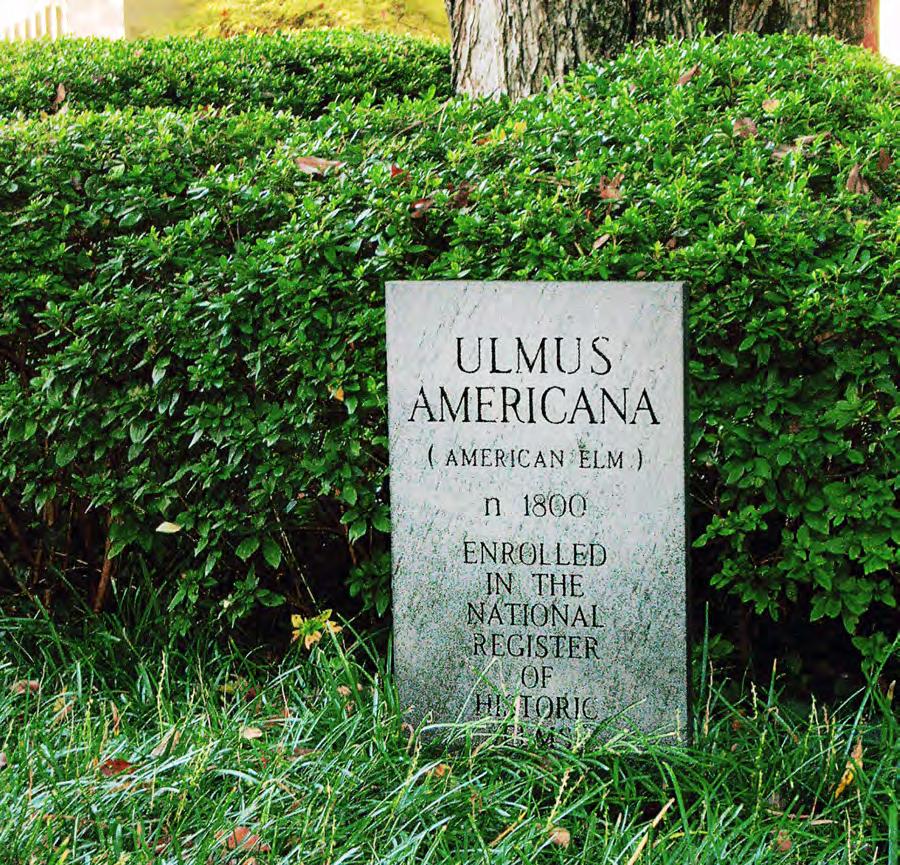
Bayard Boyle, Jr. “For over 40 years, Woods has worked relentlessly with our partners, lenders, and staff to see that every project is well structured. He has been a great friend as well as a major corporate asset. He has been invaluable in advising on business decisions and personnel relationships outside of purely legal matters.”
The feeling was mutual. Weathersby commented, “Boyle’s unwavering integrity demonstrated by their experts in Memphis and Nashville is admirable, and the remarkable accomplishments and growth of their enterprises have been a sight to behold. Our relationship always has been defined
by a commitment to excellence, and their exceptional track record in real estate development and investment stands as an inspiring benchmark.”
Dealing carefully with money since its inception in 1933 has been key to the company’s longterm success. Important treasurers were Jack Tackett and Charles Claiborne. Claiborne served for 33 years from 1983 to 2016. Accounting and financial reporting for a large portfolio of investment properties grew increasingly complex, including 150 different real estate entities comprised of different investors. Claiborne’s atten-
tion to detail and astute financial acumen were key to dealing with fiscal challenges.
Intricate joint ventures became commonplace, and tax implications were carefully considered. The company’s focus on long-term capital appreciation made Boyle an attractive partner for highwealth individuals and financial institutions with similar goals — particularly those who owned strategically located, underdeveloped property.
Asignificant restructuring took place at Boyle Investment Company in the mid-1980s. So that it could concentrate its re-
“I don’t know what we would have done without Woods. For over 40 years, Woods has worked relentlessly with our partners, lenders, and staff to see that every project is well structured.
—BAYARD BOYLE, JR.
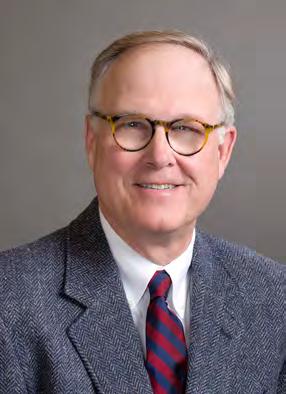
years.
sources on more multi-use commercial projects, the company sold off its residential sales division, which earlier had been directed by Lewis Weeks. Ceylon Blackwell had directed that division for the last 10 years, so he took over residential sales on his own. For one year, the new operation was called Blackwell/Boyle Realtors,
until it was transitioned away from the company.
In the mid-1980s, ownership of the company also morphed. Previously, ownership had been transferred to Bayard Boyle, Sr.’s three children and their families. With the opportunity to restructure, a third of the assets were spun off to Bayard Boyle, Jr.’s sister, then
residing on the East Coast, including the entirety of the large portfolio of apartment communities. With the restructure complete, the two remaining family interests would now be in the Bayard Boyle, Jr. and Henry Morgan families, which would allow for the expansion of large-scale projects.
BELOW: Bayard Boyle, Sr., was a visionary businessman, a gifted athlete, had close friends in high places, and could trace his roots back to the city’s founders, but he never put himself on a pedestal, sought the limelight, or treated the people around him as other than equal.



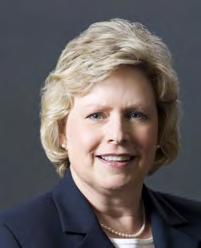
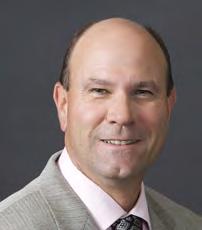
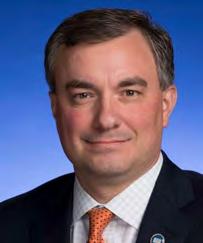
After World War II ended, Boyle hired James H. Wetter, a Princeton graduate, to run its newly formed insurance agency.
J
ack Craddock joined in 1957 and succeeded Jimmy Wetter as president of the agency in 1972. Jack served on the UT Board of Regents and was chairman of the Shelby County Republican Party of Tennessee.
W. Patton Steele, Jr. became president in 1998 after Jack Craddock’s retirement and ran the agency with Cindi Gresham’s help until his retirement in 2009.
Cynthia Gresham started with the agency in 1987, was promoted to vice president in 1998, and president in 2009. Gresham was actively involved in the Insurors of Tennessee and the Independent Insurance Agency and Brokers Association and arranged for the agency to become a founding member of Securerisk, now Fortified Agents. This valuable connection has allowed the agency to offer more services and carriers for its customers.
Steve Peay had worked with the agency while he was with Crum & Forrester Insurance Company and joined Boyle in 1990 as a producer. He was promoted to senior vice president in 2010 and took over as president in 2023 when Cindi Gresham retired.
Ron Gant, s enior vice president, helps Steve Peay manage the agency and is also a producer. In 2016, Ron was elected to the Tennessee House of Representatives. In 2018, he was elected Assistant Majority Leader and is responsible for guiding the Governor’s legislative agenda through the House of Representatives. Ron is a member of the Finance, Ways and Means Committee, Education Committee, Civil Justice Committee, and Children and Family Affairs Committee. Ron was president of Insurance Associates of Tennessee, Inc. and sold the firm in 2017. He joined Boyle Insurance Agency in August 2018.
Today, Boyle Insurance Agency, Inc. offers all lines of business and personal insurance including bonds. About 80 percent of the agency’s business is commercial risks, 15 percent personal, and 5 percent life and health insurance. It specializes in professional liability for attorneys, architects and engineers, and insurance for nonprofit organizations, construction, restaurants, and senior care including home health, assisted living, and continuing care facilities along with Main Street and high-value personal lines accounts.
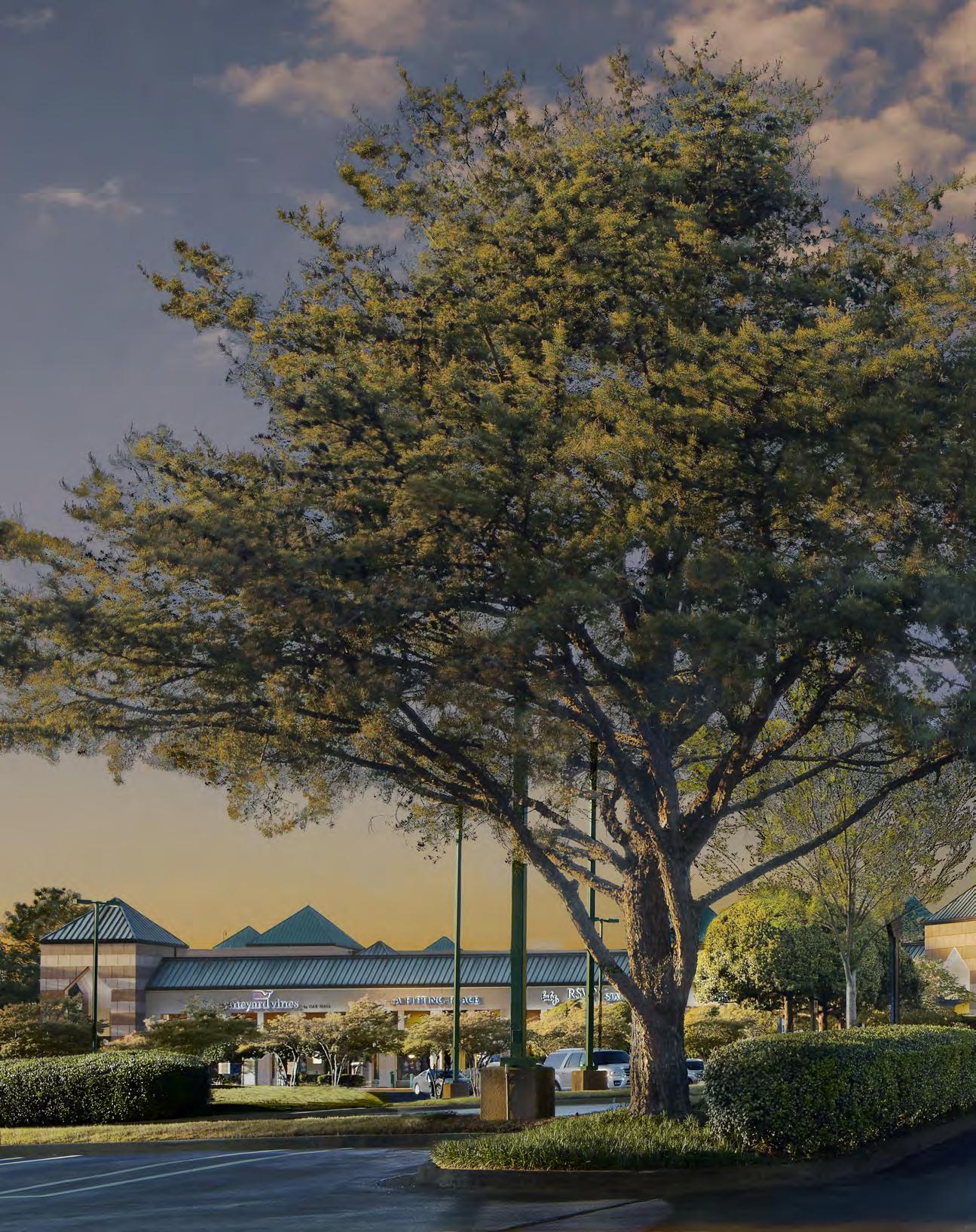

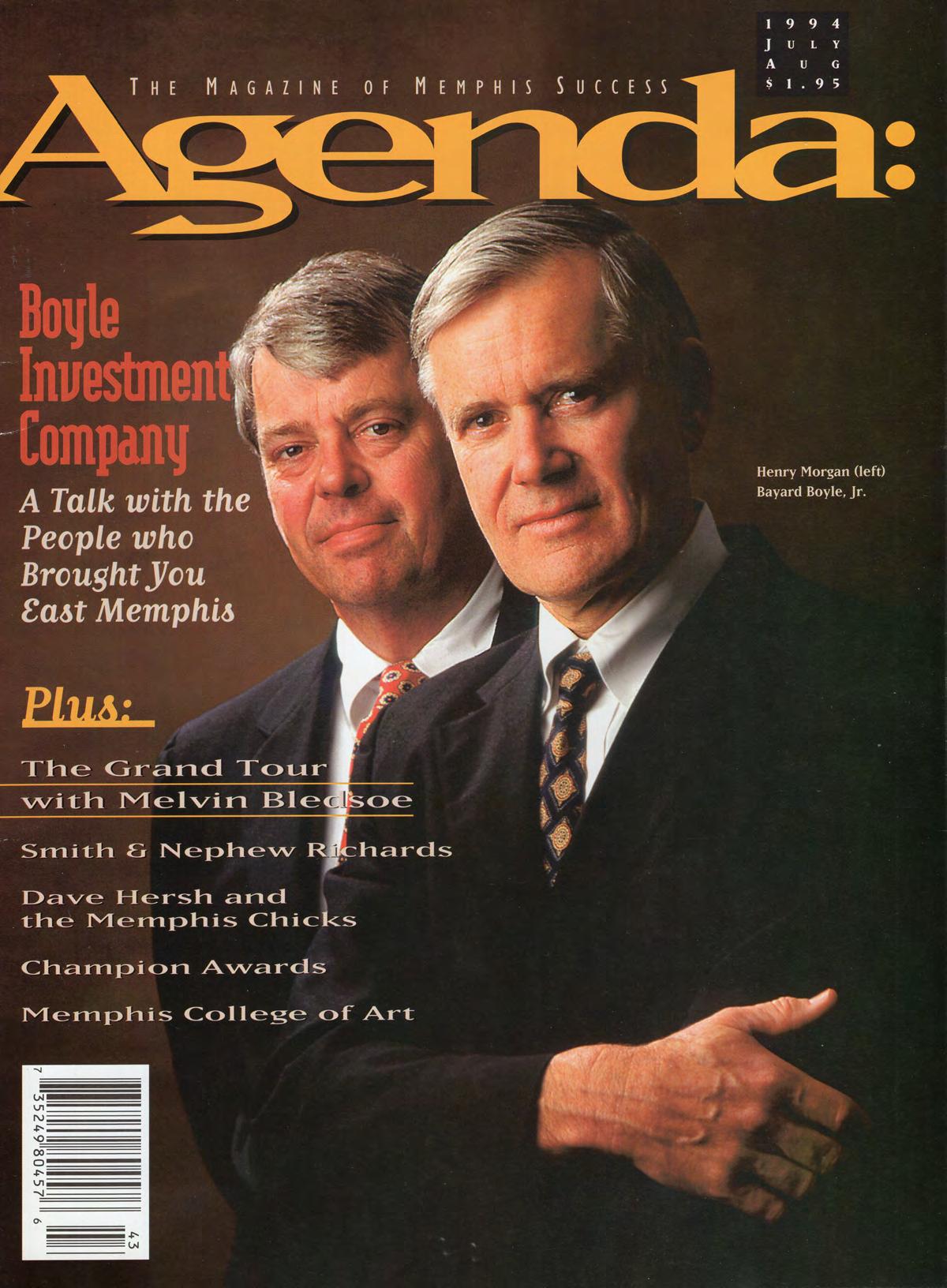
OPPOSITE: The July/August 1991 issue of the local business publication Agenda featured Boyle Investment Company. On the cover: Henry Morgan (left) and Bayard Boyle, Jr.
Two of the founders of Boyle Investment Company passed away within three years of each other in the early nineties. B. Snowden Boyle, Sr., former chairman of the company, died in Memphis on October 11, 1992, at the age of 91. Active in civic affairs, he had served as chairman of the finance committee for Southwestern at Memphis (now Rhodes College) and also served on the board of the Crippled Children’s Hospital.
J. Bayard Boyle, Sr. passed away on July 1, 1995, while on vacation in Michigan. The Commercial Appeal hailed him as a “real estate visionary” and the headline to his front-page obituary noted that he had “Transformed Shelby County.” His son, Bayard, Jr. said, “He was a genius at buying property, and he had wonderful relationships with people. They all liked him and trusted him.”
That relationship is evident in the tributes that came from his many friends and business associates. “He started the development of all of East Memphis, really,” said Allen Morgan, Jr., founder and chairman of Morgan Keegan. “All of the [Boyle company] properties were quality properties, and it was a good group to lead the community in real estate development.”
“The business projects, the social projects, the civic projects — when he got involved in them, the crowd swelled because he just had that kind of magnetism,” said businessman Neely Mallory. “If Boyle Investment Company was doing it, it was always done right. Just like a handshake used to be in the cotton business.”
“He never took himself seriously, but he took seriously what he believed in. He was really strong on honesty, honor, integrity, courage, and loyalty. He had those qualities in spades, and he instilled them in others.”
— BAYARD BOYLE, JR.

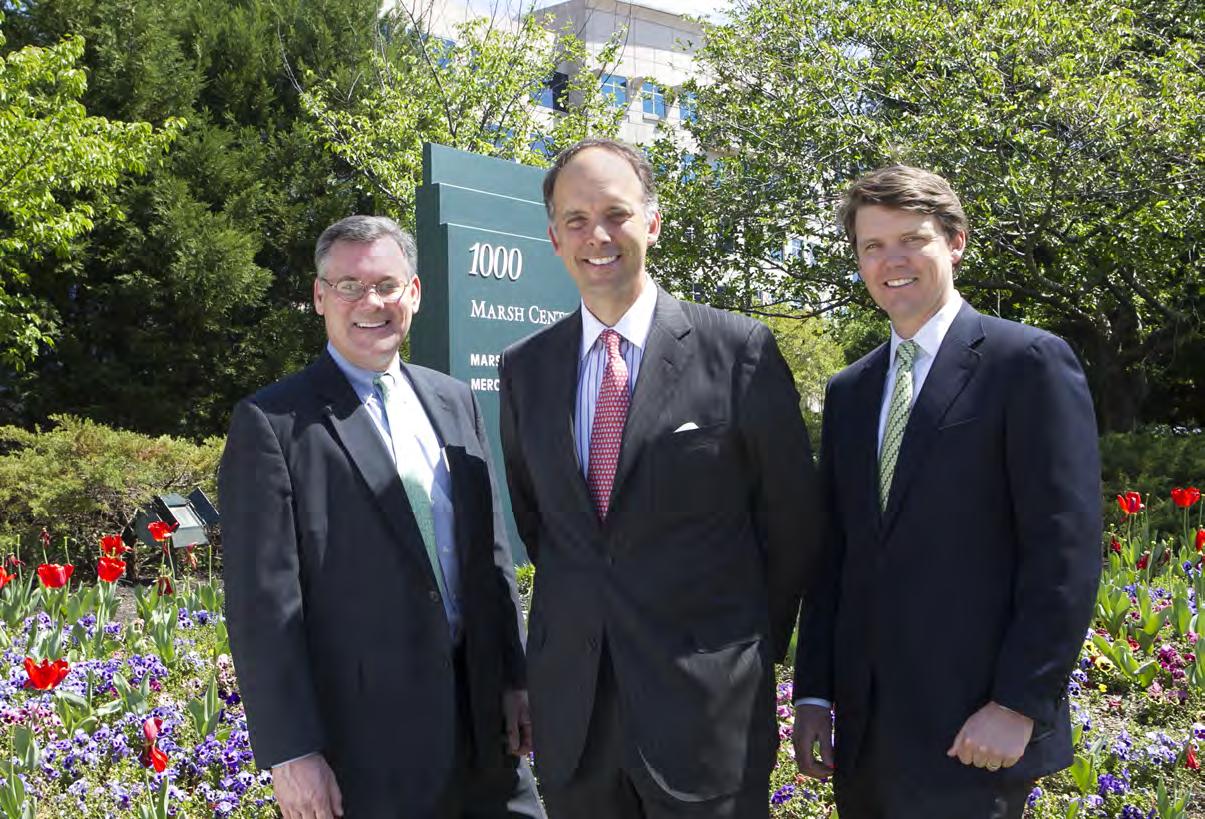
Colleagues at Boyle shared their deep respect for their former boss. Referring to the many projects in East Memphis, Russell Bloodworth, then senior vice president, said, “He established his foothold out here in the 1930s, and then built on that. This whole area is part of his vision.”
“He had great vision,” said Mark Halperin. “He made you feel like you were seven feet tall, and he did that for everybody.”
“He was the biggest developer in East Memphis,” said fellow developer and builder Lloyd Lovitt, Jr. “I think he uplifted the areas he developed. I can’t think of anybody I respect more.”
Bayard, Sr. had served as chairman of the board and the company’s chief executive officer until his retirement in 1985. Even so, he remained active with the company’s projects, as well as many community endeavors. He served as director of First Tennessee Bank and the Memphis Chamber of Commerce, and was past president of the Memphis Rotary Club and the Mortgage Bankers Association of Memphis. He was a former director of United Way, a former trustee of the Hutchison School, a past director of the Memphis Transit Authority, and a past director of the Crippled Adults Hospital.
To honor his more than 25 years as an active member of the board of Rhodes College, in 1970, the college presented him with the honorary degree of Doctor of Humanities. Boyle’s employees donated a garden in his honor in front of the Rhodes Campus Life Center.
Summing up his father’s life and career, Bayard, Jr. said, “He never took himself seriously, but he took seriously what he believed in. He was really strong on h onesty, honor, integrity, courage, and loyalty. He had those qualities in spades, and he instilled them in others.”
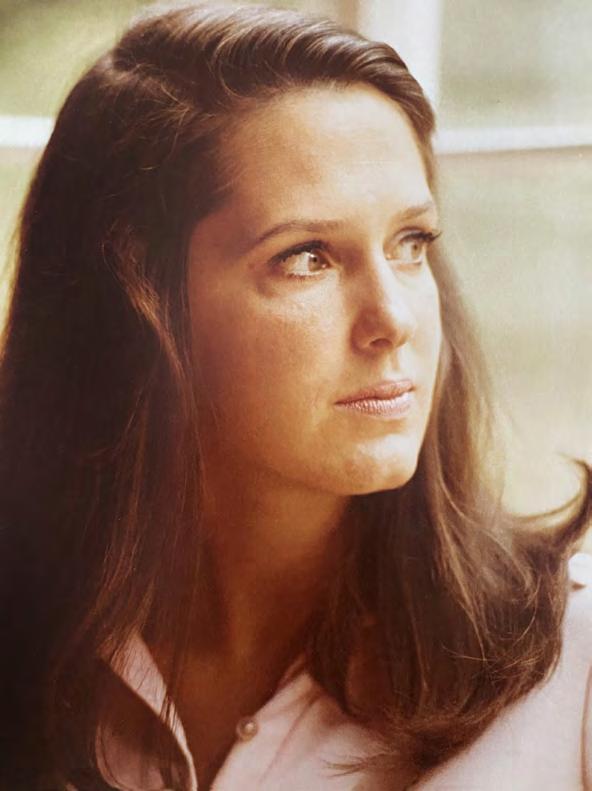
IABOVE RIGHT: Custom homes built by Russell Kostka on Ascot Park Common in The Cloisters of River Oaks.
n the 1990s, another generation of the Boyle family joined the company. Paul Boyle, the son of Bayard, Jr., had attended St. George’s School and Memphis University School, then graduated from Washington and Lee University in 1991.
“On the weekends when I was little, Papa would come get me and we would have wonderful adventures, from sailing a t Lakeland to riding horses on the Wolf River to buying a bunch of unsolicited chickens for my mother,” Paul recalled.
His first job with Boyle came in 1992, working on the construction of the new Southeastern Regional Headquarters for the U.S. Postal Service. Paul also began selling lots for Boyle Investment Company’s newest residential development, The Cloisters of River Oaks, a joint venture with builder Russell Kostka.
Located at Shady Grove and Sweetbrier, The Cloisters was
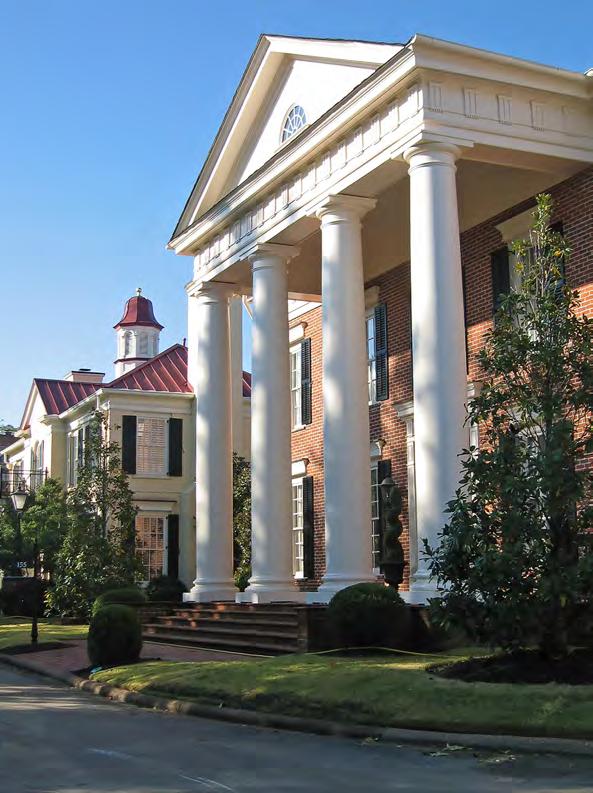
the newest addition to the River Oaks neighborhood. The 40-acre community, comprising 65 lots, opened in 1995.
Paul rose through the ranks of the company, named president of Boyle in 2013 and chairman in 2022.
“Our company philosophy is to attract the finest people and give them the opportunity in a friendly, team-oriented atmosphere to advance themselves, their families, and their teammates further in life than they might elsewhere,” said Paul. “Our fathers have kept that tradition alive for ninety years, and the Morgan men and I look to do the same. While we have kept people for more than fifty years, like Rusty Bloodworth and Mark Halperin who have contributed hugely to the company’s success, we also have been making phenomenal new additions, including Nashville partners Phil Fawcett, Jeff Haynes, Thomas McDaniel, and Mark Traylor, who have built the largest privately owned real
estate outfit in Middle Tennessee; Anne Brand in marketing; Dena Forbes, who with the new additions of Daniel Parker and the Highwoods team run the best property management team in Shelby County; and Theresa Locastro runs our human resources operation, with the brightest attitude imaginable.
“New hire Bo Lessley, with Debbie Shelton, keeps up the three-generation tradition of having the most cheerful accounting department in the state,” Paul continued. “The addition in insurance of State Representative Ron Gant has brought it to record breaking profits in its 60-year history. Gary Thompson leads the residential department beautifully following Rusty’s tradition of classic taste and preservation of value. We are blessed to have found Matt Hayden through Kathy Pampuro, our office leasing whiz. His gifts of honor, integrity, diplomacy, analysis, and memory are invaluable.
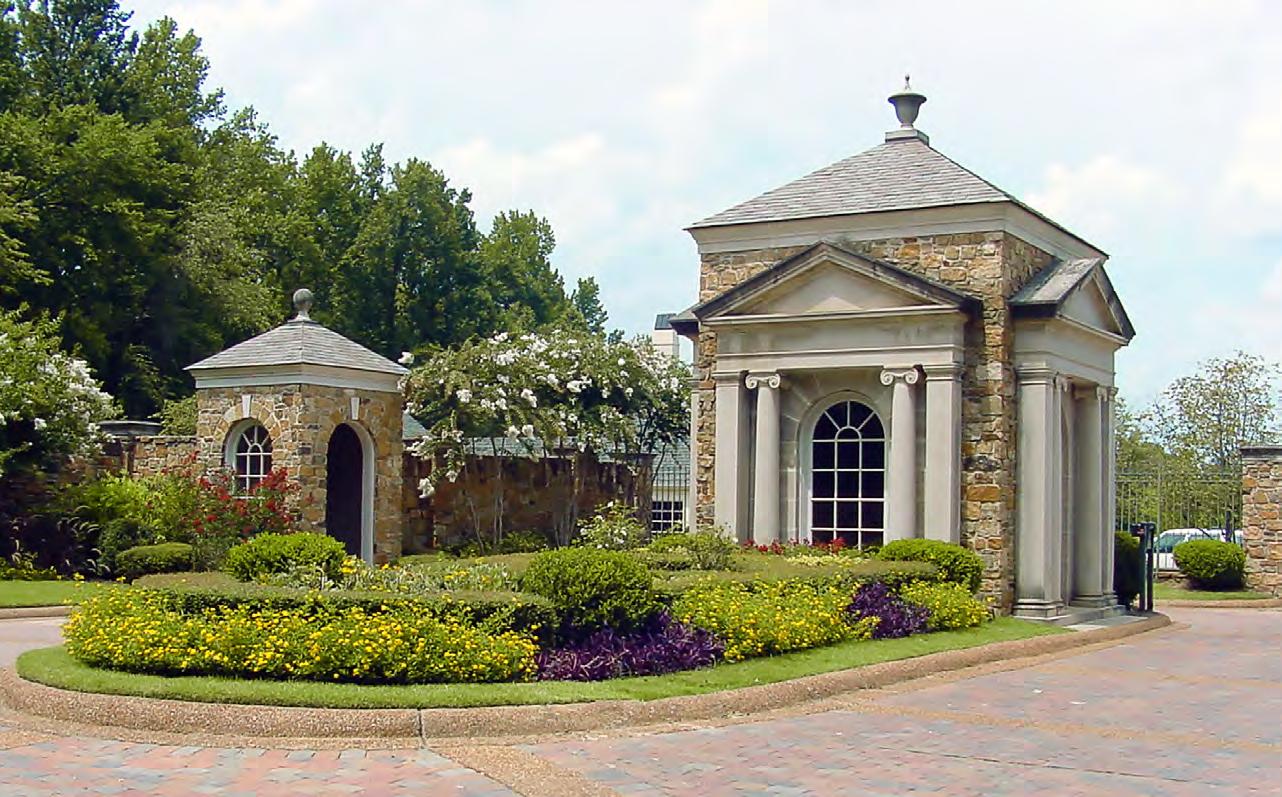
We are so thankful for our incredible partners including Northwestern Mutual (60 years) and Wayne Anderson (15 years). I will never forget meeting with Northwestern in Nashville in 2010. They wanted to build a 175,000-squarefoot, 100 percent speculative office building with a huge, expensive garage. I asked where else in the country they were being this risky. The head guy said, ‘Nowhere, but we will pay two times your basis if you don’t want to do it with us.’ Thomas McDaniel and team finished the building on schedule and budget and beat the projected lease up and rents.
“Knowing I have left out so many invaluable teammates, I will end with thanking my most patient and gracious parents and the finest of cousins, with whom I look forward to decades of a bright future,” Paul concluded.
Two other members of the third generation joined the company during the late 1990s.
“Our company philosophy is to attract the finest people and give them the opportunity to advance themselves, their families, and their teammates further than they might elsewhere.”
— PAUL BOYLE
Henry Morgan, Jr., the eldest son of Snow and Henry Morgan, Sr., has fond memories of riding on the lap of his grandfather, Bayard Boyle, Sr., on Mondays around Farmington, a large residential golf community developed by the company in Germantown in the 1970s. He also recalls drives in the country, where his grandfather would stop to talk to all of the farmers on their tractors. What he later realized was Bayard, Sr. was not only having friendly conversations but was actually negotiating land acquisitions or developing strategic relationships.
When he was a bit older, Henry, Jr. worked summers at Boyle Investment Company, where he did anything the property managers requested at Ridgeway Center. “It was actually very valuable work because it was great time spent with tenants, getting to know them and forming relationships,” he said.
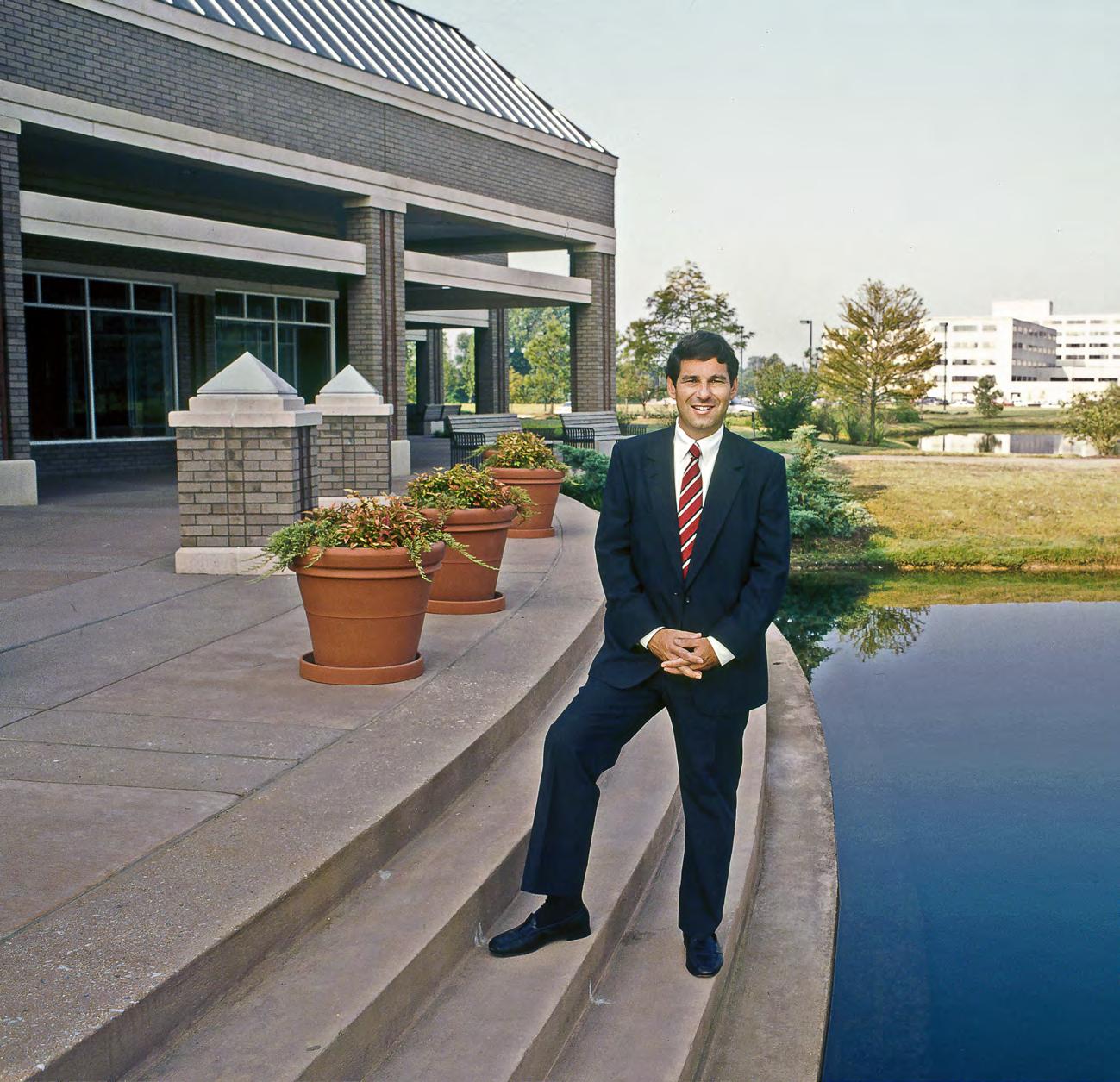

After attending college at Mississippi State in 1993, Henry, Jr. started full-time at Boyle and worked at the company until 2001 in a variety of areas ranging from retail to land development to Mid-America Construction. He spent the majority of his time in commercial sales and leasing led by Mark Halperin.
“My first assignment was serving as property manager for the Humphreys Center office buildings, and it was a great learning experience in forging relationships with our tenants, primarily physicians,” Henry, Jr. explained. “I recall rushing over to an office space where ceiling tiles had fallen. My father gave me great advice in dealing with issues that arose in the buildings — to be like a duck on the water. On top of the water, the duck looks smooth but underneath the water he’s paddling furiously.”
“Mark Halperin was like an older brother or uncle. I grew up with Mark as part of the family. Mark knows how to build a great, phenomenal, and very loyal team, and one of his greatest strengths is forming relationships with people. I think one of our challenges going forward as a company is to continue to cultivate this ability in the next generation of leaders.”
In 2001, Henry, Jr. moved away from Memphis to reside in his wife’s hometown of Fairhope, Alabama, where he continued his career in real estate working in a variety of areas — from commercial leasing, industrial, and multi-family. Meanwhile, he stayed involved in the family business in Memphis, serving on the Board of Directors alongside his brother, Bayard Morgan, and cousin, Paul Boyle.
“Our goal is to maintain and improve upon the culture that my grandfather started,” said Henry, Jr. “Culture is key for long-term businesses. My grandfather, Bayard Boyle, Sr., had the ability to make people feel special when he walked in the room, sort of like the company does when we create a project — we create a sense of arrival.
“Mark Halperin was like an older brother or uncle. I grew up with Mark as part of the family. Mark knows how to build a great, phenomenal, and very loyal team, and one of his greatest strengths is forming relationships with people.”
— HENRY MORGAN, JR.
“The key to the company’s success is hiring and keeping the right people — it’s all about people and relationships,” Morgan continued. “My grandfather really understood and related well to people, whether they were employees, landowners, partners or lenders. My father and uncle [Bayard Boyle, Jr.] were great at hiring really good people and get-
ting out of their way. This is the culture we are working hard to continue.”
“My father and uncle have a great working relationship and they complemented each other very well. They appreciate each other’s strengths and weaknesses. I have the same type of relationship with my brother and cousin, Paul. While our generation has our eye on the future, we can never forget the past,” Henry Jr. concluded.
Bayard Morgan, the second son of Snow and Henry Morgan, Sr., graduated from the University of Mississippi with a bachelor’s degree in anthropology and a minor in art.
His first job at Boyle was working summers helping the property managers at Ridgeway Center. “My dad told me, ‘You need to learn this business from every angle.’ And that was my start,” he said. My first office job was working for our Mid-America Construction Company. I worked under John Faquin, who was kind of the Swiss Army knife around here — he could do anything, and was just a great person to learn from. John had a gift for simplifying complicated issues.”
After graduating, Bayard initially worked for the company under Gary Thompson on Schilling Farms. “Gary was great to work for,” said Bayard. “He is very talented, diligent and a hard worker. Both he and Rusty Bloodworth emphasized how important every detail is in each aspect of developing property.”
Alongside Bayard’s involvement with Boyle he pursued art and built a small studio making pottery nights and weekends. “It’s interesting how things just “stick”
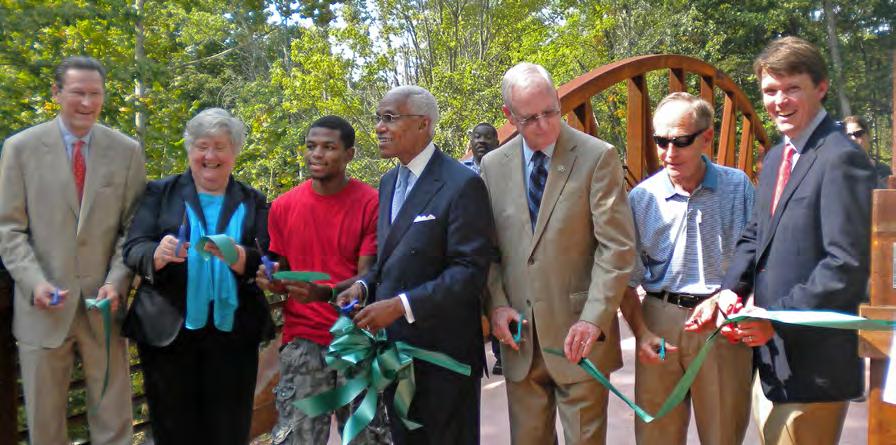
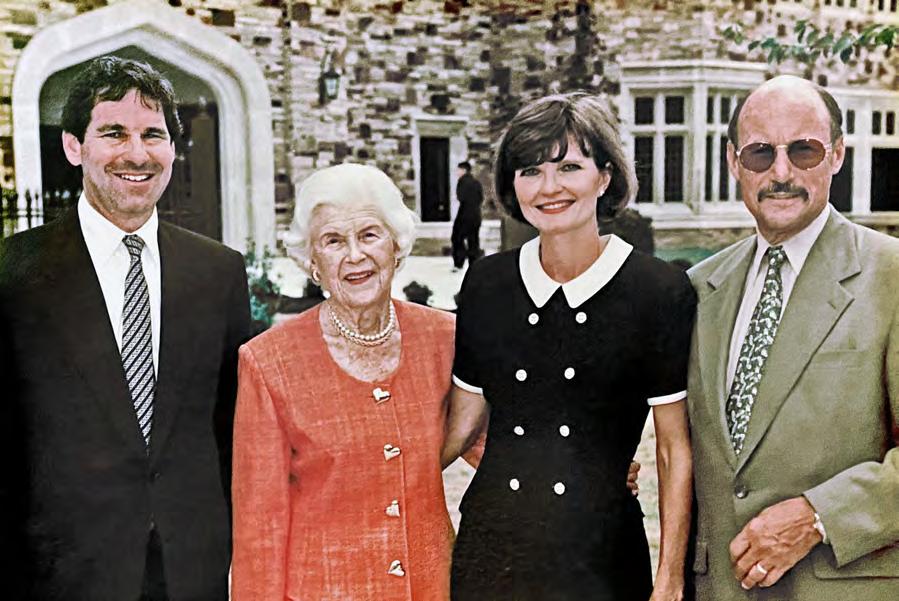
TOP: Ribbon cutting for a new section of the Wolf River Greenway. Participants included Keith Cole, Mayor Sharon Goldsworthy, Mayor A C Wharton, and Bayard Morgan (far right).
ABOVE: From left to right: Mark Halperin, Elizabeth Boyle, Kathy Pampuro, and Bob Lofton at the dedication of a garden at the Bryan Campus Life Center at Rhodes College January 23, 1997. This was a memorial gift by many of the Boyle employees for J. Bayard Boyle, Sr. (1908-1995).
to you — certain things will drive you to keep doing them,”
Bayard explained. He eventually pursued a career in pottery and moved to Wisconsin to study and make ceramics full-time. During this time, he was able to create original works while participating in programs throughout the United States as well as Japan.
“The experience was extremely rewarding. I got to work and meet talented artists from all over the country and Japan,” said Bayard.
“But, the biggest reward through this career path was meeting my wife, Jane Hart.”

Bayard returned to Boyle after 12 years of working as a studio potter. He was newly married and about to start a new family when the recession of 2008 began.
“The Wolf River is a great asset in Memphis, and we want to keep it that way.”
— BAYARD MORGAN
“I wanted to take the opportunity to learn the business from so many talented people we had on board,”
said Bayard. “The Boyle offices are filled with people that have spent most, if not all, of their professional careers under one roof. It feels like we have a family atmosphere at Boyle.
“My favorite aspect has been the opportunity to work with my father. He is the finest man I know. He is my father, my mentor, my friend and my hero. My father loves his family, his career, and the outdoors. I can’t think of anyone else that has impacted my life more than my dad.”
Along the way, Bayard became actively involved in local conser-

vation efforts, especially with the Wolf River Conservancy, where he served on the Board of Directors. “I wanted to help protect such a great amenity for our community to enjoy,” explained Bayard.
“Growing up, I felt like the luckiest kid in the world because the Wolf River bottoms were right outside my back door. I did everything back there from horseback riding with my mom, making trails, forts and shelters to camping, canoeing, biking, and hiking,” said Bayard. I initially got involved in the Wolf River Conservancy by volunteering as a canoe guide
for a tour down the Ghost River.
Keith Cole, the Wolf River Conservancy’s executive director, asked me to serve on the board.
“I’m especially proud that Boyle has developed our properties in such a way that conserves the natural environment,” he said. “Preserving existing trees has been an integral part of the design of our projects. Gary Thompson and Rusty Bloodworth taught me so much about this, and we always try to maintain the natural beauty of our sites and create green spaces in the midst of our communities. Green space is crucial to the
healthy development of children and the ability to learn by trial and error with their peers.”
“Since Boyle’s founding in 1933 by my grandfather, Bayard Boyle, Sr., the company has emphasized the preservation of the natural elements in the communities we develop,” explained Bayard. During the development of Humphreys Boulevard, Boyle supported the construction of the adjacent Wolf River Greenway by donating 85 acres of land and easements to the Wolf River Conservancy. In 2015, the company donated 32 acres of land to the Conservancy for the
Another section of the Wolf River Greenway as it enters Shelby Farms.

ABOVE: 1000 Ridgeway Loop Road, a 155,000-square-foot ‘Class A’ office building.
Germantown Greenway. Later, the company provided another 290 acres — the largest land gift in the Conservancy’s 25-year history. The land is permanently preserved as a benefit to the public.
“The Greenway is a huge asset to the residents of the Mid-South and we’re proud to have been a part of it,” said Bayard. “The Wolf River is a great asset in Memphis, and we want to keep it that way.”
In the 1950s, an important auto dealer named Neal Schilling purchased nearly 500 acres along Poplar Avenue, just west of the growing town of Collierville. Called Schilling Farms, this land held important historical significance. In the mid-1800s, a Choctaw Native American known as Hoyaka had come into possession of the land that later comprised Schilling Farms.
Schilling began to develop portions of his property into a Hereford cattle operation, while opening up other areas into a demonstration farm for Ford tractors; anyone interested in buying
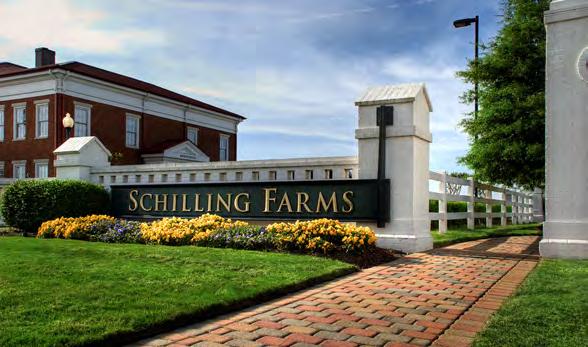
farming equipment could see it in actual operation. Families driving along Poplar Avenue (or Highway 57) probably never realized the extent of Schilling’s businesses on the property. All they noticed was the almost one mile of white-painted three-rail wooden fence, punctuated at four places with beautifully designed curved white brick gateways, which separated Poplar Avenue from the Norfolk-Southern Railroad that ran alongside it.
Schilling passed away in 1970, and his property eventually came into the ownership of his
business partner, Harry Smith. Over the years, Smith explored various industrial or commercial uses for the land, but finally acknowledged such a vast amount of acreage was too much of a personal challenge. In 1996, he approached Boyle Investment Company to explore ways to take advantage of the 443-acre tract bordered by Poplar Avenue and Nonconnah Creek. The only manmade structures on the property were some gravel farm roads, several barns and farm buildings, and a water tower. If the property was to be de -
veloped in any way, an immediate challenge was providing access to it from Poplar Avenue. Four narrow driveways crossed the railroad, for use by farm workers, but Norfolk-Southern officials balked at allowing any public roadways to cross the tracks. After two years of legal maneuverings, the railroad agreed to two key crossings, thanks to the perseverance of Gary Thompson.
Boyle designed an overall street system that included two main entrances off Poplar, one of them marked with a 34-foot-high brick tower, with its top punctuated by openings that made it resemble the old pigeonniers that were a feature of estates across America and Europe. With ornamentation that included handblown glass and the Schilling Farms logo inset, the white brick of these structures, along with the white-painted rail fence along Poplar, established a key design element for the entire project.

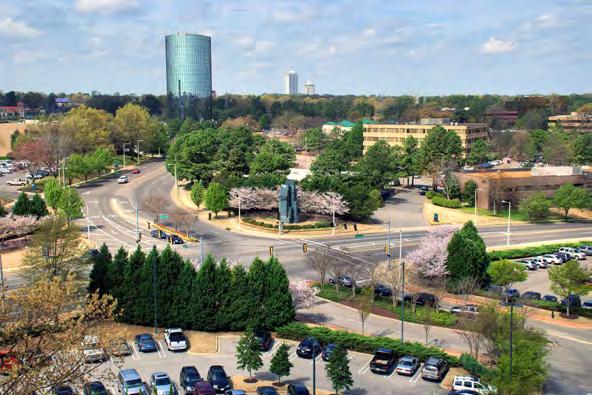

From the very beginning, the team at Boyle Investment Company knew Schilling Farms presented a unique opportunity. Ridgeway Center, which had been developed more than 20 years before as the first mixed-use development in this area, could be broken down into perhaps a half-dozen uses: It was primarily an office park, but it also included two hotels, a movie theater, a church, and townhouses. Bloodworth, studying the open farmland on the edge of rapidly growing Collierville, quickly sketched a list of 16 different (and
simultaneous) uses for the almost 443 acres of Schilling Farms: retail, restaurants, hotels, daycare, healthcare, assisted living, services, multi-family, townhomes, single-family homes, office headquarters, office showrooms, medical offices, school, civic, financial, and religious institutions.
Construction began in 1998 on the first phase of the community. The initial project erected in Schilling Farms was The Neighborhood, a cluster of 87 single-family homes. After that came the Schilling Farms Business Center, comprising 68,000
Construction began in 1998 on the first phase of the community. The initial project erected in Schilling Farms was The Neighborhood, a cluster of 87 single-family homes.
square feet of office/service space, and a new school for Collierville, the Schilling Farms Elementary School, with a capacity for some 900 students. After that came a series of residential developments, including Sterling Square, Legacy Farms, and The Madison. Financial institutions moved into new spaces at Schilling Farms, including BankTennessee and NBC (now Truist). The 1990s came to an end with Schilling Farms in an aggressive phase of growth and development. As impressive as it looked in those early years to residents and visitors, howev-
ABOVE: The Regalia Shopping Center at Poplar Avenue and South Shady Grove Road.
MIDDLE: An aerial view of Ridgeway Center from the rooftop of 1000 Ridgeway Loop Road.
BELOW LEFT: McGinnis Park in The Neighborhood at Schilling Farms.
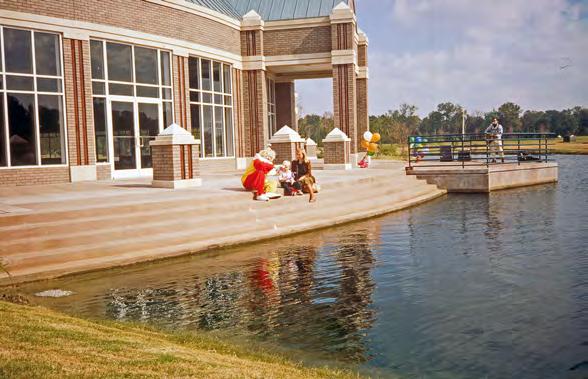
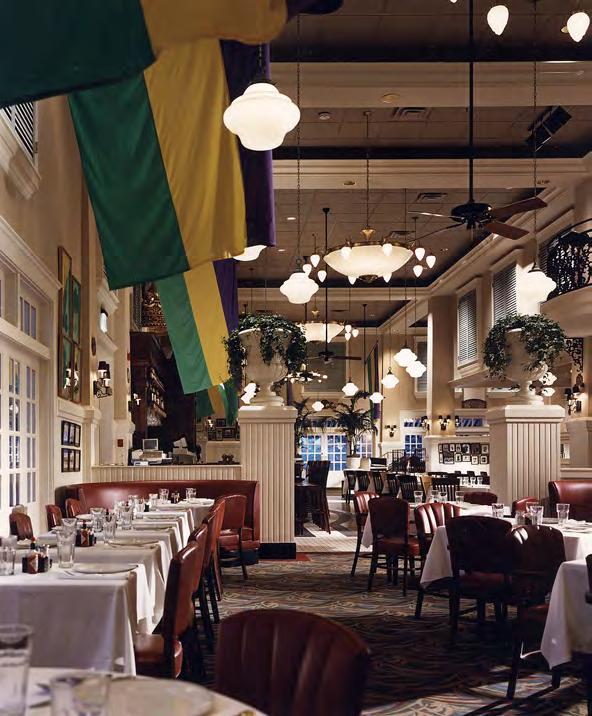
er, they were only encountering a glimpse of a full-scale community that would eventually include more than 3.2 million square feet, more than 1,900 households, and a unique project that would incorporate the farm’s picturesque water tower into a specially designed community modeled after the Belgravia district of London.
An important aspect of the company’s success continues to be the financial structuring of its office, retail, multi-family and mixed-use projects. Boyle has a conservative financing philosophy employing moderate financial leverage while empha-
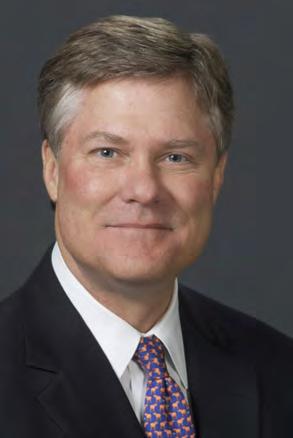
sizing long-term relationships with lenders and institutional joint venture partners. Some relationships go back more than 60 years. Richard (Dick) Nichol skillfully handled lender relationships beginning in the 1970s and upon his retirement in 1995, Cary Whitehead began overseeing the financing of projects in Memphis, Nashville, Fort Worth, Birmingham, and Orlando. Whitehead also spearheaded retail developments out of state as well as in the Memphis region. His wealth of experience in all aspects of the real estate industry made him an indispensable asset on the company’s financial front.
The 1990s were an extremely productive period for Boyle. In addition to Schilling Farms, Boyle developed a wide range of additional office, retail, residential and industrial projects.
In the office arena, in 1995 Boyle launched a major new prototype building at Ridgeway Center with the development of 1000 Ridgeway Loop, a 155,000-square-foot ‘Class A’ office building. This innovative building design was duplicated three additional times at Ridgeway Center and multiple times in Nashville. An intricately designed compass rose aligned to true north is strategically situated in front of the building, which provides six stories of seismic “column free” space with an elegant lobby featuring polished granite floors and wall panels of Sapele wood.
Other major office buildings were developed at Humphreys Center including the 194,000-square-foot Southeastern Regional Headquarters for the U.S. Postal Service (1993); 80 Humphreys Center, a 110,000-squarefoot medical multi-tenant office building near Baptist Hospital (1994); and 6305 Humphreys Center, a 50,000-square-foot office headquarters for Financial Federal (1998).
Boyle also developed a major 230,000-square-foot build-to-suit headquarters facility for Thomas & Betts at Southwind (1997).
The Boyle residential land development team added seven additional neighborhoods all across the Memphis region including Green Shadows in East Memphis (1990), an extension to Southwind, which is adjacent to the TPC Southwind championship golf course (1994), the upscale Cloisters of River Oaks in East Memphis, River Edge in Cordova (1995), Bedford Plantation (1994), Dogwood Gardens and Vineyards (1997) in Germantown, and Whisperwoods in Collierville (1999).
Boyle also was busy on the retail front in a joint venture with Milton Schaeffer in 1995 with the development of the Village Shops of Forest Hill in Germantown anchored by Target. Boyle developed two major retail projects in Texas: Preston Shepard Place, a
An intricately designed compass rose aligned to true north is strategically situated in front of the building, which provides six stories of seismic “column free” space with an elegant lobby featuring polished granite floors and wall panels of Sapele wood.
370,000-square-foot regional power center in suburban Dallas (1996) and Southwest Crossing Shopping Center, a 500,000-square-foot project in Ft. Worth (1999). A number of industrial projects were developed, including: Century Center and Raines Distribution Center (1990); Bartlett Enterprise Center (1992); Collins Business Center (1993); Hohenberg Cotton Company, John’s Creek Business Center and Acee Warehouse (1996); and headquarters facilities for S/G Industries and National Guard Products (1997).

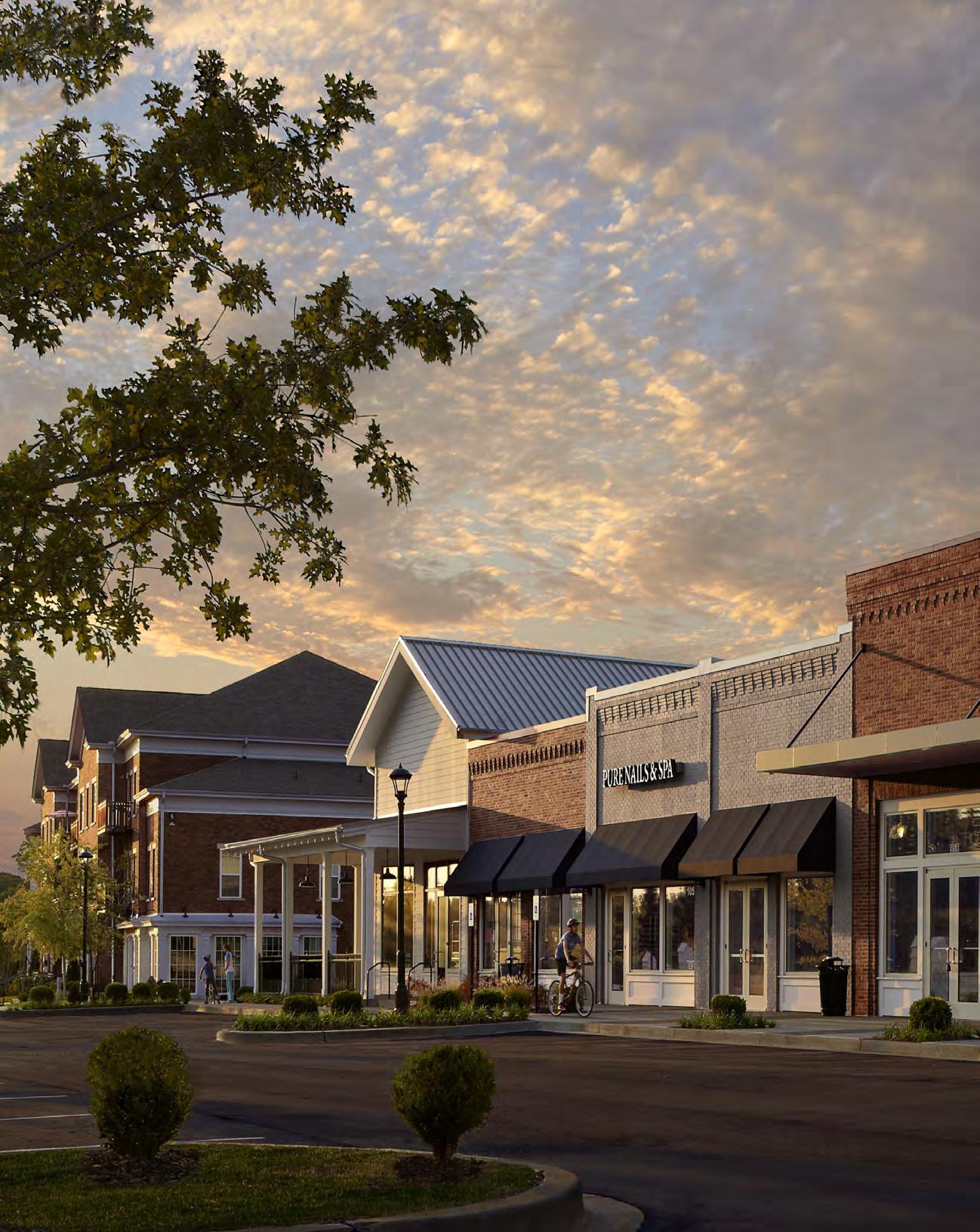
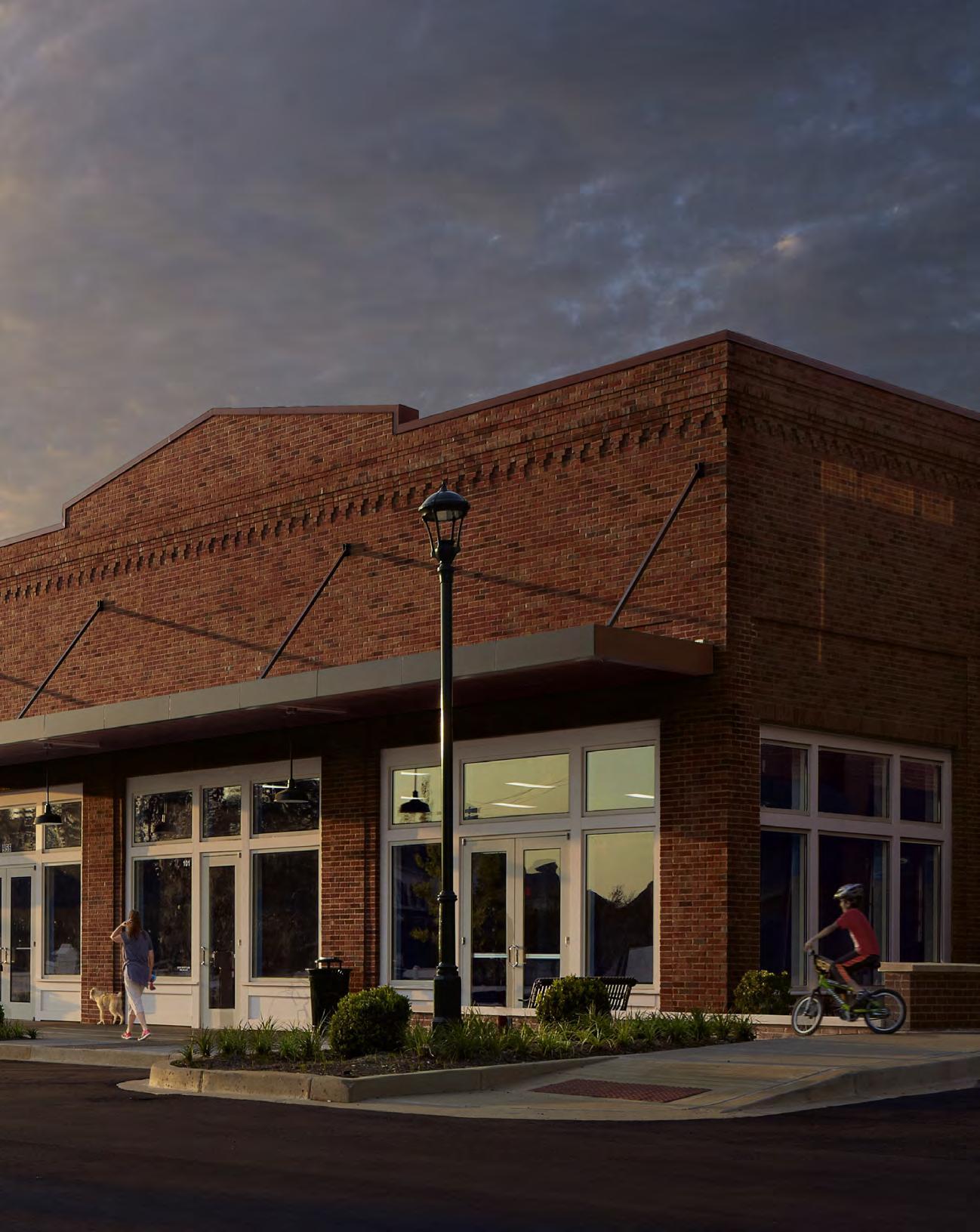
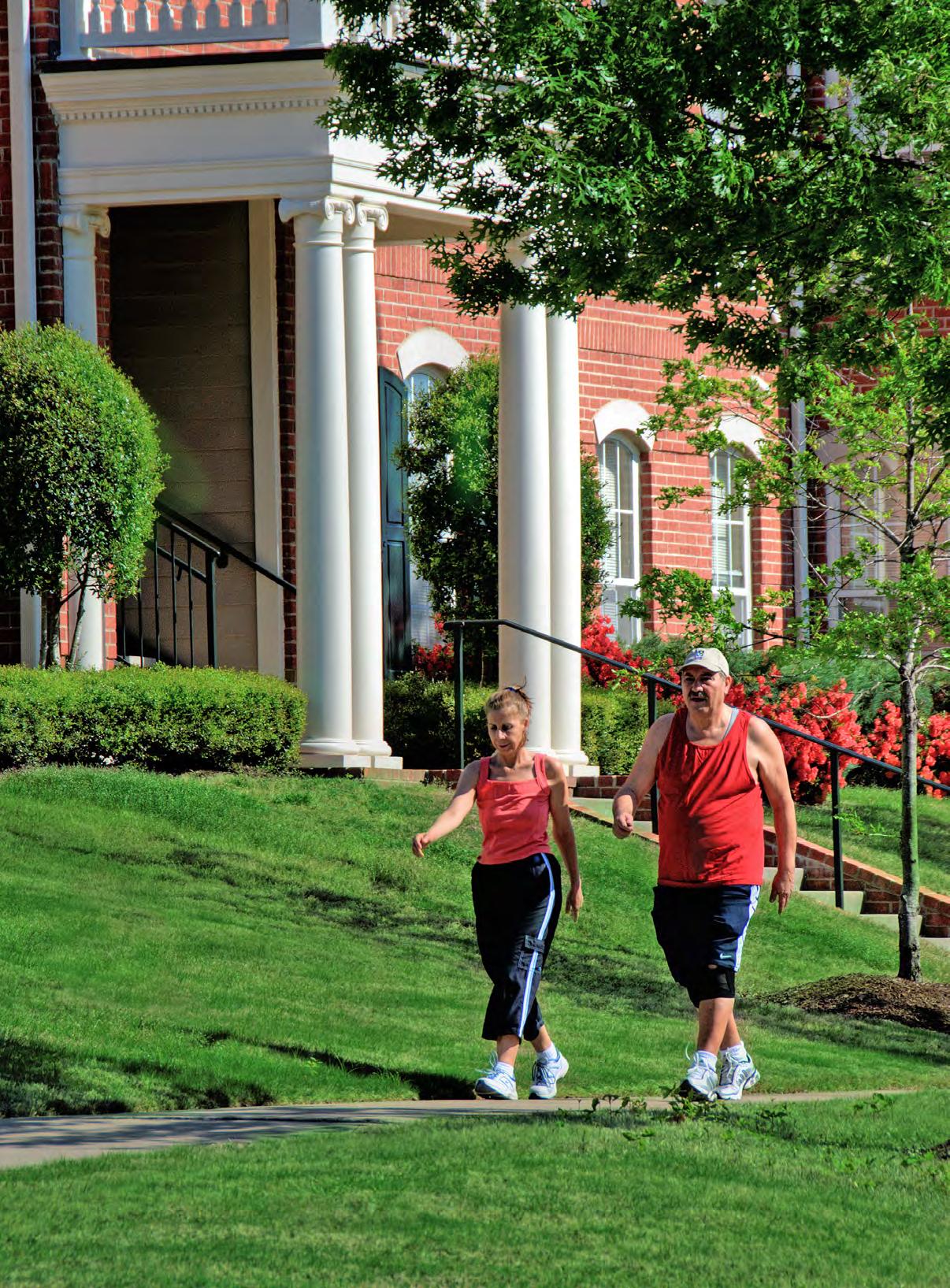
“We were working off the past, and also looking at what other great developers had done and trying to learn from it. What we had in mind was using the best design principles from communities in Europe — and the especially fine Belvedere Boulevard that the Boyle family had created in Memphis in the early 1900s — and applying them to the large mixed-use community the company was presently developing: the 443 acres of Schilling Farms in Collierville.” — Russell Bloodworth
As the new century began, Boyle’s Collierville development, where ground was broken in 1998, was rapidly attracting a wide range of residents and office tenants. Harry Smith, who had owned the property for years before joint-venturing with Boyle, had made an important stipulation: Seven acres of the land would be donated to the YMCA for a brand-new facility there. The 20,000-square-foot Collierville YMCA opened in 2000, and included both an indoor and outdoor pool, aerobics equipment, a running track, racquetball courts, saunas, hot tubs, and locker rooms. More than 11,000 members today take advantage of youth summer camps, youth sports leagues, as well as before- and after-school care.
Helena Chemical Company (now Helena Agri-Enterprises) soon moved its corporate headquarters to Schilling Farms. Other national headquarters joined them later, including Juice Plus, the nutritional supplement maker and dealer; IMC, the nation’s largest marine drayage company; MCR Safety, the national manufacturer of work-safety products; and Mueller Industries, one of the world’s largest copper and brass manufacturers and distributors
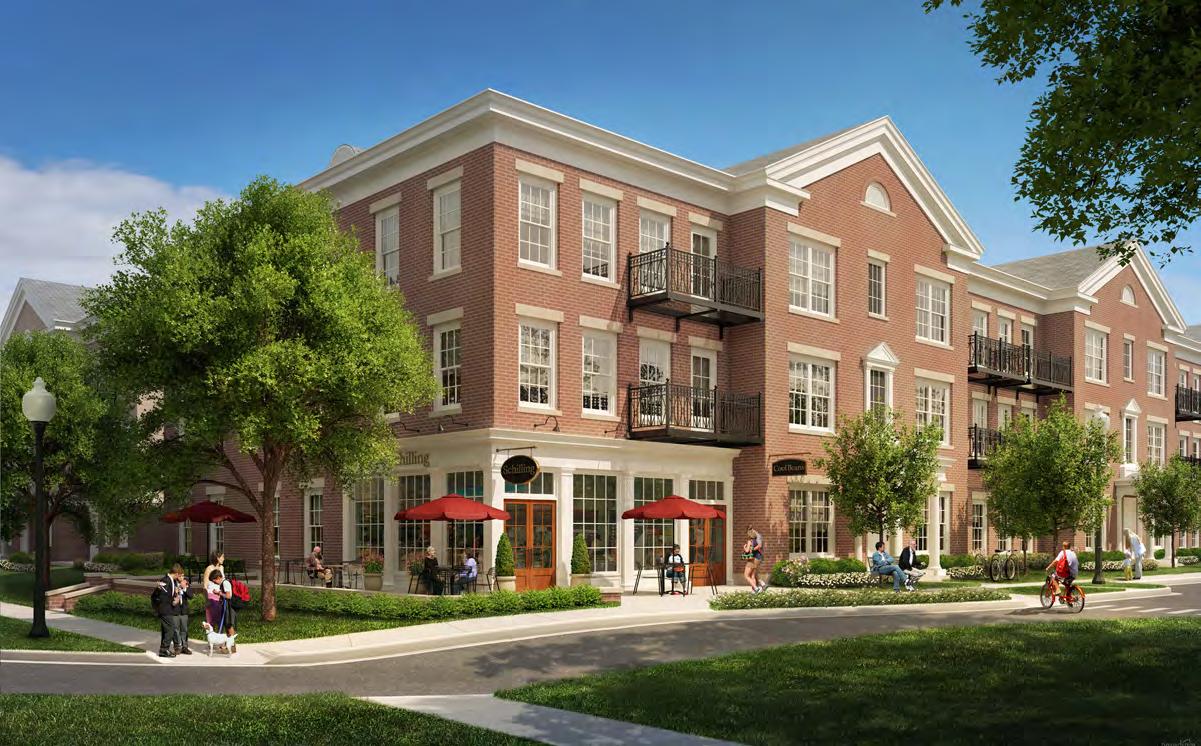
The Life Church at Schilling Farms (now the Mission Church) erected an impressive sanctuary, complete with a 500-seat auditorium.
Medical offices and doctors’ groups soon called Schilling Farms home: Pediatrics East, Fresenius Medical Clinic, Ortho One, Telerhythmics, and others. Service businesses like Jiffy Lube opened branches on Poplar Avenue along with restaurant chains such as IHOP and Popeyes.
Large sections of the development were devoted to residential areas, eventually comprising homes for more than 1,700 families. This included almost two million square feet of single-family, duplex, townhomes, and multi-family flats. Gary Thompson had joined Boyle in the early stages of planning and remembered, “Our emphasis was on creating a real community. It’s great to have your office, the YMCA, school, dentist, and a daycare for your children, your ortho doctor, assisted living for your
mother, and hotel for your family when they come to visit — all in one place.”
As it grew, Bloodworth, Thompson, and later, Les Binkley and Jason Walters, were pondering ways to ensure the enduring success of this massive project. “We wanted to build a property that would still be robust 100 years after it began.”
By careful placement of the various streets and buildings, Boyle was able to save almost every tree that was originally on the property. Great care went into the selection of the new greenery. “You don’t want to do a monoculture, where you do all elms,” said Thompson, a landscape architect. So here, visitors and residents encountered quite a mix: cypress, white oak, Yoshino cherry, Hollywood juniper, crape myrtle, and many others. These trees came from nurseries in McMinnville, Tennessee, and as far away as Florida.
Although no record exists of the person who designed and constructed the four original brick gateways to the old farm prop -
erty, Thompson said, “It took a professional with great expertise to design those gates.” They incorporated the iconic structures into the main entrance tower on Poplar, and even into smaller design elements, such as walls, fence posts, and building pilasters. “Those gates were an artifact of the property, and you’re trying to take the history of this place and ‘punch it out.’”
The cast-iron benches placed in the parks and along walkways were customized with the Schilling Farms logo and the 1996 date when the community was founded. Paint colors, brick selection, and other architectural elements were selected with care, to provide Schilling Farms with a timeless atmosphere.
Les Binkley, with an urban planning background, had joined Boyle after a stint with CBRE in Oregon. One of Binkley’s first actions was to restart the Multifamily Division by introducing The Carrington Communities at Schilling Farms.
Summing up the new devel -

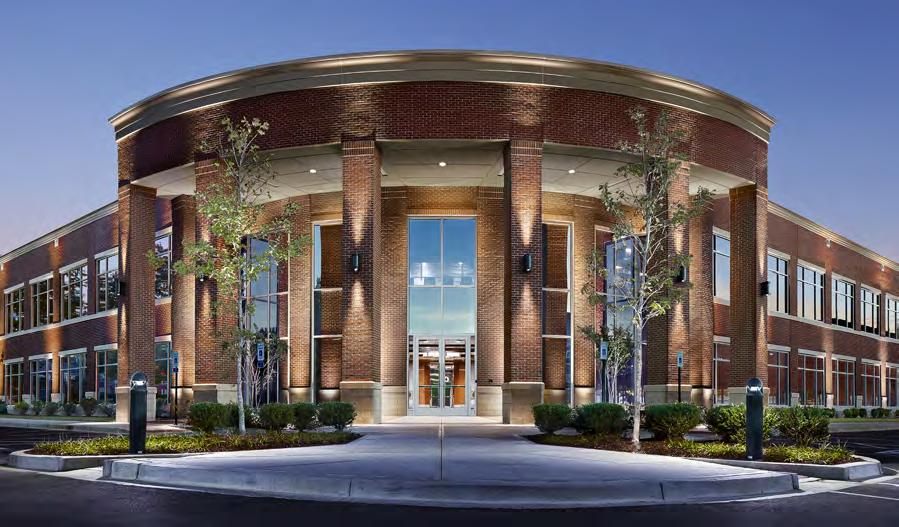
opment, in 2015 the Memphis Business Journal observed, “Boyle Investment Company [has] designed Schilling Farms to age gracefully. It is a 443-acre mixed-use development that will be teeming with commercial and retail life, yet designed with the family in mind.”
When the Schilling Farms property was first developed in the late 1990s, all the old farm structures had been removed, except for an iconic element: the old steel water tower, mounted on high stilts. This artifact, no longer in use, was rescued and moved to a vacant
section of the development, on the northwest corner of West Schilling Blvd. and Poplar, where it was planned to be the symbol — and physical centerpiece, for that matter — of a section of Schilling Farms that Boyle planned to call the Water Tower District. Originally planned
The headquarters of
LEFT: 255 Schilling Boulevard, a 50,000-square-foot mixed-use building.

“Boyle Investment Company [has] designed Schilling Farms to age gracefully. It is a 443-acre mixed-use development that will be teeming with commercial and retail life, yet designed with the family in mind.”
—MEMPHIS BUSINESS JOURNAL
for office uses, the 50-acre tract would be the perfect location for a much more vibrant mix.
Boyle was realizing that many suburban patterns of development had not produced truly livable places. Leon Krier, one of the most important community designers in Europe, hosted a Block Design Workshop in Poundbury, an experimental English village which had broken ground barely 20 years before, and Bloodworth remembered, “We hunkered down on
Memphis area during this busy period. Others included Price Farms, a mixed-use development in a joint venture with the Morrison family. Price Farms fronts on I-385 and Houston Levee Road and hosts the Carriage Crossing shopping center and several hotels.
Another key project was the golf-oriented community of Spring Creek Ranch. In partnership with the David Meyer family, Boyle laid out nearly 1,000 acres of estates, interweaving generous

how to design intimate, walkable neighborhoods. The vision of this iconic village, as intricately designed as a Swiss watch, became our underlying hope for the Water Tower District at Schilling Farms.”
This kind of planning required a skilled team, and in addition to Bloodworth, Binkley, Thompson, and Jason Walters, outside experts included LRK Architects, Fisher Arnold, planners and engineers in Memphis, and Kiser + Vogrin Design, landscape architects from Franklin, Tennessee, as well as partner, Bruce Taylor.
swathes of open space.
According to Gary Thompson, senior vice president who leads the Boyle Residential Land Development team, Spring Creek
elegant, country living. “Once you see the green fence and enter at the stone signage at the corner of Raleigh-Lagrange and Collierville-Arlington Roads, you travel past almost a mile of pastures, tree-lined meadows and Lake Chinquapin — all before a single home comes into sight,” explained Thompson. The community is situated adjacent to the 330-acre Jack Nicklaus Signature Golf Course. When the Memphis Area (now West Tennessee) Home Builders
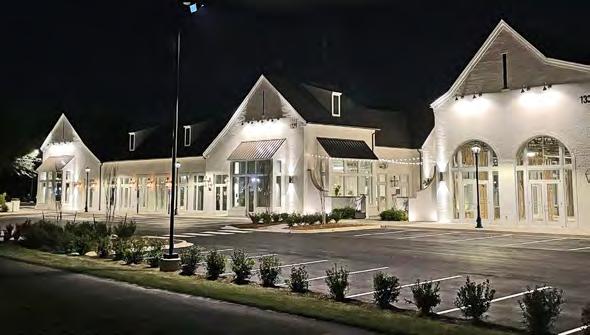
Boyle’s goal was to create a community of modest scale that comprised a mixture of five different types of residential buildings — much as one would find in the villages of Europe.
Schilling Farms and the Water Tower District, for all their complexity, weren’t the only projects with which Boyle Investment Company was involved in the
Ranch has always been about the land. Preserving and enhancing the beauty of this once-thriving cattle ranch, the master-planned, 1,000-acre development in the Collierville reserve area offers the Mid-South’s best in rural, yet
selected Spring Creek Ranch for its 2007 VESTA Home Show, all seven of the featured homes sold before the show began. The community has grown over the years and now features multiple neighborhoods offering a wide range of sizes of home sites and homes: The Grand Manor, The Manor, The Village, The Retreat, and The Estates, all with access to an array of amenities including an 8.5-acre lake for fishing, kayaking and canoeing, miles of pedestrian walking trails, and swim and tennis facilities.
in the early stages, respected residential community developer, Doug Dickens, joined Thompson to imagine how estate homes could be clustered around swaths of green space.
Water Tower retail.
A mixed-use building at the Corner of Principle Avenue and Alberti Street in the Water Tower District.

In 2020, Spring Creek Ranch was again the site of the VESTA Home Show, which featured four multi-million-dollar homes in The Grand Manor.
Meanwhile, a major change in the company leadership was taking place at Boyle. For the last few years before his retirement, Charles Claiborne, Boyle’s chief financial officer, worked closely with Matt Hayden, who
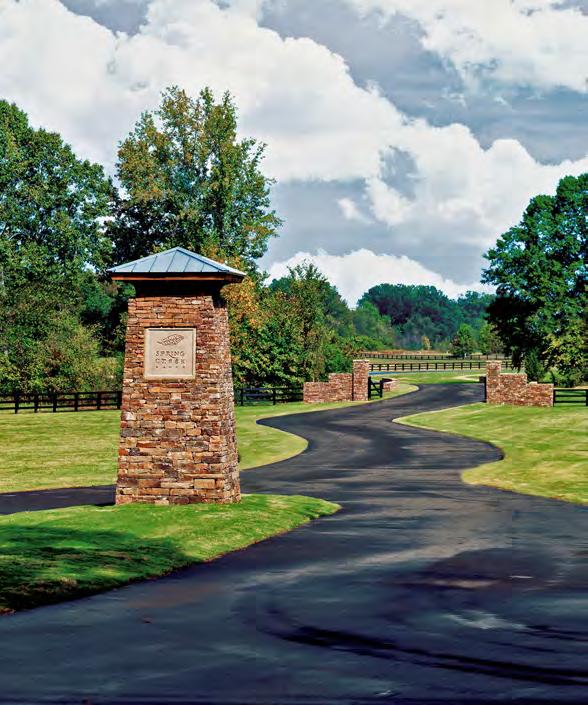
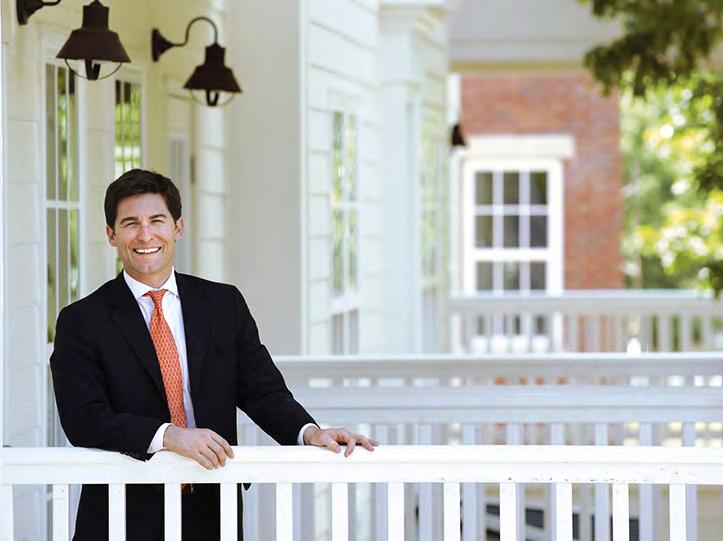
joined the company in 2014 as deputy treasurer — part of a long-term succession plan by Claiborne. Hayden was responsible for accounting, financial reporting, compliance, and tax planning. He brought to Boyle a wealth of knowledge and experience in corporate finance, mergers, and acquisitions.
When hired he was a senior vice president with Wunderlich Securities, Inc. in the investment
banking group. Previously he had been a first vice president with Morgan Keegan & Company, Inc., and prior to that was with Ernst & Young, performing assurance and advisory services for public and private companies.
In 2016, Claiborne retired, and Hayden was promoted to chief financial officer (CFO) for Boyle Investment Company, Boyle Nashville, LLC, and Boyle Insurance Agency. In 2022, Hayden became
president and chief executive officer of Boyle Investment Company — the first non-family member to hold this position in 89 years. Today, Hayden works closely with the accounting department and relies on the longtime experience and expertise of Bo Lesley, who was promoted to treasurer and CFO, and Debbie Shelton, who was promoted to chief accounting officer.
In 2010, the Mid-South Capital Fund was formed to target more than $100 million of real estate investment opportunities throughout the Mid-South region including Tennessee, Kentucky, Alabama, Mississippi, and Arkansas, with a special focus on Memphis and Nashville. In 2020, Boyle with others acquired more than 600,000 square feet of office space — Triad Centre and International Place II — from Highwoods Properties along the Poplar Corridor.
The year 2018 was a particularly banner one for the Memphis office where 625,000 square feet were re-leased.
“The City of Memphis was the real winner since over 3,000 jobs were retained that could have moved elsewhere,” reported Mark Halperin, who a long with Kathy Pampuro had played key roles. Thomas & Betts, now part of the global leader in power and automation technologies company, ABB, took occupancy of 155,000 square feet at 860 Ridge Lake Boulevard on July 1. The next day, Sedgwick Claims Management Services Inc. started construction of its tenant improvements at the Southwind space vacated by Thomas & Betts. Facilitating these moves, ServiceMaster vacated the 860 Ridge Lake Building early, Sedgwick CMS delayed its move to 8125 Sedgwick Way, and Thomas & Betts performed its renovations at 860 Ridge Lake Boulevard after its move-in.
In total, more than 27 separate projects were initiated in the Memphis region after the year


2000. These ranged from Price Farms, a mixed-use development fronting on I-385 and Houston Levee Road, to large headquarters facilities in Ridgeway Center, including twin 150,000-square-foot offices on Shady Grove Road, as well as Humphreys Center, including the new headquarters building for Baptist Memorial Hospital and the Semmes Murphey Clinic, retail centers in Collierville and Southaven, Mississippi, and
residential projects such as The Pinnacle of Germantown.
Meanwhile, since 2001, Boyle had also been involved in groundbreaking developments that would change the face of Nashville, Franklin, and communities in Middle Tennessee.
of Marketing, coordinating “A Festive Day at Regalia” in December 2019.
ABOVE: Senior Vice President Gary Thompson (center) with Collierville Mayor Stan Joyner (center right) at a ribbon cutting at the pool and tennis center at Spring Creek Ranch in 2014.
As Boyle’s portfolio of Memphis properties has expanded over the years, the commercial sales and leasing team has grown considerably and has never been stronger. Today, the team is comprised of 27 highly talented professionals with years of experience in development, leasing, property management, maintenance, and space planning. The team is led by Executive Vice President and COO Mark Halperin, who explained that the team is the best it has ever been.
“We’ve always had a great team,” said Halperin, “but the group we have assembled after acquiring four Highwoods properties in 2020 and hiring nine of their employees is the most experienced we have ever had. We already had a tremendous group, and the new employees complement the skills of those already on our existing team.”

Boyle operates 4 million square feet of office and retail space in the greater Memphis area, and the group charged with leasing all of this space consists of Mark Halperin, Executive Vice President Kathy Pampuro, and Senior Vice President Tom Hutton, who have been with Boyle for a combined 109 years. Pampuro explained that Boyle is unique in the market because of the emphasis placed on relationships.
“We are owners and don’t look at a deal as just a transac -
tion, it’s a relationship” she said. “Our average tenant has been with Boyle for more than 15 years and some have been with us for more than 45 years. Our tenants truly become lifelong friends, and they know they can pick up the phone and call any one of us. It is much more to us than just leasing the space, and our tenants know that.”
Boyle operates its properties as long-term investments that must be well-maintained, and this requires experienced property managers. This group is led by Senior Vice President Harold Moss, who has 39 years of experience in commercial real estate. Moss encourages his team to think like an owner, with the goal of enhancing the long-term value of the properties they own and manage.
“Boyle is more than the properties they own,” said Moss. “The people and their approach are what make Boyle a special place to work. One of the key benefits to being an owner-manager is that we are highly invested in the properties because we own them, and we want to support tenants and make our properties shine. Boyle is a long-term holder and anything that we can do to enhance that long-term value is what guides us. A lot of times, what people don’t understand is what a third-party manager does versus an owner-manager, so it is far better for the customer to work with an owner-manager.”
Moss depends on four top-notch property managers, Dena Forbes, Daniel Parker, Sharon Mitchell-Cocita, and Jerralee Hopper, along with their assistants, who care for the ins and outs of the buildings, enabling the properties to be properly maintained and operated safely and efficiently for tenants.
“The best way to do this” said Forbes, “is to communicate and listen effectively to tenants and their needs. Our team is the tip of the spear — we are the first to hear about a problem. We’re on the front line receiving tenant work requests and our maintenance technicians are really our boots on the ground.”
Once the requests come in, they are handled by Director of Maintenance Jud Lindsey, who has 33 years of experience and oversees a team of 12 technicians and multiple vendors. He began his real estate career in 1990 with Interstate Realty, and he and Moss have worked together for 30 years starting at Towermarc, then Highwoods and now Boyle.
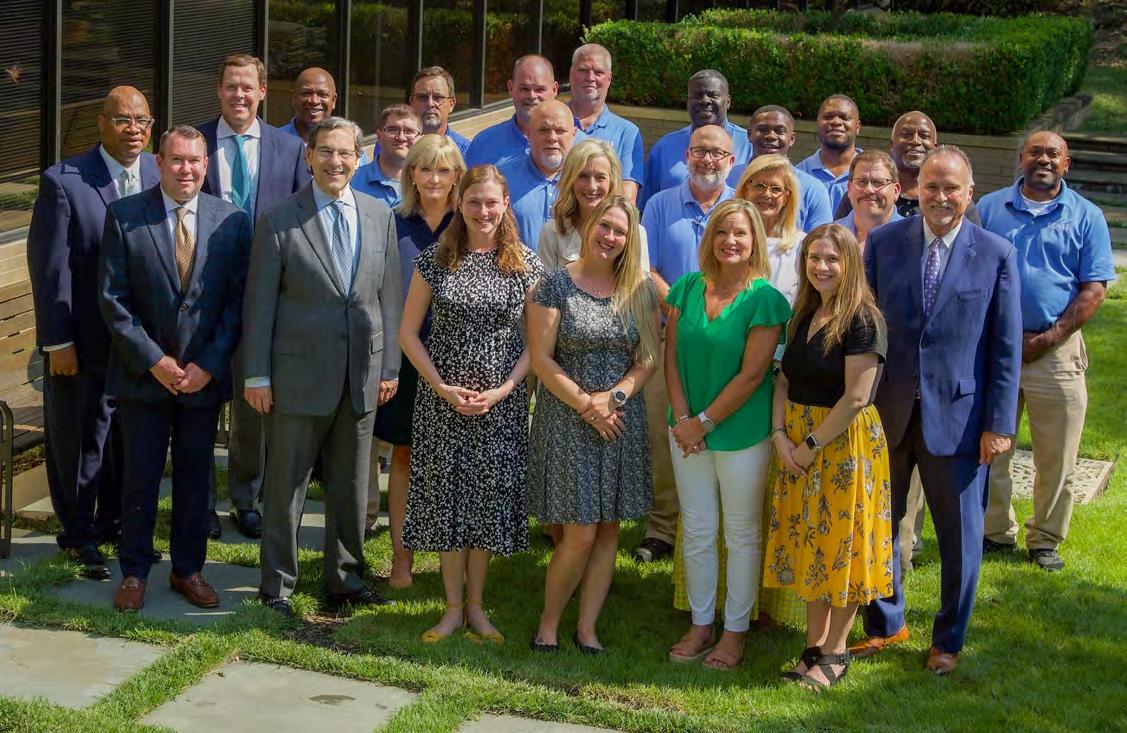
ABOVE: Jeff Aldridge, Darell Baptist, David Bassham, Chris Bullock, Nat Chastain, Roy Cherry, Donnie
Coln, Jamie Dye, Dena Forbes, Joel Fulmer, Cindy Guidry, Terron Hale, Mark Halperin, Jerralee Hopper,
Lindsey has gained a wealth of knowledge in all areas of building maintenance including electrical, HVAC, plumbing, roofing, elevators, and paving, and he works with the IT team to manage computer networks and security camera systems. He also is involved in the construction of new properties, as well as tenant improvement projects, and has 12 certifications ranging from chilled water applied systems to energy management to security and camera systems.
According to Moss, Lindsey’s myriad work experiences are invaluable and he is a true Renaissance man with a variety of outside interests. “His true value shines through the brightest when there is a crisis,” said Moss. “Jud never asks his team of maintenance technicians to do anything he wouldn’t do or hasn’t done himself. He has done it all and is a great manager of people.”
“The biggest challenge I face is the number of buildings we manage and the potential things that can happen,” said Lindsey. “Every day our maintenance technicians face a multitude of issues at various buildings, and my role is to ‘triage’ whatever comes in and prioritize the jobs to determine the
Tom Hutton, Greg James, Robert Jones, Mary Kyle, Dannie Lee, Jud Lindsey, Noah McKinney, Sharon
Mitchell-Cocita, Harold Moss, Carol Osbourn, Kathy Pampuro, Daniel Parker, and Keith Ward
most critical. It involves a lot of multi-tasking, and when an unfortunate incident occurs our team takes pride in quickly resolving the issue to the best satisfaction of our tenant. We have a great team that works well together, and our top priority is making sure our tenants are happy.”
Among many unique features is the fact that Boyle is the only building operator in Memphis that has its own in-house space planner, Noah McKinney, who has 25 years of experience in the architectural and construction industries. McKinney works directly with Boyle’s customers, leasing team and property managers to ensure their space matches their vision and all necessary requirements. McKinney explained there are a number of advantages to having an in-house planner. “Designs are done in a timely manner, and it provides flexibility so plans can be revised quickly. There is no loss in communication when you have an in-house planner. The tenant only has one phone number to keep on speed dial.”
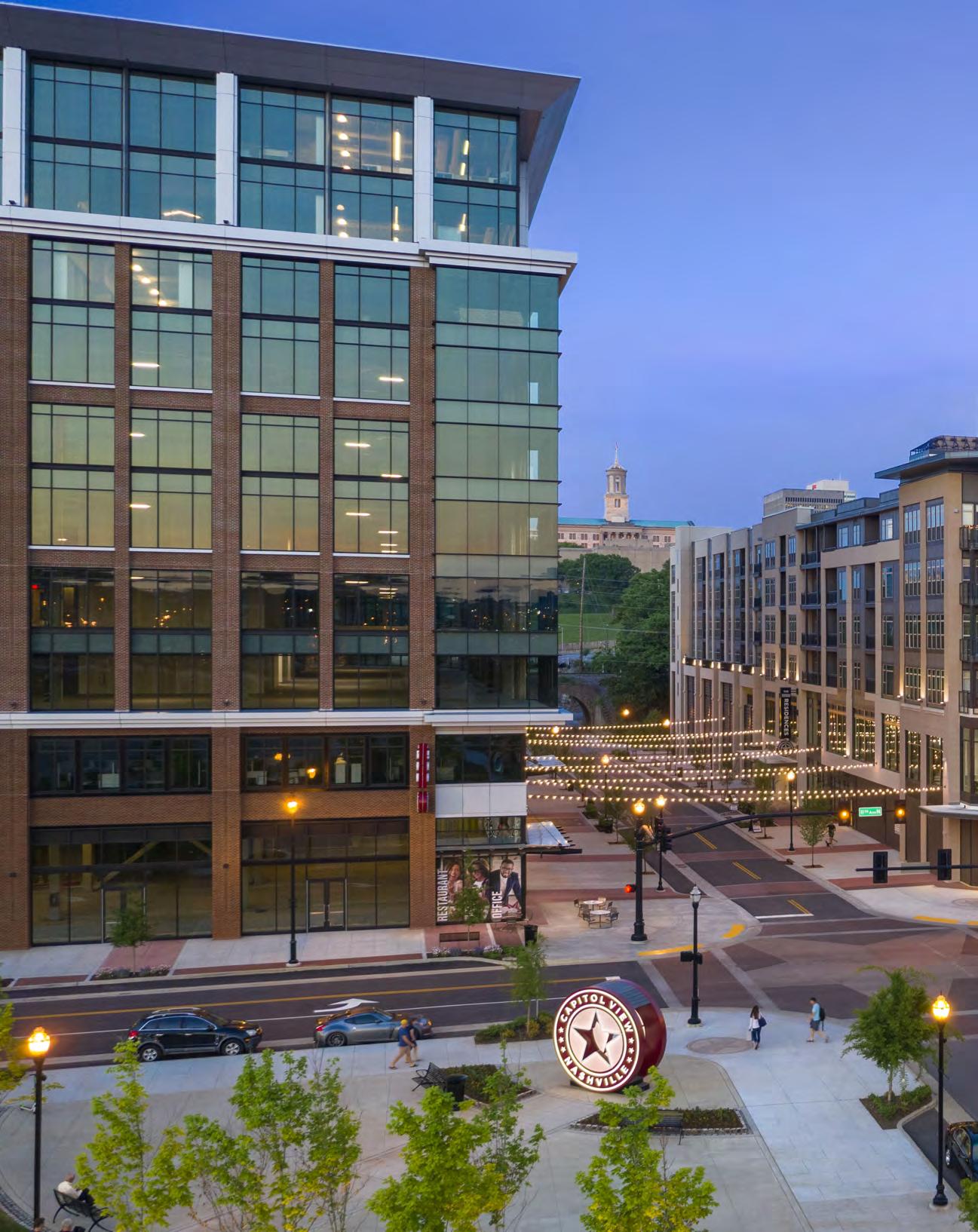

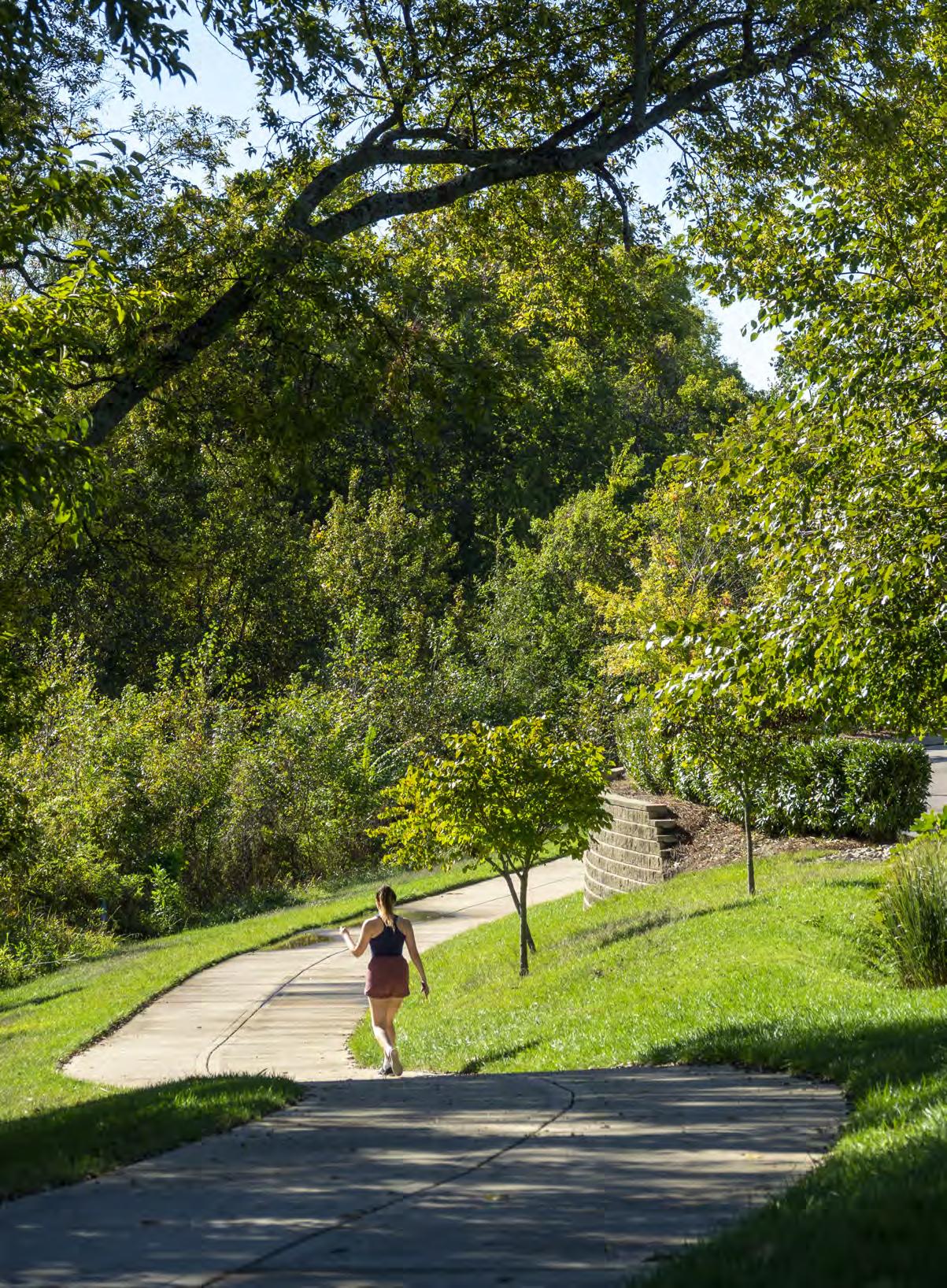
As Boyle continued to make strides in Memphis throughout the 2000s, many eyes were beginning to turn back to the place where it all started — the state’s capital, Nashville, Tennessee. In late 2001, Trammell Crow’s former area director, Jeff Haynes, and retail division manager, Phil Fawcett, were chosen to lead Boyle’s charge into the Middle Tennessee market. Their goal was to expand the company’s presence by acquisition and development while making a significant impact on the Nashville real estate market. More importantly, they wanted to build a team of dedicated professionals around a cornerstone of faith, family, and community.
Haynes explained, “Phil and I had several potential paths when we decided to leave Trammell Crow Company in 2001. We considered the merchant developer model, the private equity model, and ultimately chose Boyle Investment Company. We had competed against Boyle while living in Memphis and had tremendous respect for its integrity, reputation, and long-term vision. After some soul searching, we determined that we could balance our young families, our growing faith, and our Nashville community while partnering with Boyle. Bayard and Henry were willing to roll the dice and take a chance with us, while Mark Halperin cheered us on. We’ve tried to be good stewards of the Boyle name every day.”

“We have had a wonderful relationship with the team and have been continuously pleased with the quality and consistency of the employees that have been hired and trained by Jeff and Phil throughout our partnership.”
Their first office was on West End Avenue in Nashville. Mark Traylor soon left his position as a retail division leader with Trammell Crow to join the growing Boyle team. Traylor brought a fresh perspective and a record for success in retail leasing, specifically with active Middle Tennessee retailers and tenant representation of specialty retailers, and he
— JIM KNOWLES, TA
was an expert with quality institutional assets. As the team began to fill out, the Nashville office set their sights on building a portfolio of business. All three had a prior long-standing relationship with TA Realty, a private real estate investment firm. TA Realty asked the Nashville team to make a pitch to manage their Middle Tennessee properties. Haynes, Fawcett, and
Traylor flew to Boston to make the presentation. They crammed into one hotel room to save expenses but were hopeful that they could land the deal.
By August of 2002, Boyle executed a contract to manage and lease TA Realty’s Brentwood Commons, a 185,000-square-foot ‘Class A’ office park, and Cool Springs Festival, a 360,000-square-foot re-
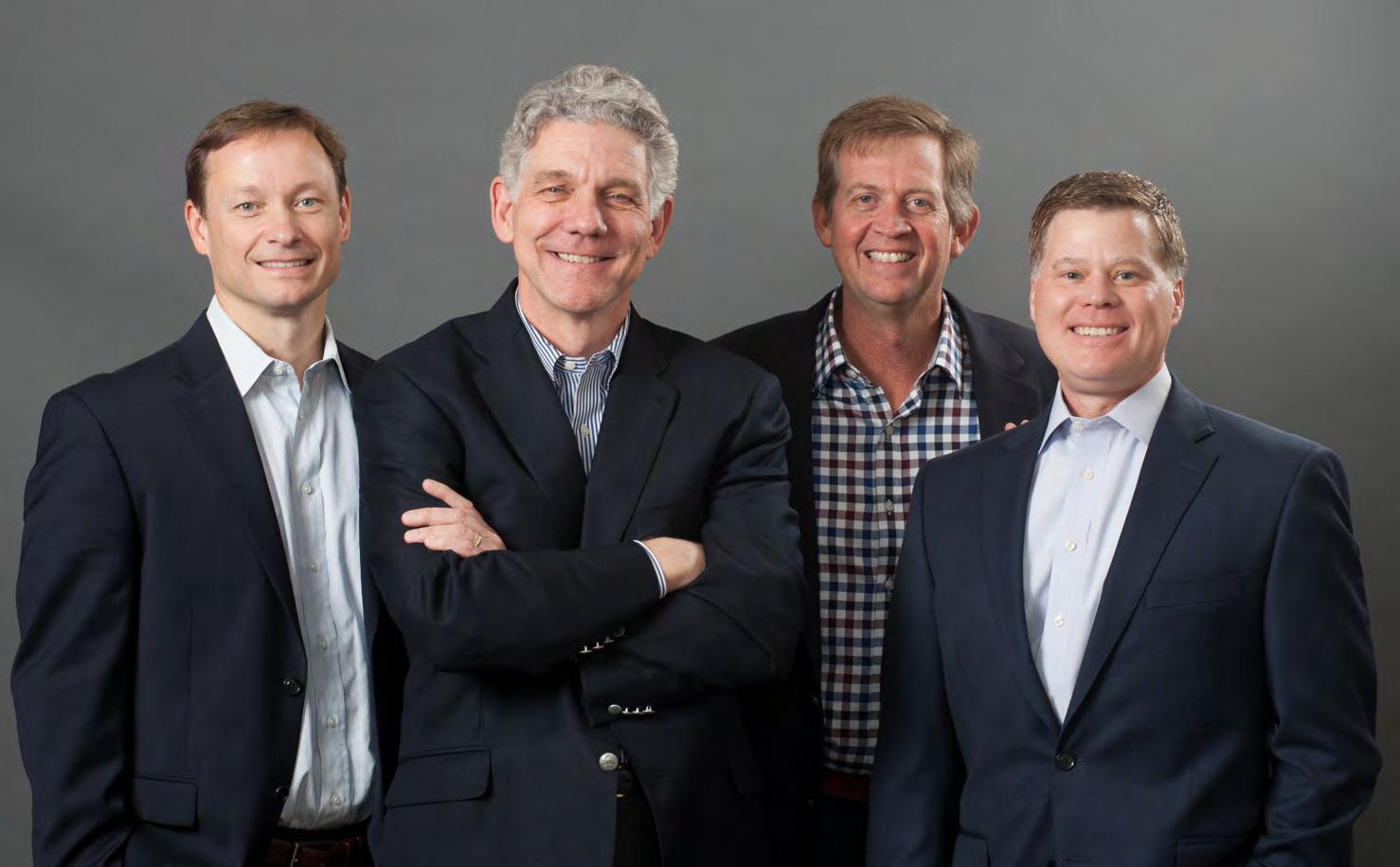
tail center, both located in the suburb of Brentwood, Tennessee. The Nashville Business Journal boasted that “this was the first significant leasing and management role for the new division.”
Jim Knowles, partner at TA Realty, looked back on his years working with Boyle. “We have had a wonderful relationship with the team and have been continuously pleased with the quality and consistency of the employees that have been hired and trained by Jeff and Phil throughout our partnership,” he said. “The Boyle team has successfully developed and leased two additional office buildings on the Brentwood Commons site, including Brentwood IV that delivered in early 2020 at the onset of the pandemic yet was substantially leased by May of that year. These two assets continued
to be owned by the client while managed and leased by Boyle. Brentwood Commons and Cool Springs Festival are two of their most successful real estate investments.”
Knowles continued, “Through multiple business cycles, these experiences and several other successful investments in the Nashville area are the reason why this relationship is held up at TA Realty as an example of a trusted long-term partnership.”
Upon securing the TA Realty deal, Boyle realized it needed an additional person to assist with office leasing and Thomas McDaniel’s name was top on the list. He had previously interned with the Boyle team and was finishing up his graduate studies at Vanderbilt’s Owen Management School.
McDaniel wanted to work with an owner/developer. He knew that Nashville had all the ingredients to be a national powerhouse, and he wanted a role that would enable him to create projects that would have a positive influence on its growth.
“Leaving business school, I had other, more conventional opportunities,” he said. “Many of my classmates took jobs that offered actual salaries. The Nashville team could not afford to pay me. Literally, my job offer was for ZERO compensation. But when we met for lunch that day in April 2002 and Jeff and Phil proudly presented me with the zero-compensation job offer, they shook my hand and said that if the company succeeded, we’d all succeed together. And 20+ years later, I can look back on that moment with satisfaction knowing

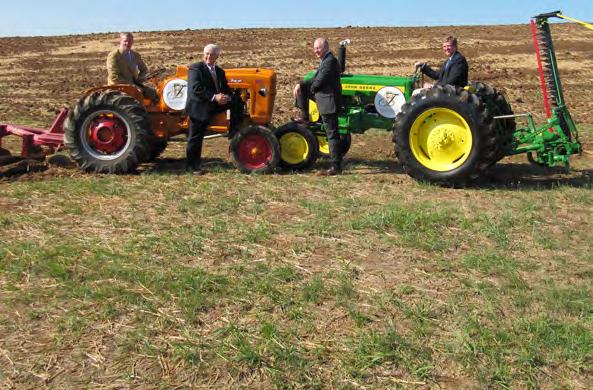
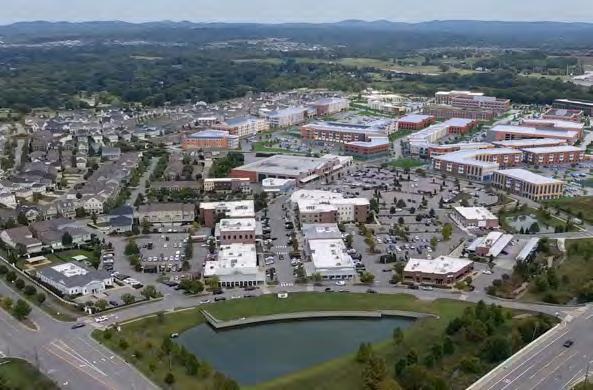
ABOVE: Left to Right: Tyler Berry, Rogers Anderson (Williamson County Mayor), Ken Moore (Franklin Mayor), and Phil Fawcett at Berry Farms Town Center ground breaking.
ABOVE RIGHT: Aerial view of Berry Farms Town Center once completed.
ABOVE RIGHT: Berry Farms seal logo.
OPPOSITE: Berry Farms residential.
that we have stayed true to those goals and we had a lot of fun at the same time.”

As the year 2002 came to a close, so did another big move for the Nashville team. In December, Boyle purchased its first asset, Center Court, a 56,000-square-foot ‘Class A’ office building in the Maryland Farms area of Brentwood. The seller was in bankruptcy, and it was a particularly complex transaction. This created an opening for Boyle. The combination of experience and expertise allowed the team to successfully navigate the challenges of the Center Court deal.
With its purchase, Boyle assumed management and leasing r esponsibilities of the property. In a few short months, it became the first permanent office for the Nashville team.
Despite the buzz of retail and office in the Cool Springs area of Franklin, Tennessee, development had yet to move farther south on I-65. Taking a drive through the Goose Creek Bypass in 2003 would have led you to 600 acres of open farm land owned by the Berry family for generations.
“I could see that the town of
Franklin was going to be moving toward us down I-65 South,” says Avalyn Berry Swain, executor of the Berry Estate. “With progress coming, you can only stand still for so long.”
Thankfully, standing still is not what Boyle intended to do. The team, led by Phil Fawcett, had a vision for this property to be the future of a mixed-use master planned community called Berry Farms. The 600-acre site would comprise three quadrants — Rural Plains, Reams Fleming, and Chadwell. It would include everything from residential, retail, restaurants, offices, hotels, and institutional uses.
By 2003, a joint venture with

the Berry family had been executed. Avalyn Berry Swain explains, “We went to a lot of different people and the Boyles were in tune with what I had always wanted for this property. I want the history and heritage to relate to it … We want it to be something we can all be proud of.” Plans were drawn and coordination with the City of Franklin started shortly thereafter.
In the years to follow, the team would have to overcome annexation and extensive public processes that eventually resulted in City approval. In addition, an agreement was struck with the City of Franklin and the State of Tennessee to begin sewer, water,
and construction for the interchange and other roadways. All of these items were prerequisite to any vertical construction which would start five years later.
During the same year, the Boyle team tackled another joint venture with the purchase of One and Two Corporate Center, two ‘Class A’ office buildings in the Cool Springs area of Franklin, Tennessee, this time with one of its long standing partners, Northwestern Mutual. This corporate campus sat adjacent to 40 high-profile acres owned by Ford Motor Co.’s Primus unit, all easily accessible from the highly trafficked I-65 corridor. Boyle and Northwestern Mutual had a shared vision that
they could use this land to create a special destination in Cool Springs that would set a standard in the community.
Phil Fawcett explains, “Jeff and I made a trip to Ford’s headquarters to convince their team that even though our offer to purchase was the lowest of all competing offers, our development would add the most value to their enterprise.”
Within the year, Boyle had that land under contract with hopes to develop it into the first mixeduse community in the Nashville area, to be known as Meridian Cool Springs. The Nashville Business Journal reported that “it’s a great piece of property, so there is great opportunity.”

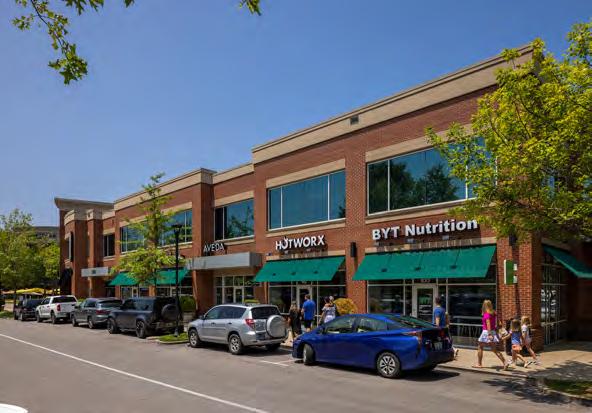
Development would soon begin on the site to create a completely walkable mixed-use campus that introduced retail, restaurants, three business class hotels, and more ‘Class A’ office space. With its central location and broad range of offerings, Meridian Cool Springs
would become the benchmark for mixed-use properties in the Cool Springs community. Large businesses noticed and soon wanted to call Meridian home, as well. This included tenants like Community Health Systems, Morgan Stanley, and Waste Management. By 2008, the Nashville
team would also move their permanent headquarters to Meridian where they reside to this day.
In 2006, the Donelson trade area of Nashville was in a state of regentrification. This area had earlier seen major development during the post-World War II era. As Nashville’s population and air travel increased, Donelson was considered highly desirable because of its proximity to downtown and the Nashville airport. Boyle was researching retail opportunities and decided to purchase an older center called The Crossings in Donelson, a Food Lion anchored center. It was located on Lebanon Pike, one of the busiest roads in Nashville. The team saw that the demographic changes occurring and accessibility of the site would lead to great long-term demand. Moreover, this project would allow Boyle to play out a major role in
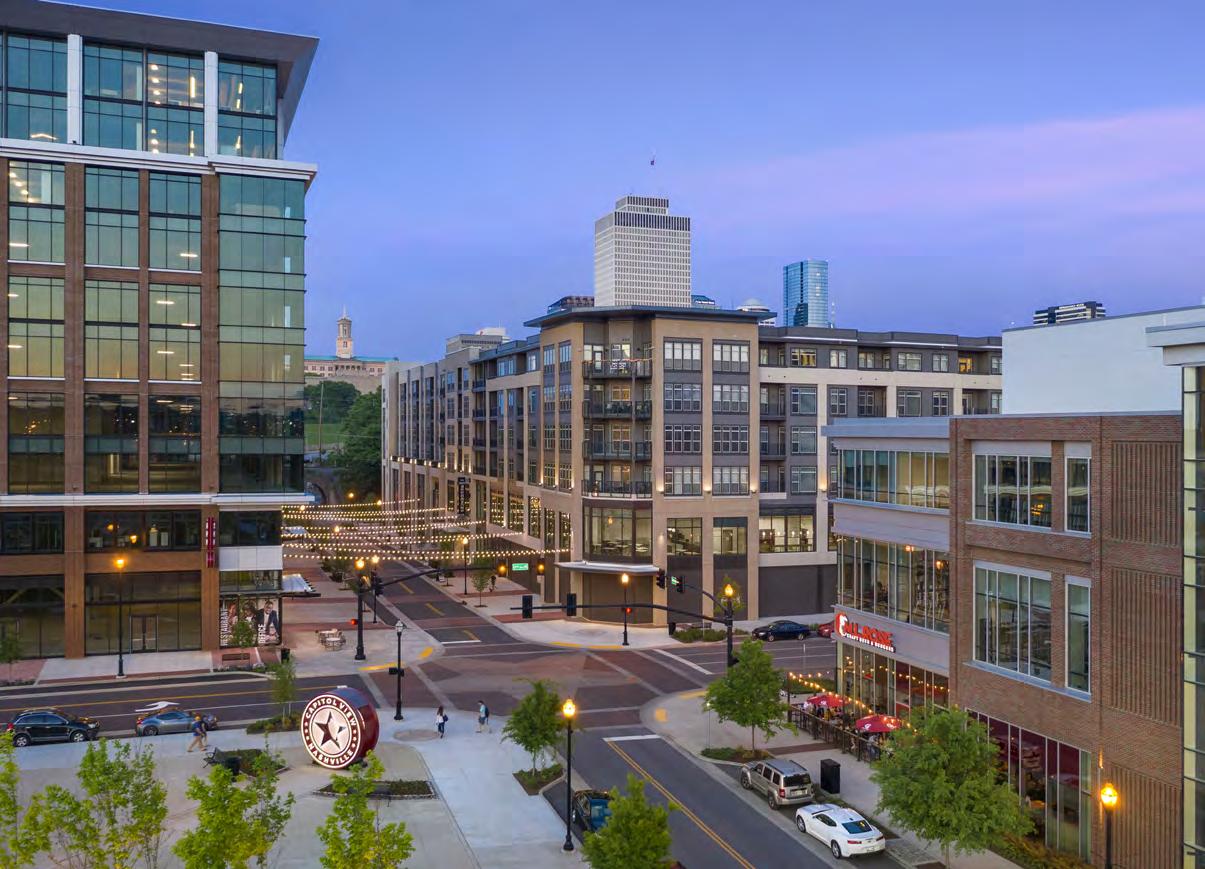
serving and transforming the Donelson area. Fawcett led the team and knew they could not achieve this goal unless they partnered with the right retailers. His focus was on Publix.
“Donelson was an evolving yet tight-knit community that was craving ‘Class A’ retail services,” said Fawcett. “Publix is consistently rated as one of the top supermarkets for customer service. Our commitment to bring in Publix and invest significantly to transform The Crossings into a new vibrant retail destination created the catalyst for redevelopment throughout Donelson.”
As the Global Financial Crisis caused many other developers to halt business in 2008, the opposite rang true for Boyle. Because of the Nashville team’s long-term mentality and the company’s access to capital, Boyle was able to take advantage of the market and
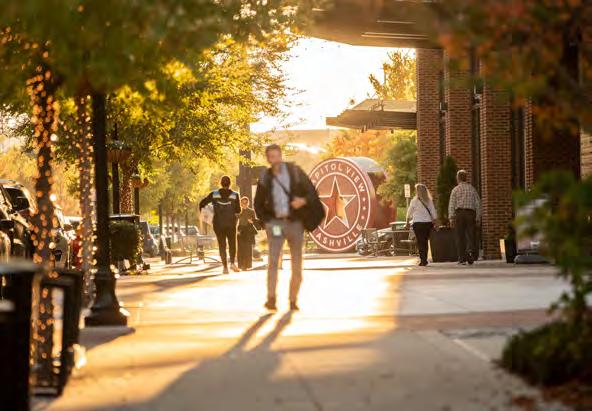
“We started this office on the foundation of faith, family, and community.”
— PHIL FAWCETT
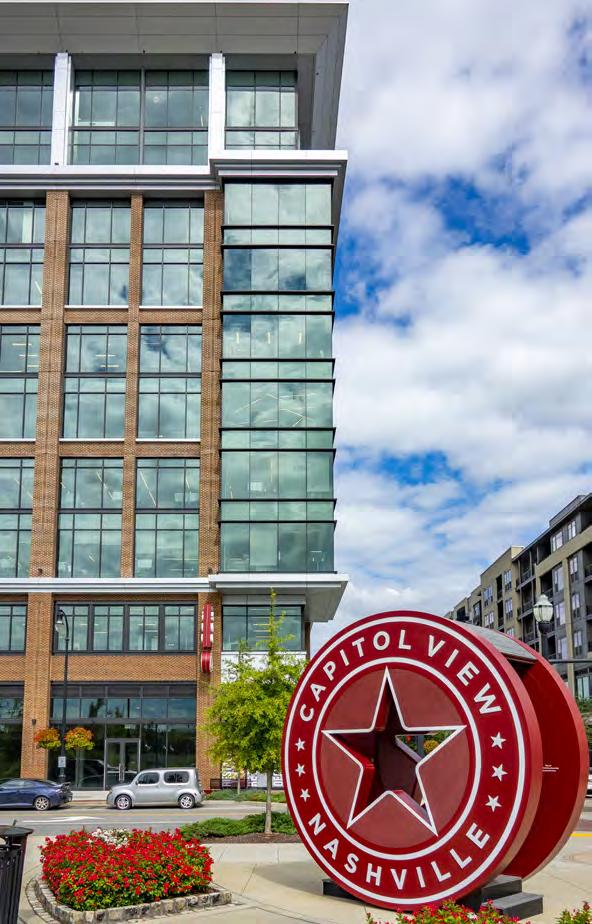
work with sellers to make strategic deals. This included purchasing a green field farm in Mt. Juliet that would be the future home to a Publix-anchored retail center named Providence Commons as well as an existing retail center in the prime location of Belle Meade named Lion’s Head Village. Both purchases expanded Boyle’s reach into submarkets that were difficult to penetrate and proved it could prosper regardless of the economic climate.
The next decade would set the stage for some of Boyle’s most dynamic Middle Tennessee developments. It started in 2011 with a special request from Northwestern Mutual to partner
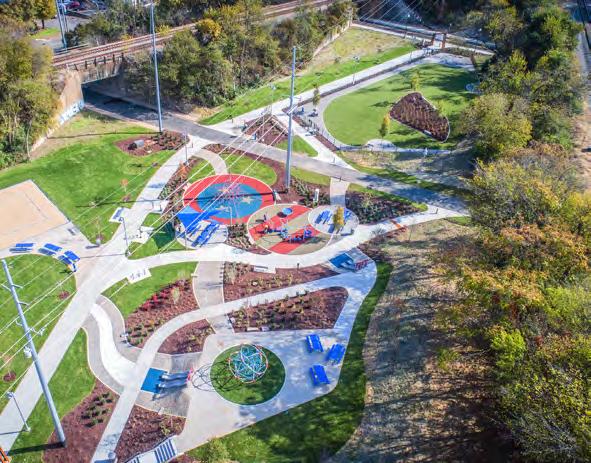

on developing a site in the North Gulch area of downtown Nashville called Capitol View. The site totaled 32 acres on the north side of Charlotte Avenue, giving the piece of land a very unique view of the state’s Capitol. The project, led by Jeff Haynes, was no small feat and the site could lend itself to many possibilities.
The Nashville Business Journal reported Haynes explaining, “We are not going to do anything that is a single-use plan. The site is too big. It’s too important. It’s too well-located. Our experience and forte is mixed-use. We are going to integrate different uses into the plan.”
Boyle’s foresight and ingenuity
would morph this project formerly known as Hells Half Acre into a walkable, dynamic, urban environment. In 2013, HCA caught wind of the pending excitement and wanted to be part of it. By the conclusion of the year, HCA had purchased 10.8 acres to accommodate the future home of its two subsidiaries, Parallon Business and Sarah Cannon Research Institute. HCA Chairman and CEO Richard Bracken told the Nashville Post, “We look forward to completing this project, which will promote the growth and development of the North Gulch area.” Included in the multi-use plan for Capitol View was luxury multi-family residential. The

“In real estate, sometimes the most challenging projects are fixing a project that’s broken, as opposed to developing a green field project.
Nashville team needed to create a partnership with a multi-family expert to help design, lease, and manage the future residential component. In 2014, they began interviewing and vetting partnership options and ultimately s elected Northwood Ravin, a leading full-service development, construction, and property management firm with a specialty in the multi-family space. The Boyle team felt Northwood Ravin understood the vision for Capitol View, and its prior relationship with Northwestern Mutual made it an easy decision.
As due diligence for Capitol View continued, an office development known as Synergy Business Park was sparking interest. The property featured eight buildings totaling 500,000 square feet across 33 acres along Franklin Road in Brentwood. In the years leading up to 2012, it had fallen from being once highly sought after by brokers and tenants to being neglected entirely. Meanwhile, Brent-
— THOMAS M c DANIEL
wood was the best performing submarket in Nashville, and this was Brentwood’s first and largest single project located right in the heart of town. The team, led by Thomas McDaniel, had a vision for Synergy Business Park that would transform the dying business park into a vibrant mixed-use community.
Boyle would close on the property within the year.
“I’m a contrarian by nature. I also like challenges,” McDaniel explains. “And in real estate, sometimes the most challenging projects are fixing a project that’s broken, as opposed to developing a green field project. It was those tendencies that got me most excited about Synergy Business Park.”
At the center of the development sat a Greek-revival-style h ome built in 1838 called the Mooreland Mansion. It was important to preserve this historic building, and as Boyle prioritized honoring the history of the site, it eventually became the focal point for the project. A retail village
setting that lined the boulevard leading to the Mooreland Mansion transformed the entrance to the property. To cater to the onsite office demand for hotel space, Boyle would also partner with Chartwell Hospitality to add a Hilton Garden Inn that wrapped around the rear of the mansion. Significant upgrades, including additional amenities, specialty retail, restaurants, welcoming open space, and walkability, created a meaningful change in scenery and use. Due to the existing perception of Synergy Business Park, the Nashville team decided the reimagined project needed a formal reintroduction into the market with a new name. Because of the heavy focus on central greenspace and creating a place for shared experiences, they landed on the name CityPark. The City of Brentwood’s new CityPark offers the ideal environment for the synergies that come from working and playing in closer proximity to the resources that foster productivity and connection.

In 2016, another unique opportunity was on the horizon for Boyle: 45 acres in the Cool Springs submarket of Franklin along West McEwen Drive was undeveloped and ready for purchase. The West Cool Springs area had a solid reputation for providing the best retail experiences in Franklin and Williamson County with mature developments like the Cool Springs Galleria already booming. However, true urban mixed-use and open-air centers had yet to be introduced on the West side of I-65 in Cool Springs.
Phil Fawcett saw this land as an opportunity to use Boyle’s specialty of creating mixed-use destinations to better serve this community. He also saw it as a chance to expand Boyle’s business with Northwood Investors and Northwood Ravin, who had partnered in Capitol View. Together, they embarked on a new vision for the property that would eventually include 740,000 square feet of ‘Class A’ office space, 126,000 square feet of ground floor retail and restaurant space, 770 upscale residential units, several onsite hotels, and thoughtfully programmed greenspaces.
Fawcett recalled the early days at McEwen Northside: “The Cool Springs community has experienced success with high-quality suburban-style development. Sometimes it is harder to transform a community that is suc -

cessful as compared to one that is re-gentrifying. Our research concluded that the community would embrace a new urban style experience that is walkable with a mix
“Donelson was an evolving yet tightknit community that was craving ‘Class A’ retail services.”
— PHIL FAWCETT
of uses and unique architecture.”
He continued, “We were challenged with bucking the market trend, site conditions that made it difficult to create walkability, and the cost to build such an environment. Thankfully, Northwood Investors and Northwood Ravin shared our vision and were committed to creating a premier mixed-use experience in Cool Springs.”
In the years following 2016, Capitol View saw a frenzy of development. The HCA partnership was realized, and their building opened in October of 2016. HCA’s office space sat atop 23,000 square
feet of ground floor retail and restaurant space that Boyle would merchandise and lease. It was followed by a land sale to Lifeway, and their ‘Class A’ office building would deliver a year later.
In 2018, The Residences at Capitol View, a 378-unit luxury apartment complex, opened. These units sat above 60,000 square feet of ground-floor retail anchored by a Publix Supermarket, the first downtown grocer introduced to the area. Because Boyle endeavored to extend the Nashville Greenway through the project, the new grocery store was easily accessible to all within walking distance of the North Gulch.
The year 2019 rounded out development in the Capitol View district with the completion of another ‘Class A’ office building containing 300,000 square feet with 24,000 square feet of ground floor retail and restaurant space flanked with an activated pocket park called Trolley Park. Boyle also executed a private-public partnership with Nashville Metro Parks and Recreation to develop a 2.5-acre park for the community called Frankie Pierce Park. Frankie Pierce Park includes a children’s play area, activity lawn, sand volleyball court, and a dog park. All these elements combined make Capitol View an urban destination with unmatched amenities and experiences.
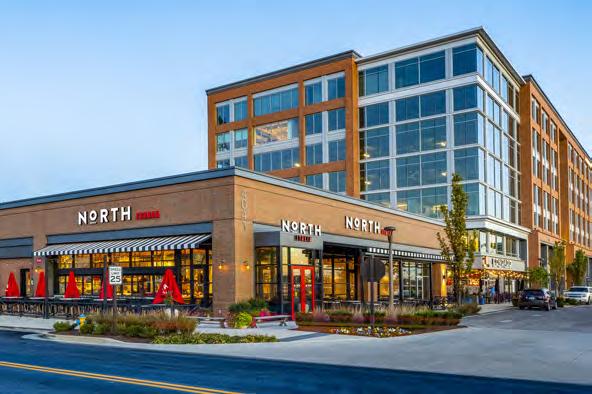
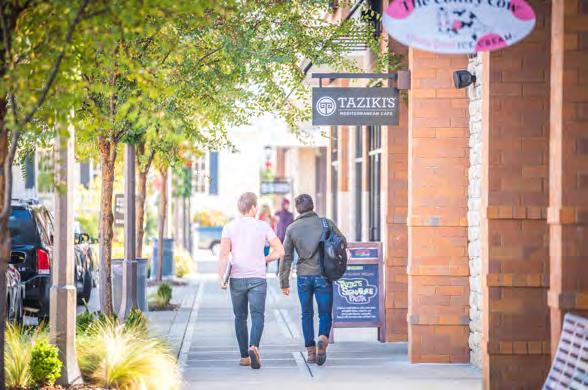
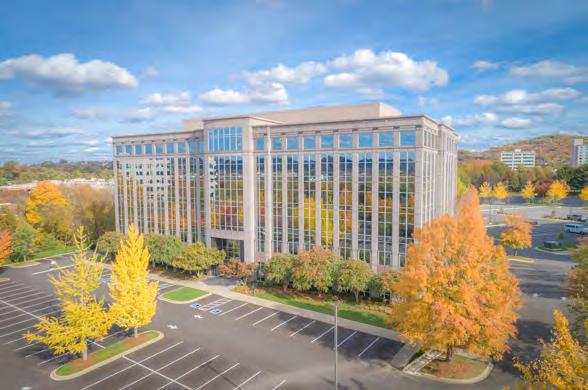

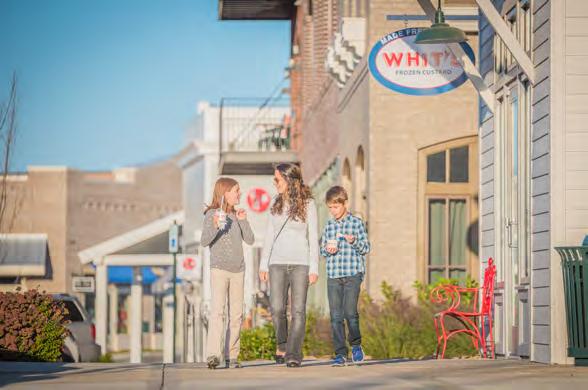

After years of infrastructure work, Berry Farms was finally seeing vertical change. By 2017, in addition to the residential neighborhood, 108,000 square feet of specialty retail and restaurant space had delivered in Rural Plains. This also included a Publix-anchored shopping center.
Because of the walkable amenities and front-porch feel of Berry Farms, the surrounding single family residential lots quickly sold. Families weren’t the only ones who wanted to call this unique neighborhood home. Large corporations, such as Trexis Insurance, Ramsey Solutions, Crestmark, Aetna, and Lee Company, also wanted to headquarter at Berry Farms. This led to the delivery of three ‘Class A’ office buildings to accommodate growing interest in this area of south Franklin. The only piece missing at Berry Farms was Town Center — a connection point for a vibrant mix of uses that is thoughtfully designed to
Large corporations, such as Trexis Insurance, Ramsey Solutions, Crestmark, Aetna, and Lee Company, wanted to headquarter at Berry Farms.
encourage human connection.
Phase I Town Center delivered 2021 and spanned 331 luxury multifamily units over eight individually designed buildings offering walkable amenities that cannot be found elsewhere in Franklin. Town Center also introduced 30,000 square feet of ground floor retail and restaurant space to better serve the community. Today, Berry Farms represents a new, classic way of living, working and playing that not only changes how a planned community looks, but how it feels.
Tyler Berry reflected on his experience working with Boyle at Berry Farms. “I never could have imagined or hoped to be associated with a better group of people over the last several years,“ he said. “The Boyle team has exhibited commitment, professionalism, and patience in a way that has been incredibly valuable to our partnership. All Boyle has done, and continues to do, has made it


possible for my family to realize a dream we have fostered along literally for decades. We are grateful to Boyle and honored to be associated with all of you.”
In 2020, McEwen Northside would take shape with the delivery of the first ‘Class A’ office building anchored by Mitsubishi North America with ground floor retail, the McEwen Northside Apartments, and two jewel box buildings that lined beautifully programmed greenspace. To accommodate McEwen Northside’s demand for retail and office space, another ‘Class A’ office building with ground floor retail delivered in 2023 anchored by Omnia Partners. First to market restaurants and services like Perry’s Steakhouse, Vintage Vine 100, Jeni’s I ce Cream, Club Pilates, and North Italia blended with urban walkability, have made McEwen Northside a local hot spot.
Boyle’s most recent years in
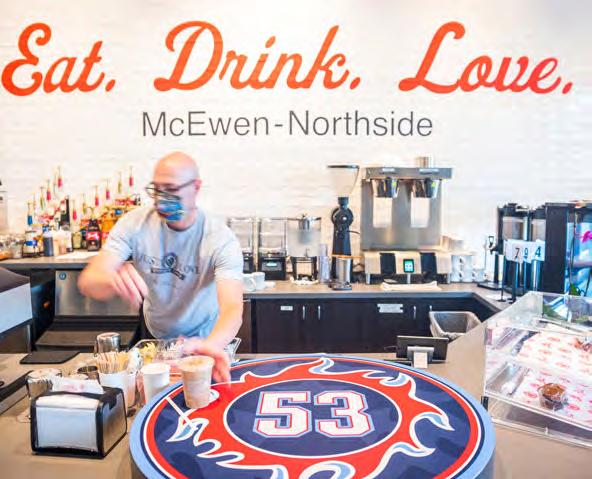

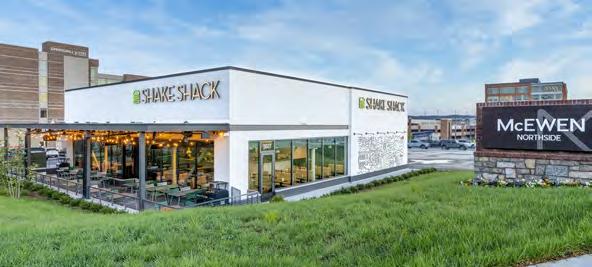
Phase I Town Center delivered in 2021 and spanned 331 luxury multifamily units over eight individually designed buildings, offering walkable amenities that cannot be found elsewhere in Franklin.
Nashville have been some of the busiest yet. When thinking back to its 22 years in business, Phil Fawcett cannot help but attribute most of Boyle’s success in Nashville to the culture, commitment, and integrity of the team he and Jeff Haynes have built together. He explained, “We started this office on the foundation of faith, family, and community. As our team grew, we knew that we wanted to bring in experts to build communities that inspire connection and stand the test of time. We encourage our team with the autonomy to utilize their talents, to be creative, and to be a meaningful part of a meaningful team. Our employees show great stewardship to our mission as community builders, and we could not have accomplished the quality of projects, growth in business, and impact within the Nashville community without their passion and commitment.”



“Our business philosophy has always been to be true to our word, to honor any commitments made, and to hire the best people we could find — with special attention to the quality of their character, their intellect, and the enthusiasm and interest in whatever activity we were hiring them for.”
— Bayard Boyle, Jr., Chairman Emeritus (with Henry Morgan, Sr.)
In the dynamic world of real estate, only a few companies can boast a legacy of success spanning nine decades. Having endured the Great Depression, two world wars, and innumerable recessions, Boyle Investment Company stands proudly among these rare few, as we celebrate our 90th year of creating exceptional communities.
Over the past nine decades, Boyle has greatly expanded its operations, and today the company’s impact on the Memphis and Nashville regions is remarkable, having created housing for approximately 10,000 families and developing more than 12 million square feet of retail, office, and industrial space. With an unwavering commitment to innovation, sustainability, and customer satisfaction, Boyle has set new standards for what it means to build environments where families flourish, dreams come alive, and businesses thrive.
Back in 1933, when J. Bayard Boyle, Sr. and his two brothers started the company, Bayard Boyle envisioned more than just buildings and structures. He understood that real estate had the power to shape lives, foster communities, and create lasting memories. With a passion for blending functionality, aesthetics, and environmental sensitivity, he set out to develop communities that would transcend mere buildings and provide individuals with a platform to live their best lives.

“Wth an unwavering commitment to innovation, sustainability, and customer satisfaction, Boyle has set new standards for what it means to build environments where families flourish, dreams come alive, and businesses thrive.”
— MATT HAYDEN
Ninety years later, Boyle Investment Company has become synonymous with excellence in all phases of the real estate profession. Matt Hayden shared, “Our success lies in unwavering commitment to creating spaces that stand the test of time and cater to the diverse needs of modern society. A community’s success is not measured solely by the quality of its edifices, but also by the sense of place it instills in its residents.
“Children are our future, and residential communities must be designed to help them grow into well-rounded individuals.
Neighborhoods need extensive green spaces and playgrounds, encouraging children to engage in physical activities while fostering a spirit of community.”
Going forward, Boyle will continue to craft communities that cater to a wide range of aspirations. Boyle offers a variety of options, from upscale apartments to walkable mixeduse communities with a variety of housing types. Its team of architects and designers work diligently to create timeless places that blend contemporary and historical aesthetics with functional designs, ensuring an
unparalleled quality of life and satisfaction for residents.
In today’s fast-paced business world, professionals are seeking environments that support work-life integration. Communities must offer facilities that go beyond conventional office spaces. Work environments must be created that foster creativity, collaboration, and employee well-being. Commercial developments need to be strategically located within walking distance of vibrant restaurant districts and shopping hubs, providing office tenants with a plethora of options for networking, dining,

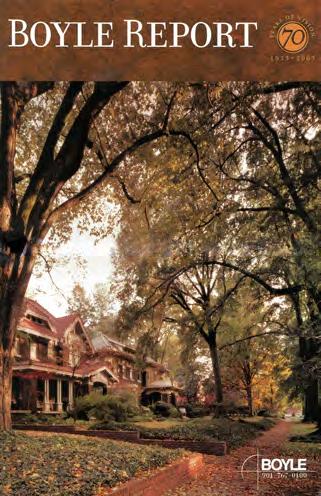




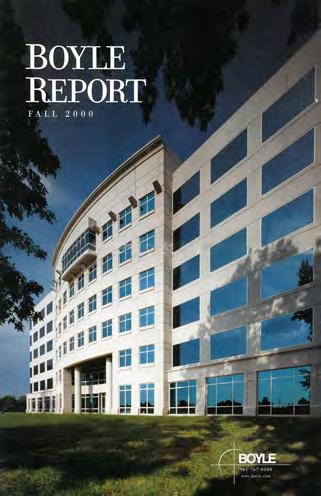
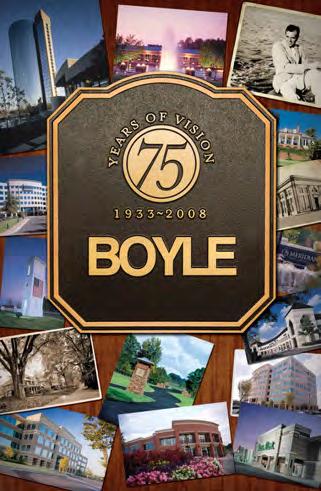


and recreational activities.
Boyle’s commitment to creating truly great places means t houghtful care of the natural environment of a site, with a particular emphasis on tree preservation, landscape enhancement, and energy-efficient designs that will not quickly become obsolete. In the coming decade, Boyle will give even more attention to designing neighborhoods and communities where pleasant walks and trails thread throughout and traffic is kept at a minimum. Quoting Christopher Alexander, “a world in which the fine adaptation between people and their buildings and gardens and streets is so subtle, goes so deeply to the core of human experience, that the people who then live and work and play in that environment feel as if they belong there,
as if it belongs to them, as if they are part of it, as if, like an old shoe, it is completely and utterly theirs.”
As Boyle celebrates 90 years of building community, the Boyle and Morgan families take immense pride in its world-class
ue beyond our lifetimes. A key part of accomplishing this is to employ, encourage, and incentivize young employees to maintain the same quality of work, and display the same type of commitment as our predecessors.”
“Looking ahead, we will continue to push boundaries, embrace innovation, and create environments that shape a brighter future for everyone.”
— MATT HAYDEN, CEO
staff and the countless lives they have touched along the way. Although President and CEO Matt Hayden may be considered a relative newcomer compared to some of the employees discussed previously, who have devoted much of their lifetimes to the firm, he shares their same goals: “I want this company to contin -
Boyle’s commitment to building communities where families can grow, individuals can live their dreams, and businesses can thrive remains at the core of its values.
As Matt Hayden reflected, “Looking ahead, we will continue to push boundaries, embrace innovation, and create environments that shape a brighter future for everyone. Hopefully, new generations will join us on this remarkable journey as we set forth into a future filled with endless possibilities.”
With the perspective of nearly a century of development, we are committed to a real estate investment philosophy that improves our overall communities, minimizes risk, and maximizes profits. Ideally:
1 We want a property that will do well without us, but will do even better with us. We are not looking for lemons to turn into lemonade.
2 In the early 1980s we refined a concept we call “critical mass real estate” — properties that are so situated or positioned that their very size, composition, and location make it very hard for other properties to compete. We try to restrict our activity to those types of property.
3 From an investment and developmental point of view, rarely do three or more variables really count. We seek to identify for each property those key value assets and then unlock them.
4 Every strategic property has a “story” which we must uncover, refine, develop, and enhance. To be valueadded, this process takes imagination, insight, talent, and skill. For this reason, we must keep a “deep bench” of the top professionals on staff and hire the same quality as consultants. Long-term, we believe this increases profits while at the same time reducing risk.
5
There are as many intrinsic values for a property as there are development concepts. The task of the real estate professional is to identify the development concept that creates the greatest underlying value. Few, if any, normal practitioners recognize this important issue. We, on the other hand, spend months in the concept’s analysis phase, and employ a proprietary computer optimization program to help identify the optimum development scenario from a return point of view.
6
We want a crack at every good use opportunity that surfaces. For this reason we want to have strategic properties clustered in the very best locations where we can expect opportunity to knock — where all of our properties can chase each opportunity. In the end, we know the customer must and will make the final choice. We want, however, for the customer to have wellselected alternatives on each of our applicable properties that are thoughtfully and skillfully priced. We prefer to compete on quality and service rather than price.
7
It is critical that we avoid creating “commodity” products that are indistinguishable from the products of others in the marketplace. Commodity products compete on price, and competition will drive down the margins as time passes. Rather, we would like to create such unique and value-added commercial and residential communities that we avoid comparison, and thus have a significant pricing edge. Even more important is creating communities that avoid obsolescence and endure the test of time.
8
We are committed to maintaining a strong balance sheet, with conservative debt levels and adequate capital. This philosophy is essential in periods of both prosperity and economic instability. Poorly capitalized developers and developments often suffer economic difficulty that negatively affects their customers when the economy turns south.
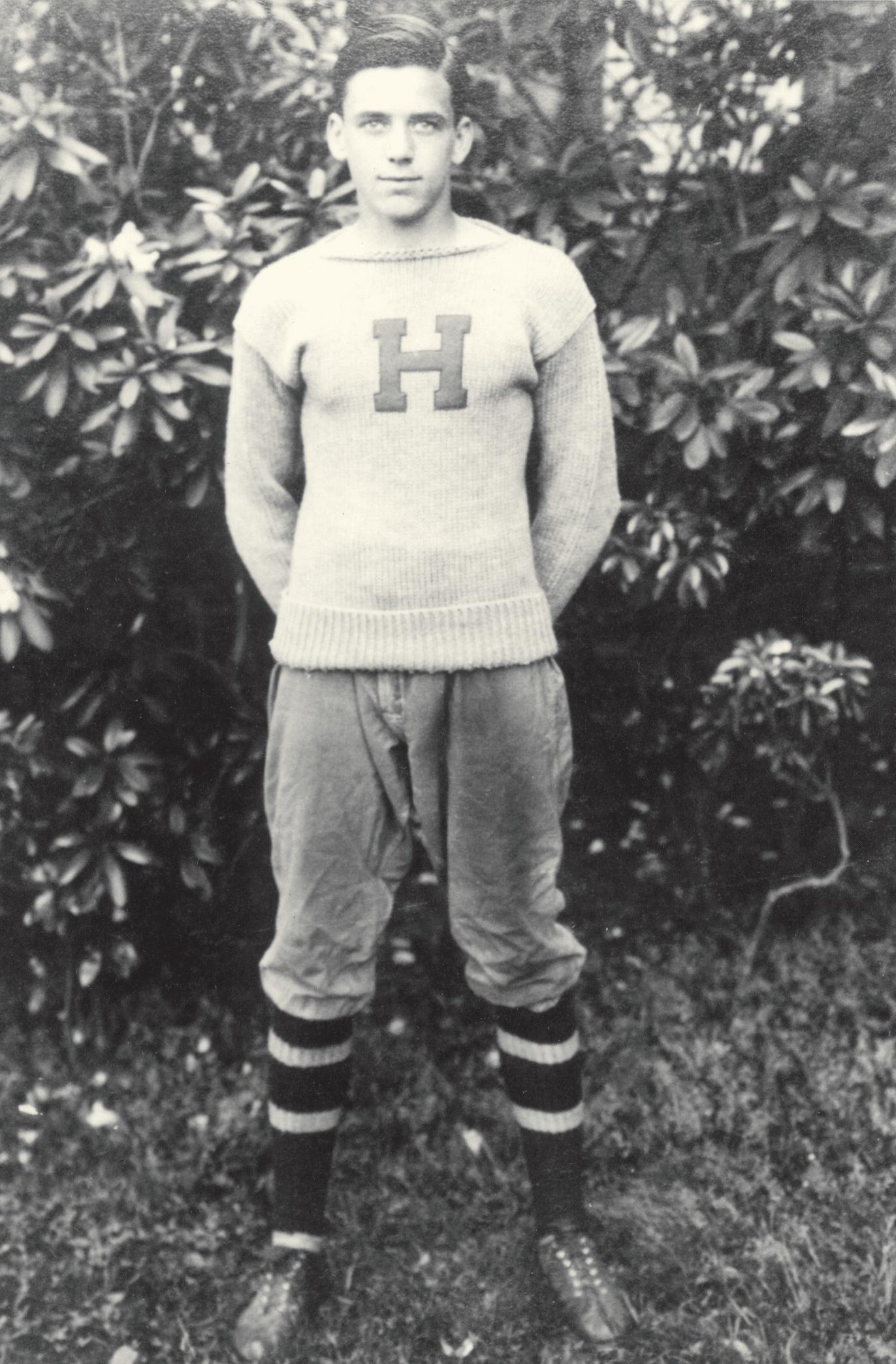
Having spent many thousand delightful hours with my father over 50+ years, I knew him better than any of those quoted in this book. Remarkably, all these quotes describing his honorable character, business foresight, and personality are quite accurate. He was almost too good to be true, a genuine man in full in a much more admirable way than the chief character in Tom Wolfe’s book with that title. He shared two qualities with my wife: He could come into a room and really light things up, and he was a very keen judge of character. He was one of the most delightful people to be with because he had a genuine zest for life, an amazing sense of humor, and he had a very unique quality of being able to laugh at himself when he made a mistake (of less than major consequence) seemingly in a delighted way. He treated everyone with respect, unless they proved themselves unworthy of it. Anyone who tried to bully him or take advantage of him soon found they had bitten off more than they could chew. He was remarkably courteous and someone who could handle almost any situation with grace. He was very graceful in his athletic ability and in his personal interactions with other people.
Our business philosophy has always been to be true to our word, to honor any commitments made, and to hire the best people we could find with special attention to the quality of their character, their intellect, and the enthusiasm and interest in whatever activity we were hiring them for. Coupled with this we have always tried to be diligent in analyzing risk/reward ratios and in making sure that we had enough reserves to survive any unforeseen reverses that might occur.

BOYLE INVESTMENT COMPANY — THE MEMPHIS TEAM
Jeff Aldridge, Laura Armstrong, Darell Baptist, Kelly Barlow, Lauren Barnett, David Bassham, Les Binkley, Rusty Bloodworth, Bayard Boyle, Jr., Paul Boyle, Anne Brand, Joel Brown, Chris Bullock, Elizabeth Burk, Nat Chastain, Roy Cherry, Rachel Claiborne, Carol Clark, Donnie Coln, Gary Douglas,
“We have been blessed in having so many fine employees who have stayed with us for many years until their retirement.”
— BAYARD BOYLE, JR.
Jamie Dye, Allyson Eller, Bayard Erb, Loflin Falls, Dena Forbes, Karen Foster, Joel Fulmer, Ron Gant, Cindi Gresham, Rocky Gresham, David Gribble, Cindy Guidry, Kary Haines, Terron Hale, Mark Halperin, Matt Hayden, Kristin Hockenbroch, Brenda Hohorst, Jerralee Hopper, Mary Huling, Tom Hutton , Debbie James, Greg James, Ashley Jamieson, Robert Jones,
My son, Paul, who is now chairman, has a philosophy that if we take care of our people and are really interested in their welfare and success that they will take care of us. This has the added advantage of being the right thing to do and makes running the business a lot more fun than total focus just on the bottom line. We try to hire people who will work well with each other and enjoy working out problems as a team. We try to have most of our employees enjoy the relationship they have with those they work with most closely, which both helps them be more productive and gives more meaning to their lives.
I have been very fortunate to work alongside my brother-inlaw, Henry Morgan, and his family for nearly sixty years. Besides being a pleasure to work with, Henry has excellent judgment on business investments and on those rare occasions when we have disagreed he has turned out to be right more often than not. It has been wonderful to have a partnership with someone who shares your philosophy about the
Mary Kyle, Kathy Langston, Dannie Lee, Bo Lessley, Dana Lindsey, Jud Lindsey, Theresa Locastro, Sally Mattis, Wanda Martz, Linda McClure, Kelly McDonald, Noah McKinney, Michelle McManus, Sharon Mitchell-Cocita, Kim Moore, Nick Moorehead, Bayard Morgan, Henry Morgan, Henry Morgan, Jr., Garrett Moss, Harold Moss, Caitlin NoelUlmer, Kathy O’Daniel, Carol
type of people you want working at the company as well as about ethical principles generally.
Few things in life are more rewarding for a father than to have his son take over the guidance of a family business that he has spent most of his life helping build. Paul is very fortunate in having his two cousins, Bayard and Henry Morgan, ably assist him in this effort as partners and co-owners.
We have been blessed in having so many fine employees who have stayed with us for many years until their retirement. John Stone ran our mortgage department for years and when we sold the mortgage company, he ran the residential land development and lot sales division. It was a great fit because he already had the relationship with so many homebuilders because he had financed their homebuilding operations and arranged mortgages for their customers.
Charles Claiborne, with the able assistance of Debbie Shelton, ran our accounting operations for years and did an impeccable job of both keeping up with the numbers accurately and managing the
Osbourn, Kim Pace, Kathy Pampuro, Daniel Parker, Steve Peay, Linda Pierson, Clark Powers, Jeff Puckett, Nikki Reeder, Robert Roll, Kayla Scott, Debbie Shelton, Michelle Sjoblom, Kim Stubblefield, Zach Terhune, Gary Thompson, Jim Toner, Connor Trahan, Tim Treadwell, David Wages, Jason Walters, Keith Ward, Cary Whitehead, Jo Wicker, and Jane Wilson
employees of the department in a way to get the best out of everybody while maintaining a congenial group working relationship.
Rusty Bloodworth has been responsible for the initiation and design of so many of our projects. We would be an entirely different company and much less successful without his extraordinary contributions. Rusty is something of a polymath, having an amazing grasp of architecture, land planning, community planning, master planned large scale development, etc. While being an evangelical Christian, he has a wealth of knowledge about both Catholicism and Judaism. He is also an accomplished watercolorist and very knowledgeable about classical music and many other disciplines.
Similarly, Mark Halperin has led the office leasing and management team ever since he graduated college and is responsible for office development and ownership being the most important of our activities. Mark has been the leading office real estate leasing agent in the Memphis market
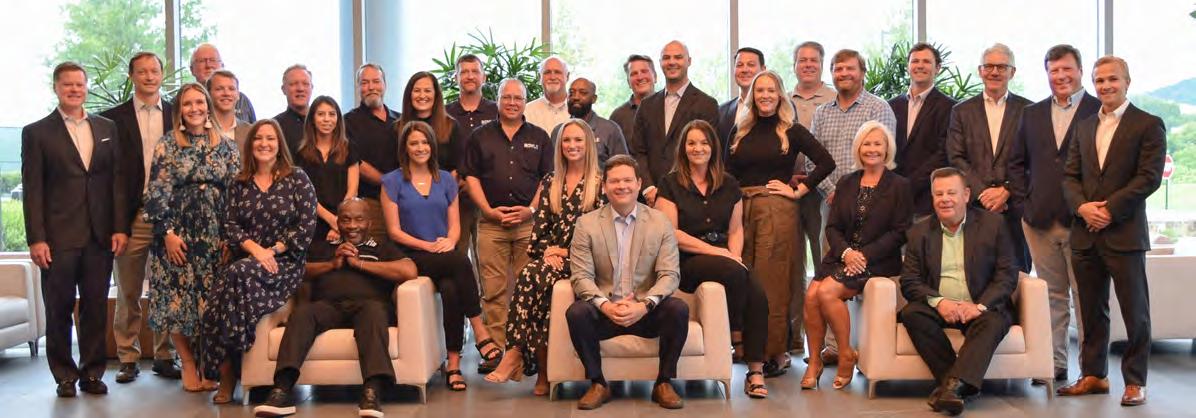
for decades and has the ability to cultivate relationships and manage people so well that he can sometimes pull off the seemingly impossible. He managed recently to place three major tenants, Thomas and Betts, Sedgwick, and ServiceMaster, in a space-swapping arrangement that worked out perfectly for each. Mark has been president of Temple Israel and on the national board of Reform Judaism.
In addition to being great employees and partners, both Rusty and Mark have major ownership in the projects they have developed and are close friends and great advisors about both business and personal matters.
Mentioned elsewhere are some of the contributions Ed Sapinsley and Albert Fulmer made with their vision and land purchasing skills. Sapinsley was responsible for our acquisition of Ridgeway Country Club whose purchase started our key office development operations.
One of our most fortunate moves was the formation of a Nashville partnership with Jeff Haynes and Phil Fawcett, for which Mark Halperin was responsible through his friendship with Jeff Haynes. They have built an amazingly competent team of professional real estate developers and managers. In 21 years they have become one of the most prominent and successful development, leasing and management teams in the Nashville metropolitan market, and created one of the largest property portfolios in that market. We have four partners, Phil, Jeff, Mark Traylor, and Thomas McDaniel. Thomas is
probably Nashville’s leading office leaser/developer and is highly respected by everyone. Mark is our top retail professional. They have built a team of 34 people who work exceptionally well together with a lot of esprit de corps. You can walk into that office and tell they like what they are doing, enjoy and respect each other, and are proud of their work. They have become the most imaginative and successful mixed-use developers in the market.
We have many admirable people in our Nashville office but the one I know best is the team leader, Phil Fawcett. Phil has a very unassuming manner and a razor-keen mind. He has a remarkable sense of fairness and is a great mentor for others in the office as is his partner Jeff Haynes. They seem to have a gift for fitting everybody into the right slots that fit their individual talents and creating an atmosphere where they all work to support each other’s strengths. This is all borne out by the success of the team they have built. Phil is an extraordinarily honorable individual and has a great sense of how to recognize and assess profitable opportunities. He is unique in having such a carefully balanced ego that he can manage stressful negotiations without ever letting emotion interfere with his judgment. Jeff Haynes has an exceptional ability to find good opportunities and to work through to completion deals that often seemed impossible to conclude successfully
For more than forty years, Woods Weathersby has guided us legally and strategically, working tirelessly and with extraordinary
diplomacy, with our partners, lenders, and staff to see that every project is properly structured and well thought through. He has been a great friend, as well as a vital corporate asset.
An extremely important event was hiring Matt Hayden. Charles Claiborne, our chief financial officer, wanted to retire and Kathy Pampuro, Mark Halperin’s partner in office leasing and a top agent herself, called Matt to ask if he knew anyone we might approach for the job. She and Matt were both from Caruthersville, Missouri, and their families had known each other for years. Matt said he might be interested himself and we were able to hire him to take Claiborne’s place. Matt quickly proved he had more comprehensive business skills than just keeping up with the numbers. Over the nine years he has been with us Matt has taken on more and more of general company management, becoming co-chief operating officer with Mark Halperin in 2019 and president & CEO in 2022.
Matt has a comprehensive grasp of all the company activities both in Memphis and Nashville. I have never asked him a question about our business and found him not up to date on what is going on in that activity. In addition to his remarkable business acumen, Matt has a very gentle way of handling people. Those who work directly with him realize he cares about them and has their best interest in mind so he is widely respected. He has a basic sense of fairness and the judgment to see just where the line should be drawn.
BOYLE INVESTMENT COMPANY — THE NASHVILLE TEAM
Jamie Adams, Adam Ballish, Michael Bates, Rieves Berry, John Buck, Lizzeth Castro, Steve Coles, Jack Davidson, Chad Dickerson, Joe Eckhart, Kristen Elder, Phil Fawcett, Habtu Gebregiorgis, Lisa Gregory, John Harlin, Jeff Haynes, Charles Holland, Logan Hughes, Brent Janan, Grant Kinnett, Rayphield Knox, Holt Madden, Tayler McCloud, Thomas McDaniel, Everett Miller, Perry Miller, Marina Murphy, Billy Newman, Kent Smith, Ashley Torres, Mark Traylor, and Gary Wey
BOOKS
Capers, Gerald. The Biography of a River Town, 1966
Coppock, Paul R. Paul Coppock’s Mid-South, Volumes 1-4. Edited by Helen M. Coppock and Charles Crawford. The Paul R. Coppock Historical Trust, 1985-1994
Coppock, Paul R. Memphis Sketches. Friends of the Memphis and Shelby County Library, 1976
Crawford, Charles. Yesterday’s Memphis. E.A. Seamann Publishing, Inc., 1976
Harkins, John. Metropolis of the American Nile: Memphis and Shelby County. Guild Bindery Press, 1982
Johnson, Eugene J. and Robert D. Russell, Jr. Memphis: An Architectural Guide. The University of Tennessee Press, 1990
Keyes, May Apperson. Belvedere and Other Places. C.A. Davis Printing Co., 1997
Roper, James. The Founding of Memphis. Memphis Sesquicentennial, Inc., 1970
The First 150: The First Tennessee Story, 2014
Issues of the Boyle Report. Published by Boyle Investment Company.
The Commercial Appeal, the Memphis Press-Scimitar, the Memphis Daily Appeal, and other newspapers archived in the Memphis and Shelby County Room of the Benjamin L. Hooks Central Library.
Memphis Magazine, published by Contemporary Media, Inc.
G. Wayne Dowdy and the staff of the Memphis and Shelby County Room, Benjamin L. Hooks Central Library.
P.O. Box 1738, Memphis, TN 38101
CONTEMPORARY-MEDIA.COM
Anna Traverse Fogle
CEO AND E DITOR - I N - Ch I E f
Michael Finger
Ex E C u T I v E E DITOR
Brian Groppe
C RE ATI v E DI RECTOR
Frank Murtaugh
M A NAgI Ng E DITOR
Jeffrey Goldberg
Ch I E f R E v EN u E Off ICER


